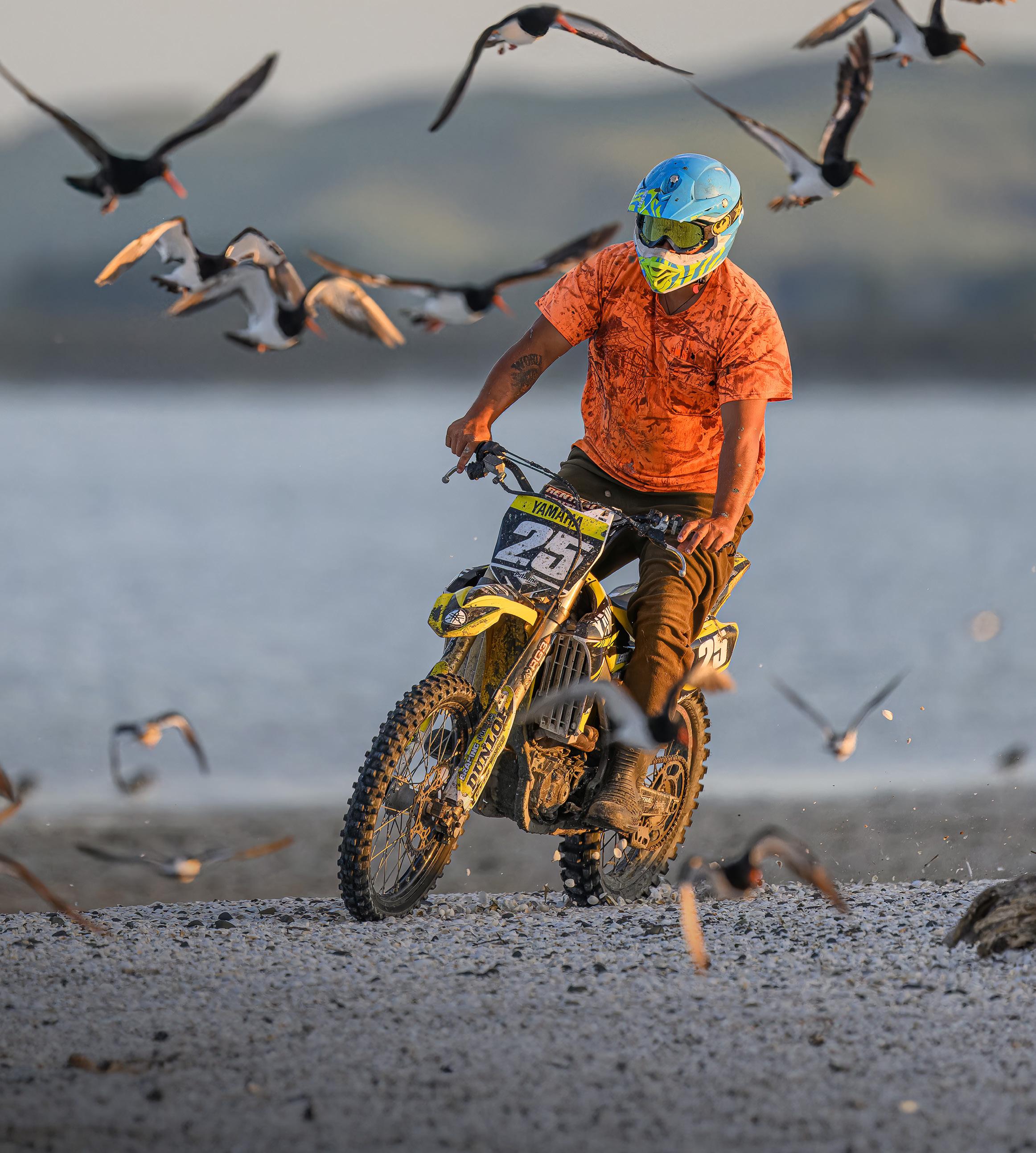

NEW ZEALAND’S INDEPENDENT VOICE FOR NATURE • EST. 1923
RESTORING wetlands ŌTARI-WILTON WONDERS TE REO O TE TAIAO № 391 AUTUMN 2024
DRIVING OUT NATURE NO NEW MINES
2
4
6
8
9
10
11
12
15
18
21
22
26
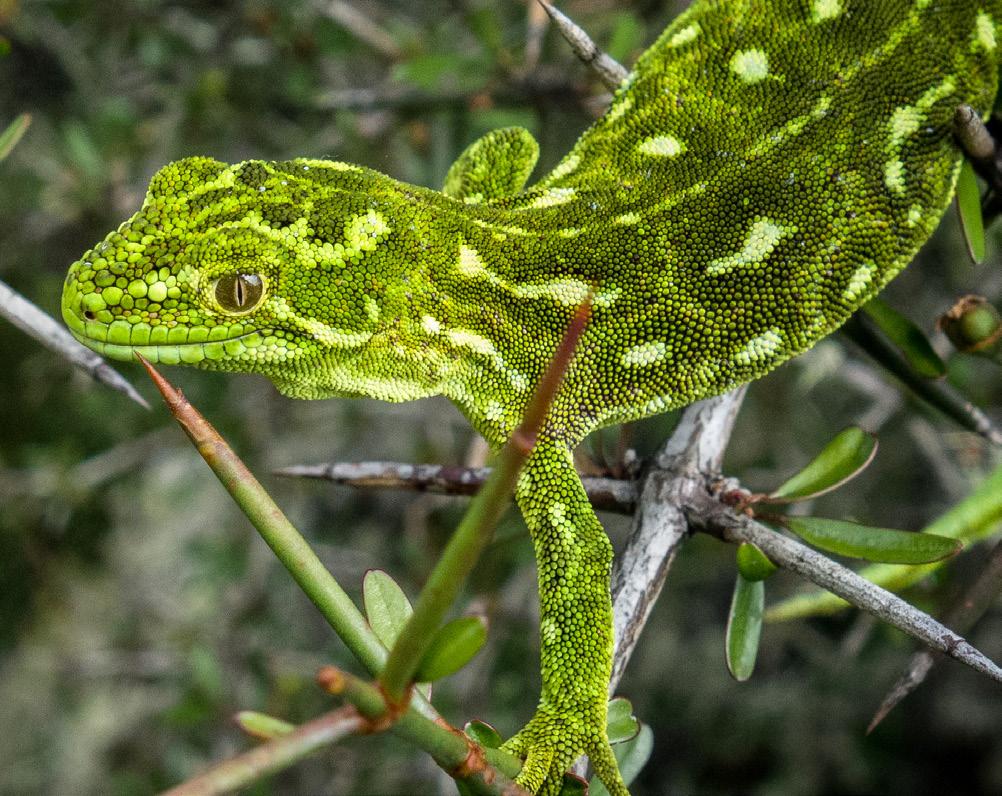
COVER SHOT Motorbike Pūkorokoro Miranda Shorebird Centre (see page 12).
Tony Whitehead
PAPER ENVELOPE Pūteketeke Australasian crested grebe. Leanne Buchan
RENEWAL Mairehau (Leionema nudum). Bryce McQuillan
EDITOR Caroline Wood E editor@forestandbird.org.nz
28
36
30
32
34
35

Thank you for supporting us! Forest & Bird is New Zealand’s largest and oldest independent conservation charity.
ART DIRECTOR/DESIGNER Rob Di Leva, Dileva Design E rob@dileva.co.nz
PRINTING Webstar www.webstar.co.nz
PROOFREADER David Cauchi
ADVERTISING ENQUIRIES Karen Condon T 0275 420 338 E karen.condon@xtra.co.nz
MEMBERSHIP & CIRCULATION T 0800 200 064 E membership@forestandbird.org.nz
Forest & Bird is published quarterly by the Royal Forest and Bird Protection Society of New Zealand Inc. Registered at PO Headquarters, Wellington, as a magazine. ISSN 0015-7384 (Print), ISSN 2624-1307

Join today at www.forestandbird.org.nz/joinus or email membership@forestandbird.org.nz or call 0800 200 064
Every member receives four copies of Forest & Bird magazine a year.

Forest & Bird is printed on elemental chlorine-free paper made from FSC® certified wood fibre and pulp from responsible sources.
(Online). Copyright: All rights reserved. Opinions expressed by contributors in the magazine are not necessarily those of Forest & Bird. Contents ISSUE 391 • Autumn 2024 Editorial
Save our seas
Letters + competition winners News
100 Years & Counting
Forest & Bird’s priorities 2024
7
Million dollar winner
War on nature
Free trade risk, Dome dump legal appeal
Our tāiko treasure, seeking Forest & Bird heroes Cover
Driving out nature
Turning the tide No new mines
Denniston in danger (again) Marine
One shell of a mystery
Sediment at sea Community
52
Ōtari-Wilton’s Bush our national plant museum
People and plants: A shared vision Climate
Solar farms in the Mackenzie
Conservation’s plastic problem Opinion
Planning for extinction Freshwater
On-farm constructed wetlands
Biodiversity benefits Research
Kea between the pines 18 40
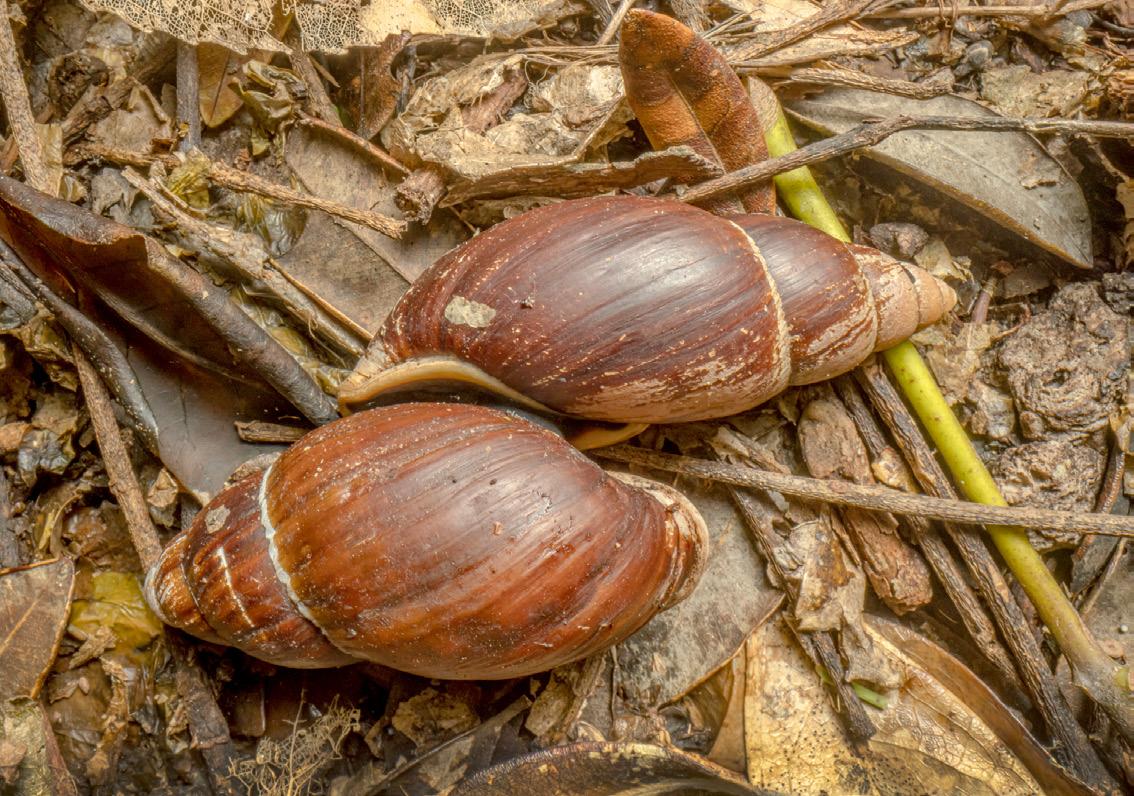



PATRON
is a registered charitable entity under the Charities
Royal Forest and Bird Protection Society of New Zealand Inc. Forest & Bird
Act 2005. Registration No CC26943.
Her Excellency
MEMBERS
Bruce
Kaya Freeman,
CONSERVATION AMBASSADORS Sir Alan Mark, Gerry McSweeney, Craig
LIFE MEMBERS
Bellamy, Linda Conning, Ann and Basil Graeme, Philip Hart, Joan Leckie, Hon. Sandra Lee-Vercoe, Carole
Peter Maddison, Sir Alan Mark, Gerry McSweeney, Craig Potton, Fraser Ross, Eugenie
Guy Salmon CONTACT NATIONAL OFFICE Forest & Bird National Office Ground Floor, 205 Victoria Street Wellington 6011 PO Box 631, Wellington 6140 T 0800 200 064 or 04 385 7374 E office@forestandbird.org.nz W www.forestandbird.org.nz www.facebook.com/ ForestandBird www.youtube.com/ forestandbird @Forest_and_Bird @forestandbird CONTACT A BRANCH See www.forestandbird.org.nz/ branches for a full list of our 50 Forest & Bird branches. Centennial stories 38 26 NZ exhibition 39 Ark in the Park 40 Blowhard Bush 41 Calder Green 42 Fensham Reserve Branch 43 Marine reserve scholarshiops In the field 44 Mauao is my mountain Economy 47 Is your Kiwisaver killing the climate? Biodiversity 48 Rare fossil find Our partners 51 Travel for good Predator-free NZ 54 Historic attitudes to the “cat menace” 57 10 Reasons to back the Cat Management Act Going places 58 Cabo Pulmo National Marine Park, Mexico Obituary 60 Mike Collins: Man of integrity Books
Round up of new nature titles Market place
Classifieds Last word 64 Find-A-Pest Parting shot IBC TBC 58 50
The Rt Honourable Dame Cindy Kiro, GNZM, QSO Governor-General of New Zealand CHIEF EXECUTIVE Nicola Toki PRESIDENT Mark Hanger TREASURER Alan Chow BOARD
Chris Barker,
Clarkson,
Kate Graeme, Ben Kepes, Vanessa Macdonald, Nigel Thomson
Potton DISTINGUISHED
Graham
Long,
Sage,
61
62
SAVE OUR SEAS
Forest & Bird has been hugely influential in protecting the forests of Aotearoa, and we can be immensely proud of what our predecessors achieved. Thanks to them, we can enjoy places such as the magnificent Waikūkūpa Forest in Te Wāhipounamu World Heritage Area, one of the last remaining areas of pristine temperate rainforest in the Southern Hemisphere.
It took huge courage and grit to secure 30% of our whenua under the Conservation Act 1987. Looking ahead to our second century, the challenges are even greater. Not only must we continue to be the guardians for the terrestrial biodiversity of Aotearoa, we must also be a strong advocate for our marine environment. We need to properly protect 30% of our oceans to provide for a healthy future for all living things on Earth.
Charles Darwin recognised just how important these marine habitats were when he saw the giant kelp forests in the southern hemisphere. “I can only compare these great aquatic forests… with the terrestrial ones in the intertropical regions. Yet if in any country a forest was destroyed, I do not believe nearly so many species of animals would perish as would here, from the destruction of the kelp.”
We need to heed Darwin’s words as our oceans heat up and these underwater forests disappear. Climate change threatens the stability of marine ecosystems and the future of commercial and recreational fishing as we know it. Aotearoa New Zealand’s marine life is adapted to a relatively stable environment, so even small changes may have a significant effect.
Without healthy oceans, we will disappear from the face of the planet. The marine environment is under pressure from land-based impacts, diseases and invasive species, plastic pollution, and their cumulative effects. Then there are changing deep ocean currents, ever-increasing melt rates of polar ice caps, and ocean acidification.
Our changing climate is already impacting oceans and important fisheries. Around Aotearoa New Zealand, we are seeing fewer kelp beds, declining kuku greenlipped mussel populations, poor recruitment in key
koura rock lobster fisheries, and a decline in tuna freshwater eels. These are alarm bells, canaries in the mine, that our marine environment is stressed, and the warming planet will make things worse.

Yet as I write this, our government has arbitrarily extended consents for marine farms throughout the country. It’s astonishing. We know our seas are warming and acidifying, and sites that may have been suitable for marine farming in the past will not necessarily be so in the future. We have seen the die-off of hundreds of salmon in the Marlborough Sounds during the warm summer months.
The government should be adopting a precautionary approach for aquaculture to minimise the risk of unforeseen, rapid, and potentially catastrophic changes in the marine environment. Overfishing, ocean acidification, temperature shifts, marine heatwaves, and habitat loss are all stressors. They act in concert and compound. It’s vital the government applies buffers in fishing catch quotas to support ecosystem resilience.
The year ahead will be a challenging one for conservationists working in this space. It’s vital we build a strong public mandate for a change in approach towards marine protection. Your support will help ensure Forest & Bird’s voice is heard and listened to as our advocates push for ecosystem-based decisionmaking. Our taonga ocean landscapes and species deserve nothing less.
Ngā manaakitanga
 Mark Hanger
Forest & Bird President Perehitini, Te Reo o te Taiao
Mark Hanger
Forest & Bird President Perehitini, Te Reo o te Taiao
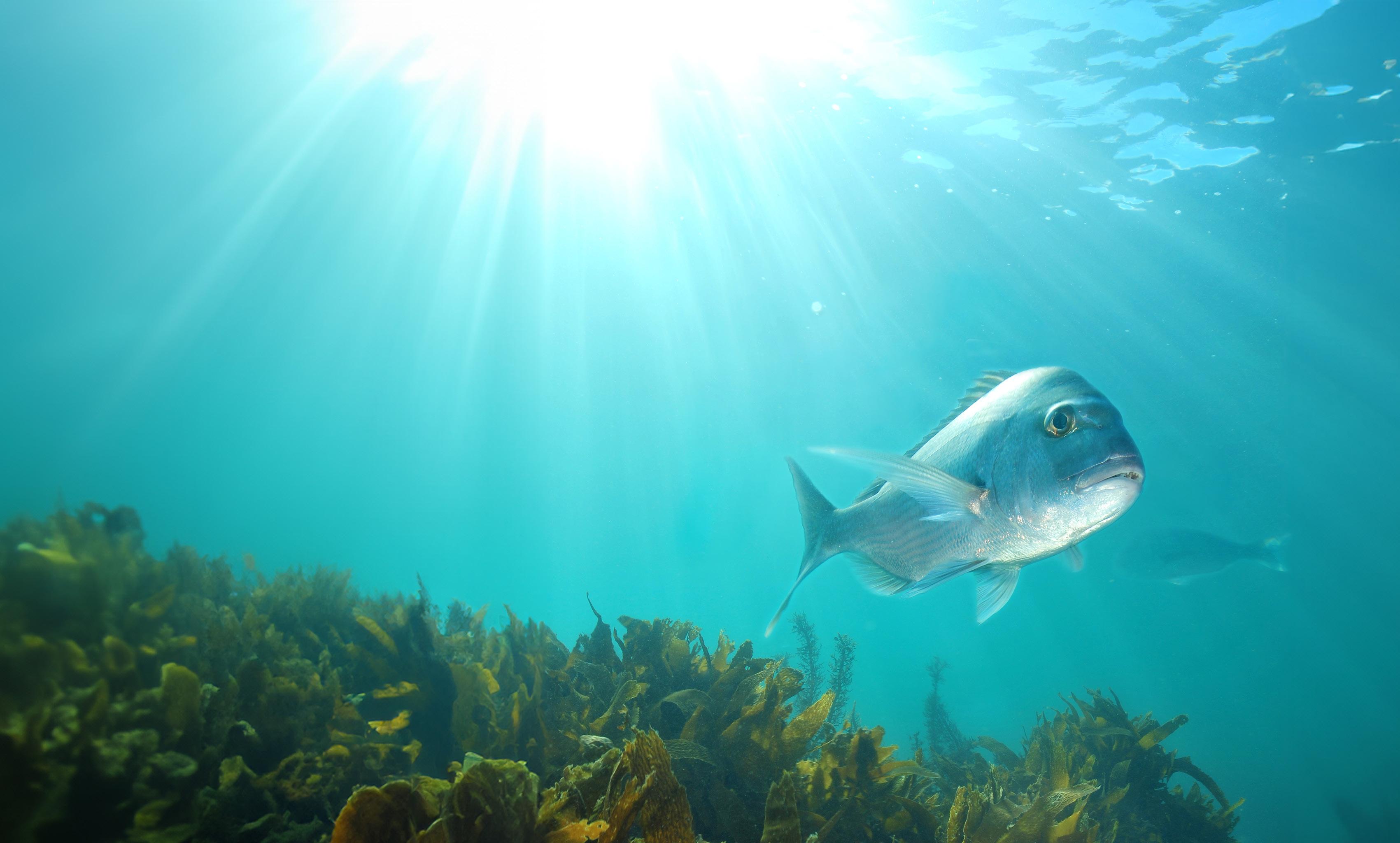
EDITORIAL
| Forest & Bird Te Reo o te Taiao 2




Set sail on an authentic adventure and experience nature on an unfathomable scale as we explore Fiordlands’ world famous remote ice-carved mountains, verdant forests, fiords and winding waterways. Discover this treasured natural wonderland, its unique wildlife, conservation and early New Zealand history as we expedition cruise remote shores, coves, inlets and waterways accessible only by sea aboard our luxurious 18-guest expedition yacht Heritage Explorer. Experience an incredible scenic helicopter flight and explore by expedition yacht, Zodiac, kayak and on foot with our experienced expedition team. Family-owned and operated, Heritage Expeditions has been exploring Fiordland with likeminded adventurers since 1984 and look foward to welcoming you on board.
ALL-INCLUSIVE CRUISING Scenic helicopter transfer • all on board accommodation & meals • house wine, beer & soft drinks • all shore excursions • experienced expedition team • kayaks & fishing equipment available • transfers to and from Heritage Explorer
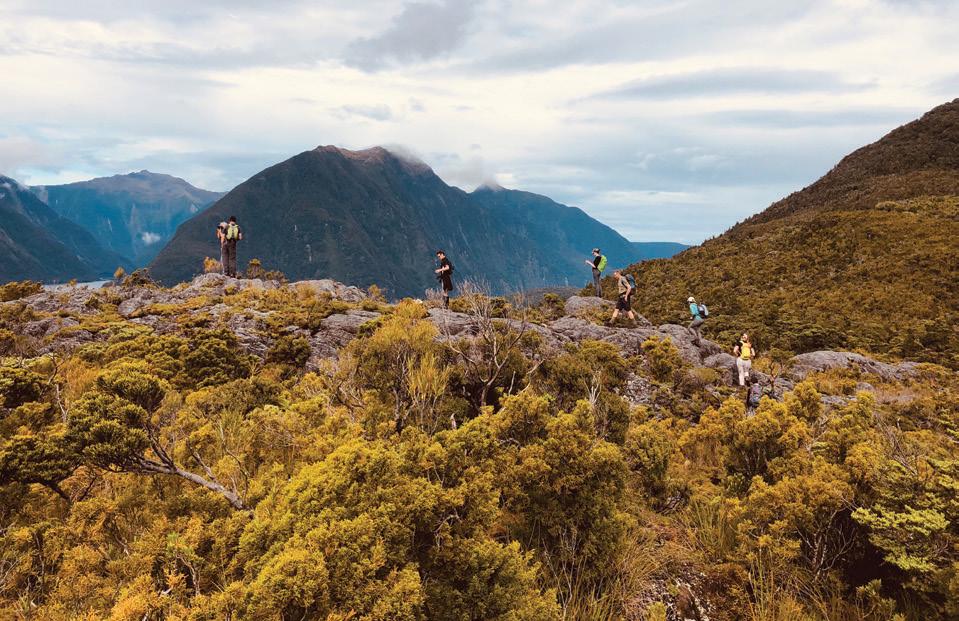

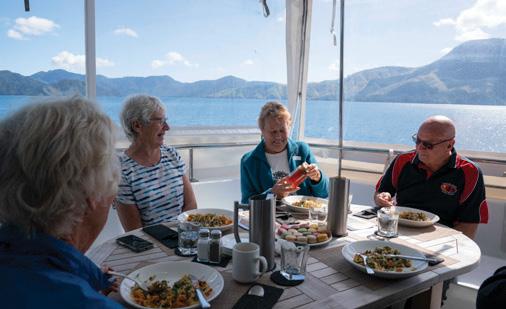

EXPERIENCE FIORDLAND LIKE NEVER BEFORE WITH NEW ZEALAND’S CRUISE PIONEERS WWW.HERITAGE–EXPEDITIONS.COM Freephone 0800 262 8873 info@heritage-expeditions.com EXPLORE THE HEART OF FIORDLAND
Milford Sound George Sound Caswell Sound Charles Sound Nancy Sound Thompson Sound Secretary Island Bradshaw Sound Doubtful Sound Deep Cove Dagg Sound Breaksea Sound Wet Jacket Arm Dusky Sound Resolution Island Supper Cove Chalky Inlet PuysegurPoint Preservation Inlet Long Sound Te Anau All of the Fiords 10 days|Jul & Aug Northern Fiords Explorer 7 days|Jul Fiordland Explored 5 days|Jul & Aug Undiscovered Dusky Sound 5 days|Aug Southern Fiords Discovery 7 days|Jul & Aug From $4,595pp* $3,676pp* ON SAVEWINTER 20% * DEPARTURES *T&Cs apply, winter departures only, book by 29 May 2024 or until sold out, NZ$ based on Buller’s Fiordland Explored BOOK NOW & SAVE FOR WINTER 2024!
LETTERS
YOUR FEEDBACK
Forest & Bird welcomes your thoughts on conservation topics. Please email letters up to 200 words, with your name, home address, and phone number, to editor@ forestandbird.org.nz, or by post to the Editor, Forest & Bird magazine, 205 Victoria Street, Wellington 6011, by 1 May 2024. We don’t always have space to publish all letters or use them in full. Opinions expressed on the Letters page are not necessarily those of Forest & Bird.
INVASIVE SPECIES
I was interested to read in the Summer magazine about the approaches being taken to protect tūturuatu shore plovers on Waikawa Island from the invasive Darwin ant. There are similar threats to island species worldwide. New Zealand’s success in controlling invasive pests on offshore islands has been inspirational for other islanders. I used to live in the Orkney Islands, north of mainland Scotland. Stoats were first reported there in 2010 and pose a serious threat to ground- and cliffnesting birds, such as lapwing (teeick in the Orcadian dialect) and oystercatcher (skeldro), and also to the Orkney vole (cutto or volo), only found in Orkney. Before stoats arrived, there were few native mammalian predators, apart from rats, hedgehogs, and feral cats. Knowing what has been achieved in Aotearoa, the Orkney Native Wildlife Project was formed to try to protect bird populations. Traps and stoat detection dogs have so far resulted in over 5000 stoats being eradicated. Despite these efforts, the number of stoats has increased on Pomona (Orkney Mainland) and its linked inner islands. However, so far, stoats have not greatly impacted the outer islands, and bird populations have not been reduced by as much as was initially feared.
Hazel Agnew, Oamaru
RAKIURA RUBBISH
BEST LETTER WINNER
Seeing rubbish washed onto Rakiura Stewart Island’s west coast beaches is sad! Rakiura is our newest National Park. Wouldn’t it be better if it wasn’t so trashed? Discarded fish bins and buckets filled with more discarded rubbish. Does the Department of Conservation take this washed-up rubbish off the public land they administer? “Landscape with too few lovers” was written on one of Colin McCahon’s Northland Panels, but it could be written on many places around Aotearoa. Maybe each international tourist could pay an entrance fee to our National Parks when they arrive in Aotearoa, regardless of whether they visit one while staying here.
Lynne Stewart, Clyde
WRITE AND WIN
The best contribution to the Letters page will receive a copy of Flora: Celebrating Our Botanical World, edited by Carlos Lehnebach, Claire Regnault, Rebecca Rice, Isaac Te Awa, and Rachel Yates, Te Papa Press, $80. This richly illustrated book is a heart-felt tribute to Aotearoa New Zealand’s flora.
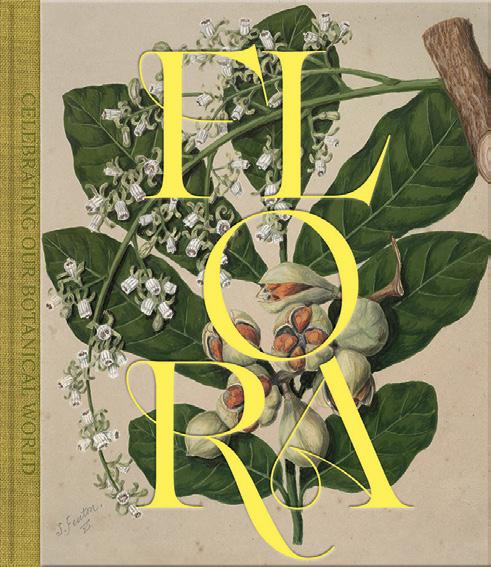
CATS
There was a programme titled SPCA Rescue on TV1, where a feral cat had entered a home and the SPCA were called to capture it. It had a fish-hook embedded in its mouth. After considerable time and effort, the cat was netted and taken I presume to a vet to have the hook removed. After the cat recovered, it was then taken out and let go in the wild again. Why wasn’t the cat put down as it is now out there killing our birds and other creatures that we are trying to protect. If it were an unregistered dog, it would have been put down, so why not the same for cats?
Bruce Plant, Oamaru
CENTENNIAL COVERS
The last of the Centennial feature covers has me writing in support of the colourful, exuberant cover of Summer 2023. Each of the four covers depicts a different subject for the magazine, but the last one has a living vitality that is so engaging. Forest & Bird is doing an immense job assisting with the revitalisation of Māori toanga, and the title in te reo on the front cover also portrays that. That is us – that is Aotearoa. The last editorial mentioned that we would be in the hands of a new government by the time this edition reached the letterbox. With the great work Forest & Bird has done over the last century, surely we were all hoping for more hope for te taiao. But with a focus on economic resilience and productivity, more “resource” mining and opening up opportunities for “deep seabed mining”, are we facing a damaging and gloomy prospect for our te taiao? Te Reo o te Taiao – your “resources” are needed more than ever. Keep the covers engaging and oozing vitality. The last edition sitting on my coffee table has attracted so many of my visitors. It is a great conversation starter – for mining new members.
Mary Dinniss, Wellington

| Forest & Bird Te Reo o te Taiao 4
CONSERVE NATURE
Yvonne Summers is right to be concerned about over-population (Spring 2023). It is why resources are being exhausted. In my opinion, it is very unethical to let resources be exhausted and condemn future generations to wars, famines, and pandemics.
Bridie Field, Dunedin
MORNING AFTER
Some love-stricken huhu beetles bumped onto our kitchen windows, attracted by the light at night. I found them trapped in the dog’s drinking bowl on the deck. They are the biggest beetles in New Zealand, and they spend their life cycles inside rotten wood. For two weeks, the adult beetles haphazardly fly around to find love. It is the only time they see the outside world.
Ans de Wolf, Tangowahine
NATURE INSPIRED
I have been teaching art and writing poetry for years. We wake every day to a beautiful dawn chorus of bellbirds and tūī. These busy, cheeky, cheerful birds always bring a smile to my face! I wrote this haiku for the tūī to share with your readers.
Vicky Mottart, Gisborne
BOOK GIVEAWAY

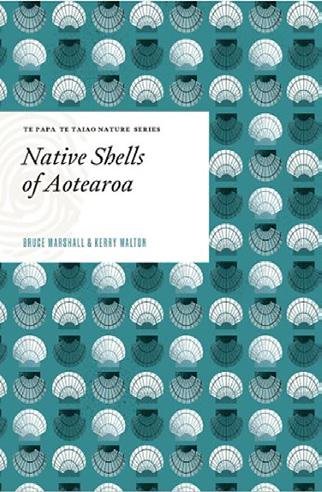
We are giving away two sets of illustrated field guides, the latest in Te Papa’s Te Taiao Nature Series. Each winner will receive Native Insects of Aotearoa by Julia Kasper and Phil Sirvid (RRP $27) and Native Shells of Aotearoa by Bruce Marshall and Kerry Walton (RRP $27). Written by experts from our national museum, they are compact, user-friendly, and designed to be taken out into the field.
To enter, email your entry to draw@forestandbird. org.nz, put BIRDS in the subject line, and include your name and address in the email. Or write your name and address on the back of an envelope and post to BIRDS draw, Forest & Bird, PO Box 631, Wellington 6140. Entries close 1 May 2024
The winners of A Naturalist’s Guide to the Birds of New Zealand and The 50 Best Birdwatching Sites in New Zealand, both published by John Beaufoy Publishing, were Lucy Dunningham, of Auckland, and Mike Sim, of Porirua.
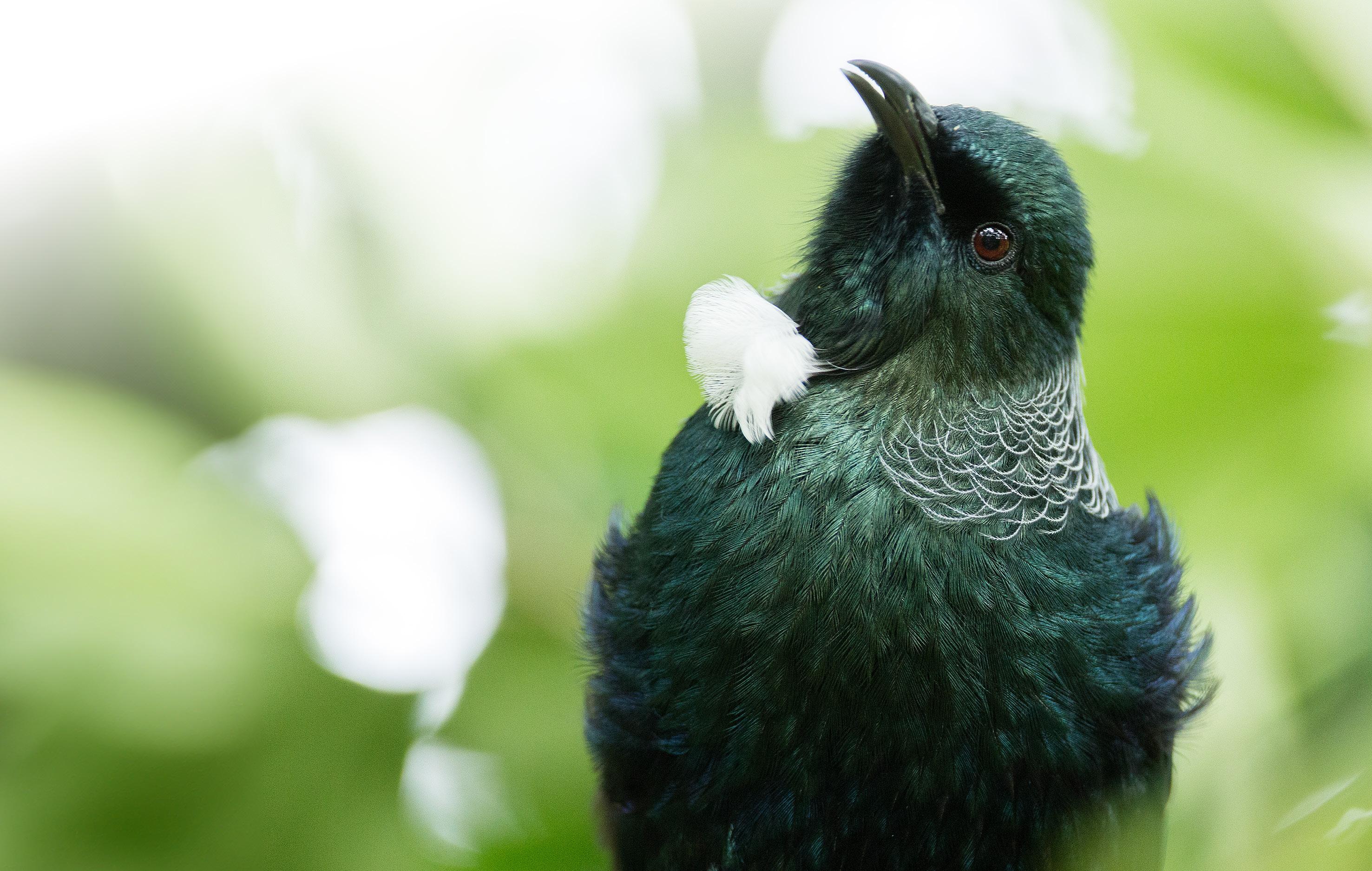
TŪĪ LOVE SONG
Glossy green and black, a flurry of wings dance by. A song like nectar.
Tūī. Bryce McQuillan
5 Autumn 2024 |
NATURE NEWS

YEARS & COUNTING ...
The final three months of our centennial celebrations included a birthday party, an art exhibition, and a women in conservation event.
The community (and sun) came out in force for the last of our Big Birthday Bashes in Tāmaki Makaurau Auckland in February. Everyone had a blast at Te Haruhi Bay, Shakespear Regional Park, enjoying a family-friendly day of nature-themed activities, conversations, and cake accompanied by some glorious summer weather.
A special thanks goes to Pest Free Hibiscus Coast, Ark in the Park, Auckland Council, and Hibiscus and Bays Local Board for their support and to the amazing volunteers from Forest & Bird’s Kiwi Conservation Club and Warkworth, Hibiscus Coast, and North Shore Branches for helping organise and host this centennial celebration. This event was postponed because of the extreme weather in the Auckland region last March.
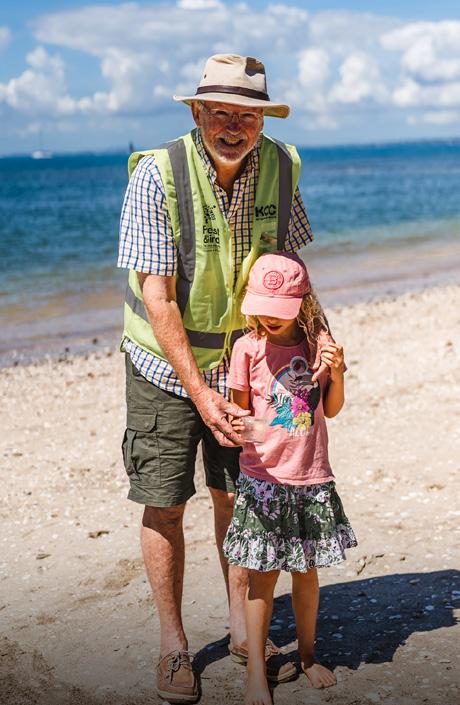
The audience at Hamilton Gardens was in for a treat when they took their seats for the Force of Nature concert, the opening event of the Hamilton Arts Festival on 23 February. The original chamber music works were performed by NZTrio, Bridget Douglas, Peter Scholes, Rob Thorne, and Yoshiko Tsuruta.
It was the final in our centennial concert series, which premiered at the Auckland Arts Festival last March before travelling to Christchurch, Wānaka, and Nelson. A huge
thank you to Jenni Scanlon, CEO of the Performing Arts Community Trust, another force of nature who secured funding and worked with the New Zealand composers for this special nature-meetsmusic project.
In another creative collaboration, Forest & Bird was delighted to host 26 NZ writers and artists at Lopdell House, Titirangi, in February. The culmination of this year-long project saw the 13 artworks inspired by Forest & Bird’s nature restoration work from Northland to Southland on display in the gallery.
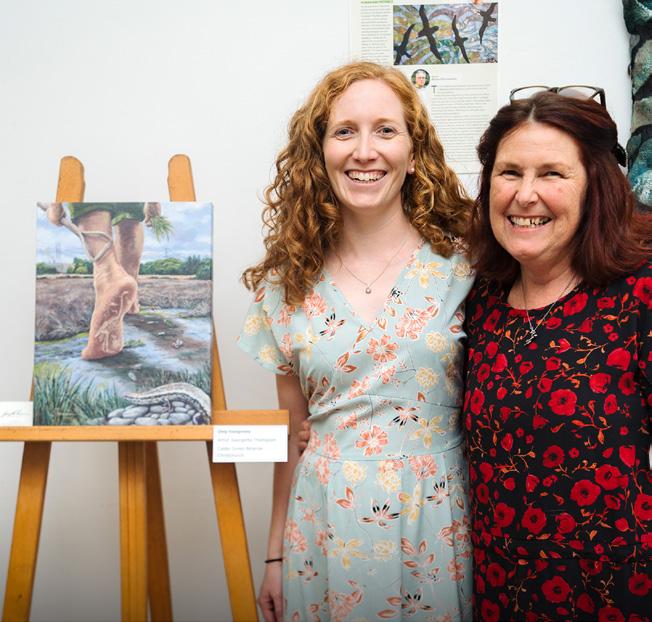
Together with an invited audience, the writers and artists read their centena poems and talked about the inspiration they found in nature when creating their works. You can read about the final four projects in this series (Ark in the Park, Blowhard Bush, Calder Green, and Fensham Reserve) on pages 38-42.
On International Women’s Day, 8 March, we collaborated with our friends at the National Library of New Zealand Te Puna Mātauranga o Aotearoa to highlight the important role of women in conservation. We will have a full round-up of this wonderful event in our Winter issue. Governors-General have had a long association with Forest & Bird going back more than 90 years. At the end of March, Her Excellency The Rt Hon
 Enjoying the sunshine at the Big Birthday Bash.
Enjoying the sunshine at the Big Birthday Bash.
| Forest & Bird Te Reo o te Taiao 6
Georgette Thompson and Gail Ingram.
Dame Cindy Kiro, GNZM, QSO, Governor-General of New Zealand is kindly hosting a formal dinner to mark the occasion of our 100th birthday.
There is still time to register for the final webinar in our centennial speaker series, on 27 March, which looks at the future of conservation. Professor Mike Bunce, Chief Science Advisor at DOC, will share some recent technological advances, ecologist Hamiora Gibson, the co-founder of the Eastern Whio Link Trust, will talk about our relationship with the whenua, and University of Waikato environmental science student Hallé Aish will cover the future of conservation from a rangatahi perspective. For more information, go to www.forestandbird.org.nz

STRONGER TOGETHER
FOREST & BIRD’S PRIORITIES IN 2024
For more than a century, Forest & Bird has been helping nature lovers like you turn their passion for protecting the environment into action. We have achieved so much together. Now it is time to defend these gains.
GOVERNMENT U-TURNS
We have our work cut out for us in defending policy rowbacks on coal, oil, and gas exploration, and freshwater (see below). We will continue to push for No New Mines on conservation land. Forest & Bird will be using advocacy and legal avenues to defend our wild places and wildlife against these new threats. We will also work with others to build a public mandate of opposition against the repealing of hard-fought conservation protection dating back decades. See pages 8 and 30.
PEST MANAGEMENT
We will focus on browser pest control advocacy (feral ungulate control). We will also undertake other activities in support of Predator Free New Zealand, including promoting the Give a Trap platform (giveatrap.org.nz)to encourage more people to carry out trapping in their local community, and advocating for a Cat Management Act to reduce feral and stray cat populations. See page 57.
NATURE-BASED SOLUTIONS
Building on our work around Tukua Ngā Awa kia rere Making Room for Rivers and He puipuiaki ia rohe kōreporepo Every Wetland Counts, we will continue to promote the important role nature can play in helping Aotearoa New Zealand’s communities combat the effects of climate change. Our pest management work will support advocacy on native forest carbon sequestration (Four Forests for Climate).
MARINE PROTECTION
Building on our Arohatia Tīkapa Moana Love the Hauraki Gulf campaign, we will continue to work towards securing meaningful marine protections throughout Aotearoa ocean environment, including ending bottom trawling, keeping cameras on boats, monitoring bycatch rules, and advocating for new marine reserves.
FIGHTING FOR FRESHWATER
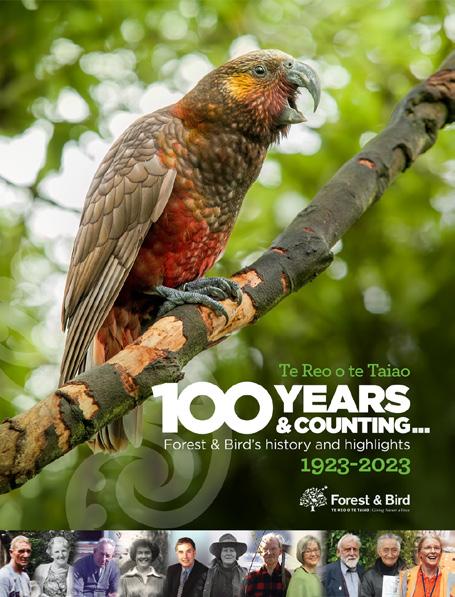
Thank you for supporting Forest & Bird and helping amplify our conservation messages ensuring nature’s voice is heard throughout Aotearoa. You should have received a copy of 100 Years & Counting... with your mailed magazine. This new 24-page publication contains history highlights from our mahi over the past century. With introductions from president Mark Hanger and chief executive Nicola Toki, it also looks ahead to future challenges and the different ways you and your whānau can get involved in our mahi. Please share with your networks and encourage people to join Forest & Bird. The digital version can be downloaded at https:// issuu.com/forestandbird/ docs/f_b_100years-andcounting. Also included with your March issue is a cardboard model of our Bird of the Century winner, the humble pūteketeke (far left). It’s a small way to mark our appreciation of your support during our centennial year.
The government has set out a clear intention to “review and replace” the National Policy Statement for Freshwater Management and “rebalance” the strongest section of it. Ministers intend to weaken provisions in Te Mana o te Wai that say the health of water and people should be prioritised over commercial interests. We’ll be pushing back while continuing to advocate for improved freshwater management in national and local policy. We will also be support councils that are moving ahead with implementing effective freshwater management plans.
Please make a donation to support our conservation mahi in 2024 today at www.forestandbird.org.nz/ support-us/appeals/donate-forest-bird.
7 Autumn 2024 |
NATURE NEWS

MILLION DOLLAR WINNER
From ruffled feathers to giant pūteketeke puppets, this was a bird competition to top all others Lynn Freeman
Foreign interference in the Bird of the Century election totally paid off for Forest & Bird, with the annual avian popularity contest raising more than $1,180,000, allowing us to step up our advocacy for te taiao nature.
US talk show host John Oliver championed the landslide winner, the pūteketeke Australasian crested grebe. The budget for his “alarmingly aggressive” campaign seemed bottomless, with billboards in places like London, Paris, Mumbai, and even the famous Shibuya Crossing in Tokyo asking for people to vote for the pūteketeke.
The Last Week Tonight team also commissioned a giant animatronic pūteketeke and a fetching grebe costume which Oliver wore when interviewed on The Tonight Show by his mate Jimmy Fallon.
An avalanche of 380,000 verified votes were cast last November, the most in the competition’s history, with 79% coming from overseas voters. The previous year’s Bird of the Year racked up 52,000 votes.
“We promised controversy but
didn’t quite expect this,” said chief executive Nicola Toki. “The world was watching Aotearoa and how we look after our birds.”
“This campaign shone a global light on the threats faced by our native birdlife, and tens of thousands of people from 195 countries voted and donated as a result. The funds raised will make a significant difference to our conservation mahi this year.”
More than half of the competition’s donations came from our friends at Metalbird, who created and sold a special edition pūteketeke Australasian crested grebe in a steel silhouette with a mini John Oliver perched cheekily on its back.
They manufactured the bespoke

design at their US base in record time and started selling them. The popular artworks flew off the shelves.
“At Metalbird, we create a silhouette of the winning bird every year, with 30% of the proceeds given to Forest & Bird,” says Metalbird chief executive Serai Te Kani.

“We crafted a pūteketeke of our own with Forest & Bird, adding in a mini John Oliver for good measure.
Metalbird also presented Last Week Tonight audience members with gifts of the metal birds to

screams of delight. “The outpouring of interest and donations for Forest & Bird from around the world has been astonishing and deeply moving. Most importantly, the native birds of New Zealand are receiving the attention and support they deserve,” added Serai.
The HBO show’s interest in being part of Te Manu Rongonui o te Rautau Bird of the Century came as a surprise to Forest & Bird.
The reason they chose the pūteketeke remains a mystery, although it does have some very strange behaviours, beautiful
Pūteketeke Australasian crested grebe. Leanne Buchan
Serai Te Kani
John Oliver with Jimmy Fallon. HBO
|
& Bird
Reo o te Taiao 8
Metalbird
Forest
Te
plumage, and a name that “is like a dance in your mouth”, to quote John Oliver, its enamoured campaign manager.
There were genuine hurt feelings (through to outrage) when the “underbird” pūteketeke took out the title due to Oliver’s determined campaign. It came in way ahead of second and third placegetters the North Island brown kiwi and kea.
The competition, as always, is about advocacy for New Zealand’s endemic and native birds, with more than 80% in trouble due to habitat loss, predation, threatened food sources, and climate change.
Forest & Bird volunteers are among a dedicated group of New Zealanders who love the grebe and its distinctive courtship, parenting, and vomiting characteristics. They were delighted that their manu of choice had time in the limelight.
“A huge Forest & Bird thank you to John Oliver and his Last Week Tonight team, to Metalbird for their incredible support, and to all the New Zealanders who went along for the ride and took the result in good spirit,” added Nicola.

Oliver’s campaign, outrageous and OTT and extravagant as it undisputedly was, also had an underlying serious message. It was about how easy it is for America, with its wealth and ego, to successfully interfere in the elections of other countries.
What next? Forest & Bird is working with Last Week Tonight and Air New Zealand to translocate the puppet to Aotearoa – which is proving a challenge thanks to the puppet’s sheer size and presence of feathers.
But once safely on our shores, the plan is to put the massive pūteketeke on public display.
WAR ON NATURE
Forest and Bird condemns government plans to introduce an undemocratic fast-track consenting process, threatening conservation gains achieved since the 1980s.
The government is proposing to push through drastic changes that will fundamentally weaken long-standing planning protections in the face of a climate and biodiversity crisis.
Chris Bishop, Minister for Resource Management Reform, gave stakeholders less than two weeks to provide feedback on his proposed fast-track consenting Bill introduced to Parliament in early March.
The scope of what can be fast-tracked for consent is so broad that nothing is off the table – mining on conservation land and on the sea floor, vast aquaculture farms, property developments, and new dams and water storage.

“The government is setting itself up to rush through any development without letting the public have their say and without keeping nature safe,” said Nicola Toki, Forest & Bird’s chief executive.
“This new legislation is completely unwarranted. Fast-track processes should be narrow, focused, and with safeguards in place. Instead, what’s proposed is extremely broad, where Ministers may essentially be able to decide what goes through the process.”
Ministers will be able to refer projects for acceptance into the fasttrack process. Locally, regionally, and nationally significant infrastructure and development projects will be prioritised.
These will go to an Expert Panel with limited ability to decline the project. It can apply conditions to ensure adverse effects of the project are managed.
The process will allow private developers to go to Ministers directly for approvals – bypassing local communities and undermining the ability of people to have their voices heard.
“The lack of transparency and opportunity for the New Zealand public to participate in these processes is the most shocking thing,” added Nicola. “This isn’t the New Zealand way.”
The coalition government’s third phase of reform will see the Resource Management Act 1991 replaced with new resource management laws based on the “enjoyment of property rights”.
This will see the loss of nature in a death by a thousand cuts on private land. A new rubbish dump here, a new mine there. Every time this happens, we lose more of our unique natural heritage – the places international tourists flock to see.
For more on this story, see pages 30–31.
 Chris Bishop
Chris Bishop
9 Autumn 2024 |
Nicola Toki

Bgovernment’s wide-scale rolling back of environment protections could see it breach the terms of the FTA, which has been in place since last May.
Submitted to the Ministry for Foreign Affairs and Trade in February, it was signed by the World Wildlife Fund NZ, Environmental Defence Society, Greenpeace, Pure Advantage, and Forest & Bird.
concerned about Ministers’ plans to allow fast-track developments with uncertain environmental safeguards, scrap clean energy schemes and carbon-cutting plans, and allow more ocean exploitation.
y rolling back a raft of environmental laws, New Zealand risks breaching its fair trade deal with the United Kingdom.
Forest & Bird recently joined a coalition of leading environmental organisations to make a joint submission on the UK–NZ Free Trade Agreement (FTA).
The free trade agreement has a strong environmental chapter, which includes a clause where countries agree they will not encourage trade by weakening environmental laws.
Under the agreement, the public is allowed to submit on the FTA’s implementation.
Our joint submission argues the
FREE TRADE RISK DOME DUMP APPEAL

“The government’s concerted attack on nature is an attempt to give New Zealand exporters an advantage and risks breaching the UK fair trade deal,” said Richard Capie, Forest & Bird’s group manager for campaigns, advocacy, and communications.
“While there is free market access, countries also need to at least maintain the environmental protections they have in place.”
The joint submission says the government has repealed key environmental Acts under urgency and intends to replace or amend evidence-based national policies that were collaboratively designed to protect nature.
Forest & Bird is particularly
Forest & Bird is challenging an interim Environment Court decision conditionally approving a 60ha landfill at Wayby Valley, north of Auckland, that would destroy around 12km of streams and threaten numerous endangered species.
Forest & Bird lodged an appeal to the High Court in January after the Environment Court made a decision in December 2023 that essentially paves the way for the development. The decision has also been appealed by Te Rūnanga o Ngāti Whātua.
A number of other groups, including the Director-General of Conservation and Fight the Tip,
“We submit that the government’s agenda to ‘cut red tape’ for industry and the primary sector is to give New Zealand producers a market advantage ... at the expense of the climate and the environment. In short, it is creating an implicit subsidy for New Zealand exports,” the submission stated.
Trade Minister Todd McClay said the government strongly rejected the assertions. He said New Zealand “takes its obligations under trade agreements extremely seriously” and the free trade deal lets both parties set their own environmental law.
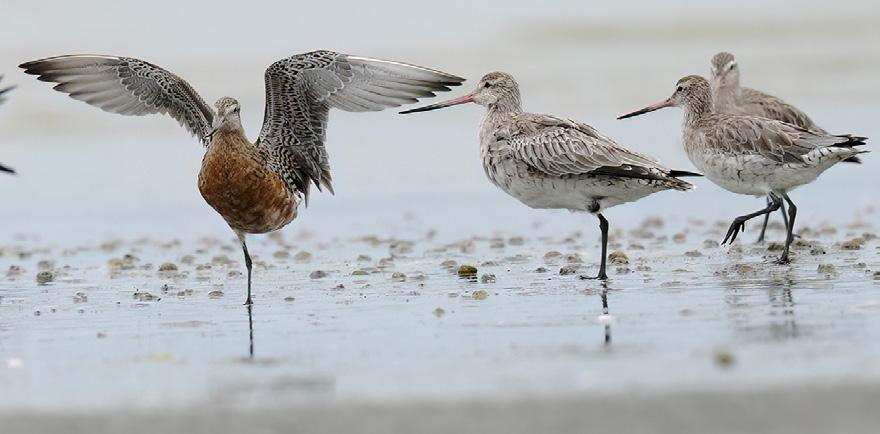
opposed the application in the Environment Court.
The Society holds grave concerns that the dump development will kill a large number of pepeketua Hochstetter’s frogs and indigenous freshwater species. The dump would also threaten the nationally critical pekepeka long-tailed bat and five lizard species.
Forest & Bird’s appeal is largely focused on the interpretation and application of freshwater policies under both the Auckland Unitary Plan and the National Policy Statement for Freshwater Management 2020 and the correct approach to consenting decisions.
NATURE NEWS
Kuaka bar-tailed godwits Manawatū Estuary. Rob Scotcher
Hochstetters frog.
Shaun Lee/Flickr
| Forest & Bird Te Reo o te Taiao 10
The UK-NZ Free Trade Agreement was signed in 2022. MFAT

It’s time to celebrate Forest & Bird’s nature heroes. We are seeking nominations for this year’s Old Blue and Tī Kōuka awards.
Old Blue: These awards recognise outstanding New Zealand conservationists. Any branch committee member can nominate a member that has made an exceptional contribution on a local, regional, and national level over a long period of time. This might include practical conservation work, being exceptional in an organisational, administrative, or representative
FOREST & BIRD 2024 AWARDS TĀIKO OUR TREASURE
In the forested Paparoa foothills south of Punakaiki lies the sole breeding ground of the Westland petrel. Part of the colony includes Forest & Bird’s Dick Jackson Memorial Reserve.
A proposal by mining company TiGA Minerals and Metals for a huge mineral sand mining and processing operation at Barrytown Flats, 3.6km south of the tāiko colony, would put adult and fledgling Westland petrels at risk from site lights and vehicle headlights.
They risk being grounded and killed by vehicles travelling along SH6 as they fly in and out of the
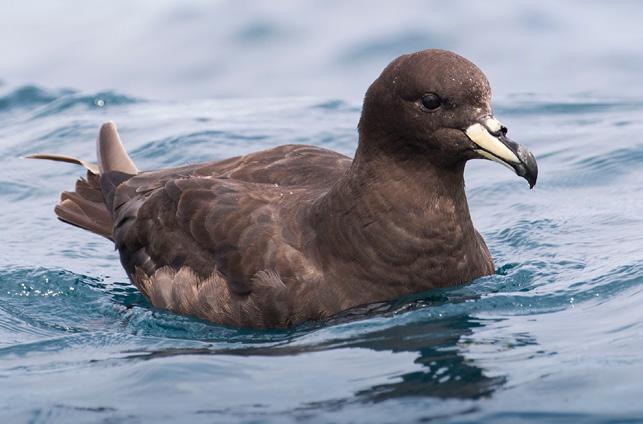
role on behalf of their branch or the Society, or fulfilling any other role that can be shown to have significantly progressed Forest & Bird’s objectives. Closing date for nominations: 28 March 2024.
Tī Kōuka award: Symbolising longevity and persistence, this may be awarded to a member who has made a significant contribution to furthering the conservation aims of the Society at a local or regional level over a long period of time. This includes hands-on conservation work or any role, including organisational, administrative, or
Annalily van den Broeke, Old Blue 2023 winner, with president Mark Hanger and vicepresident Kate Graeme Mark Coote
representative, that can be shown to have significantly progressed the Society’s objectives. Any branch member can submit a nomination for this award. Closing date for nominations: No date – these will be considered by the Board as received.
Nomination forms can be downloaded at www. forestandbird.org.nz/about-us/ our-heroes. For more information, email Emma at e.serianni@ forestandbird.org.nz.
Notice of meeting: The 2024 Annual General Meeting of financial members of the Royal Forest & Bird Protection Society of New Zealand will be held online on Saturday, 22 June 2024. All members are welcome to attend.
colony towards the Tasman Sea.
Independent commissioners have been hearing dozens of submissions for and against the majority Australian-owned company’s application for industrial-style mining to extract ilmenite, garnet, and gold for up to 12 years. Similar mining plans were rejected two years ago, but the mining company has come back with a new resource consent application.
In February, our Canterbury and West Coast regional conservation manager Nicky Snoyink made a submission opposing the company’s mining plans on behalf of Forest & Bird. Forest & Bird’s West Coast Branch is also deeply concerned about the proposed mining operation and its adverse impact on endangered wildlife and local wetlands.
Chair Suzanne Hills is also one of the leaders of the Coast Road Resilience Group, which is
representing local residents against the proposal.
She said, “The majority of Coast Road residents are fiercely opposed to this mine. There is huge public concern within the community that this would have lasting effects on people, wildlife, and wetlands and add to climate breakdown.
“Our global celebrity, the treasured Westland petrel population is on a knife edge and cannot sustain further threats. Collectively, we have a duty to help them and not add to their problems by imposing industrial activity into the heart of their world. The tāiko is our treasure, not garnets and gold.”
You can read more about Westland petrels and the mining threat in our Spring and Summer 2023 issues. The Coast Road Resilience Group provided copies of the magazine articles to the Independent Commissioners during February’s hearing.
Westland petrel John Oates
11 Autumn 2024 |
DRIVING OUT WILDLIFE


Shorebirds, marine mammals, and their coastal habitat are being put at risk by inadequate beach bylaws and council controls, as Chelsea McGaw explains.
In November 2023, a wildlife refuge that hosts local and international migratory waders was vandalised by two dirt bike riders. They decided to ride down a bicycle cycleway into the reserve passing a “no motorcycles” sign, break through onto the shell bank, and blast up and down this protected area, disturbing flocks of native shorebirds.
They ripped up the shellbank from Ray’s Rest all the way to Pūkorokoro Miranda Shorebird Centre and back. A Forest & Bird member photographed the incident and reported it to the Department of Conservation.
Our branches have been fighting for a better deal for shorebirds and coastal habitats for more than 40 years, including pioneering “dotterel minding”, writing newspaper articles, submitting on local bylaws, and managing dune restoration projects.
Today, many of our branches are deeply concerned about the deadly impact of vehicles driving along beaches throughout the country.
South Otago Branch volunteers have observed numerous examples of poor behaviour on beaches in the Catlins. Trail bikes and four-wheel drive vehicles are responsible for most incidents, including ripping up dunes and disturbing animals such as pakake New Zealand sea lions and penguins.
The branch worked with Sea Society to raise the issue with Clutha District Council. However, the resulting bylaw controlling vehicles on some beaches is not well enforced and has not stopped incidents taking place on southern beaches.
These include sea lions being harassed by vehicles, a kororā little blue penguin that appeared to have been run over by a vehicle, and vehicles on the beach close to known thoroughfares of hoiho yellow-eyed penguins.
It is also a common occurrence to see people driving
along the beaches with their dogs running alongside, an additional risk to wildlife.
“At minimum, the branch would like to see the bylaws reviewed with a speed limit imposed, a ban on driving on beaches at night and the establishment of ‘safe zones’ to exclude vehicles, dogs, and introduced pests (using adequate predator control),” said South Otago Branch co-chair Roy Johnstone.
“We’d also like to see staff from the council and/ or police monitoring behaviour and enforcing local regulations and bylaws.
“We’ve taken district councillors on an eco-tour of the Catlins to educate them and highlight some of the ongoing issues of vehicles on beaches, written several letters to the editor in local papers, and brought attention to the issue in a recent public display at the Ōwaka museum and Te Pou ō Mata-Au.”
In Golden Bay, the local Forest & Bird branch has been leading E Toru Nga Awa, a restoration project that covers the coastline and estuaries of three waterways. The area holds immense traditional, historical, and cultural significance to Manawhenua ki Mohua, kaitiaki of this area.
But there are ongoing problems with vehicles on beaches in numerous locations. The biggest issue is at Rototai Reserve, northwest of the Motupipi River estuary, where branch volunteers manage weeds, pest traps, and monitor the nesting success of shorebirds.
This area has been recognised as a summer seabird nesting site of international importance. However, between December 2022 and the end of January 2023, the majority of tūturiwhatu banded dotterel nests on the Rototai sandspit were destroyed by vehicles.
COVER | Forest & Bird Te Reo o te Taiao 12
Quad bike driving through feeding godwits, knots, and wrybills in a RAMSAR-recognised nature reserve, Foxton Beach, January 2024 Supplied


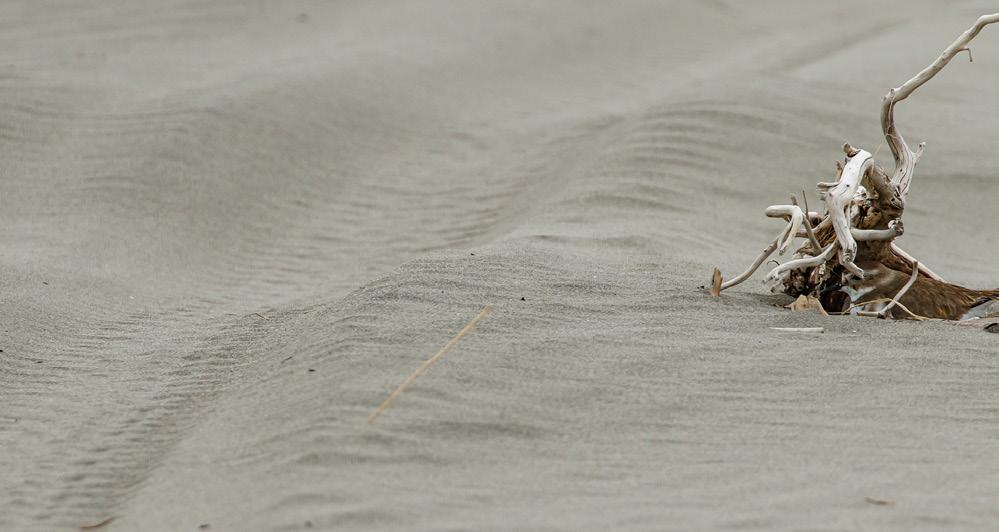
The branch has been working with Manawhenua ki Mohua, the Department of Conservation, and Tasman District Council to stop vehicles accessing Rototai Sandspit.
This advocacy led the council to block vehicle access to the beach in December 2023. Iwi supported the closure, and signage has been installed alerting people to the wildlife present in the area. Our Golden Bay volunteers continue to advocate for stronger protections, including a council bylaw, to protect the Rototai Reserve.
Forest & Bird’s Northern Branch has observed vehicles causing damage on a sandspit on the northern side of the Waipū River. The Waipū Rivermouth Wildlife Refuge is a nesting area for tōrea tai variable oyster catchers and tūturiwhatu dotterels, and an occasional breeding site for hundreds of tara whitefronted terns.
It is also a high-tide roost for 80–200 godwits and a roosting area for Caspian terns, banded dotterel, shags, and red-billed gulls.
The height of the sandspit ridge helps stop the sea overtopping the dunes and damaging nests during onshore winds, high surf, and high tide. Damage from vehicles driving along the spit exacerbates erosion of this protective barrier.
Northland Regional Council is introducing new vehicle exclusion zones for significant coastal areas, including the foreshore at Waipū rivermouth. If properly enforced, this will help protect the area’s dunes. However, the branch would like to see the whole of the beach become vehicle free to protect its indigenous biodiversity.
SPECIES AT RISK
Many bird species use our coastlines to rest, nest, feed, or as thoroughfares, including hoiho yellow-eyed penguins, tarāpuka blackbilled gull, tōrea pango variable oyster catchers, and tūturiwhatu northern dotterels.
Marine mammals such as pakake New Zealand sea lions, kekeno New Zealand fur seals, rapoka leopard seals, and ihu koropuku Southern elephant seals can be found basking in the sun, resting from a hard day foraging at sea or, in the case of pakake, giving birth to and nurturing their pups in the dunes. Our coasts are also home to other fauna, such as the katipō spider, lizards, tuatua, and pipi.
Flora is also an important part of our beach landscape. Coastal specialists such as sand pimelea, sand tussock, New Zealand sea spurge, sand gunnera, and pingao are all declining in distribution. Coastal vegetation is not only important for biodiversity and habitats but also for dune integrity and minimising erosion, which in turn protect local communities from flooding.

Rules controlling vehicles driving on beaches (including the dunes) vary widely throughout Aotearoa New Zealand and can differ between neighbouring districts. Drivers may cross a council boundary and all protection can completely drop, even though it’s the same coastline and the same environment. Flora, fauna, and important coastal features and processes do not distinguish where council boundaries stop and begin.
This is why Forest & Bird launched its Turning the Tide public awareness project – see overleaf.
☛
Close call: Banded dotterel nesting on the beach. Roger Smith
13 Autumn 2024 |
Muriwai gecko. Blair Balsom

COVER 14
TURNING THE TIDE
A Forest & Bird investigation has revealed inconsistencies in the way local councils control vehicles on beaches.
Nearly two-thirds of New Zealand’s 52 coastal councils are leaving coastal wildlife and habitats unprotected from vehicles on beaches. Fourteen councils have no controls, and only one, Dunedin City, received a top “protected” score in our national rankings.
Last year, Forest & Bird branches reported numerous incidents of vehicles driving on beaches with no regard to nesting seabirds, resting marine mammals, recovering native vegetation, and vulnerable sand dunes.
Councils are responsible for controlling and monitoring vehicles on local beaches. We surveyed all of them and discovered wide discrepancies in the way they carry out their legal role of protecting coastal biodiversity. Where vehicles are allowed access by local councils, the laws of the road apply.
“Some of the most threatened shorebirds, marine mammals, penguins, lizards, insects, and plants in the world live on our beaches, sand dunes, and in coastal habitats,” said Nicola Toki, Forest & Bird’s chief executive.
“Yet we are letting vehicles literally drive all over them. We can do better than this. We need more consistency between neighbouring councils and more enforcement of existing rules and bylaws.”
Last September, Forest & Bird requested information from all of New Zealand’s coastal authorities under the Local Government Official Information Act.
We asked whether they had any rules, regulations, or bylaws restricting or prohibiting the use of vehicles on beaches in their territory and how much funding they allocated to enforcing existing controls, including staff time. We also wanted to know what information and guidance they provided to the public about vehicles on local beaches.
The results showed wide variations. Some have no rules, and anyone can drive on any beach. Others banned vehicles all the time or prohibited them from parts of the beach, such as river mouths and estuaries.
Some councils closed beaches to vehicles only during the summer nesting period. Others had speed limits, usually 30km per hour. Some prohibited driving on dunes or above high tide lines but allowed vehicles elsewhere.
Our project team scored councils on the information they provided. Those with higher scores were placed
Chelsea McGaw
in the “protected” or “good protection” categories. Those with lower scores were allocated to the “some protection”, “little protection”, and “no protection” categories.
Dunedin City Council received the only top ranking. It has a dedicated partnership programme with the Department of Conservation that helps enforce existing rules. Rangers carry out twice-daily patrols of reserves and beaches between November and April. They can issue warnings to any vehicle owners found committing offences.
It was very rare for councils to have dedicated resource to enforce their beach bylaws. Councils usually have no enforcement or rely on NZ Police to nab offenders. Some do have compliance officers, but they have to enforce all council bylaws not just beach ones.
Last December, before the busy summer holidays, Forest & Bird launched Turning the Tide, a public awareness project about the impact of vehicles on beaches.
We are encouraging our supporters to contact their local councils to report incidents and ask for local bylaws on wildlife-rich beaches. We are also urging councils to read our Vehicles on Beaches report, compare themselves to their neighbours, and do more to protect the coastal biodiversity they are responsible for looking after.
It’s important to note that beach bylaws prohibiting vehicles still allow access to emergency services, those with no other way of accessing property, and for the launch and retrieval of boats (but they must take a direct route to do so).

“Our analysis provides a national snapshot of how councils are doing relative to each other and illustrates that existing rules are not protecting wildlife in many of our coastal districts,” said Carl Morgan, Forest & Bird’s Auckland regional conservation manager, who was part of the team that put the report together.
“It’s time to give more care and respect for our coastal species, our shorebirds, marine mammals, penguins, lizards, spiders, and native flora.
“Councils can and should be doing more, including passing more bylaws and properly monitoring existing ones, including fining or prosecuting offenders.”
→
15 Autumn 2024 |
Carl Morgan
DISTURBING DOTTERELS
Earlier this year, Linda Conning, chair of Forest & Bird’s Eastern Bay Branch, stood up at a local council meeting and said its leaders weren’t doing enough to protect dotterel nesting grounds at Ōhiwa Spit from quad bikers.
She told Ōpōtiki District Council it was responsible for enforcing its own beach bylaw and councillors also have a responsibility for protecting local biodiversity under the Resource Management Act.
Dotterels nest at Ōhiwa Harbour, Waiotahe Spit, and Bryan’s Beach, and vehicles have been restricted since 2021, thanks to lobbying by the branch and others.

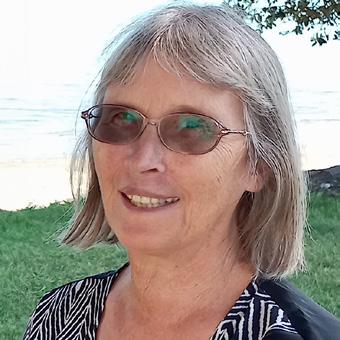
But locals have been flouting the rules and removing 1.5 tonne concrete blocks installed to prevent vehicle access to the beach.
Council signs have been damaged, and new tracks through the dunes have been impacting native vegetation.
“We humans have developed most of the coast, and now we are disturbing them in their last refuges,” Linda told councillors.
“The facts are that the road rules apply on beaches, but access onto beaches is regulated through rules in district plans and bylaws.
“The council has a responsibility to follow through on its rules and bylaws, and enforce them.”
Forest & Bird has been protecting dotterels in the Bay of Plenty since the 1980s, including patrolling beaches to prevent them being disturbed by vehicles, dogs, and people.
WHAT DOES FOREST & BIRD WANT?
We encourage local councils to consider taking the following actions:
n Work together to improve coastal protections for vulnerable species from vehicles on beaches. An arbitrary council boundary line should not result in stark differences in beach and coastal protections. Neighbouring councils should be protecting their coasts consistently.
n Use the Land Transport Act (specifically section 22AB(1)(f) and (g)) to restrict the use of motor vehicles on unformed legal roads (including beaches) for the purpose of protecting the environment, instead of relying on provisions in the Local Government Act, which does not allow bylaw creation for environmental reasons.
n Put more resource (dedicated staff and budget) into compliance and enforcement of regulations.
n Provide better information to the public about driving on beaches, such as dedicated webpages on council websites, and clear and adequate signage at beach entry points.
n Prioritise implementation of the National Policy Statement on Indigenous Biodiversity to provide information to their communities about managing adverse effects on highly mobile fauna and their habitats.
n Improve cooperation across and between councils, the Department of Conservation, and the NZ Police to enforce local regulation (bylaws) and national legislation, such as the Land Transport Act and Marine Mammals Protection Regulations.
HOW CAN YOU HELP?
1 Download Forest & Bird’s Vehicles on Beaches report (bit.ly/3IgFt5N) and infographic (bit.ly/4bNnj9k) and see how your local council is doing.
2 Ask your local council to create a new bylaw or review existing bylaws for better coastal protection of biodiversity and natural features.
3 You can use this letter template here (bit.ly/3UYKjMS) to write to your local council asking for stronger protections.
4 Report any concerning behaviour to your local council, DOC (0800 DOC HOT 0800 362 468), or NZ Police (105).
5 Join your local Forest & Bird branch or Youth hub and support their advocacy to control vehicles on beaches.
COVER →
Linda Conning
Tūturiwhatu New Zealand dotterel Bryce McQuillan
|
&
Te Reo o te Taiao 16
Forest
Bird

Cherish the beauty of native New Zealand
Own a special piece of Aotearoa’s unique flora and fauna with a limited edition BLUNT x Forest & Bird umbrella.
Proceeds from every umbrella sold go directly to Forest & Bird to help continue their conservation legacy in giving nature a voice.

BLUNT Metro Birds
by Rachel Walker

BLUNT Metro Forest
by Erin Forsyth








17 Autumn 2024 |
Available at bluntumbrellas.co.nz and in select BLUNT stockists

DENNISTON UNDER THREAT
We need your help to ensure the Denniston Plateau, with its unique flora and fauna, is not destroyed by new open cast coal mines
Coal company Bathurst Resources wants to expand mining on the West Coast, with plans for up to four new mines on public conservation land on the Denniston Plateau.
The company is dusting off a more-than-a-decadeold South Buller expansion plan, which Forest & Bird’s members fought against in 2012.
If permitted, the new mines will destroy Denniston’s rare coal measure habitat, and its special native plants and animals, including the recently discovered Avatar moth, and West Coast green geckos.
Bathurst wants to expand its (currently mothballed) Escarpment mine and open new mining operations on conservation land at Whareatea West, the most ecologically valuable area on the plateau, as well as Cascade and Coalbrookdale (see map overleaf).
“This is last-chance coal mining,” says Forest & Bird chief executive Nicola Toki. “We know new coal mines are incompatible with a safe climate. But companies are trying to get in now there is a new coalition government and before public opinion catches up with them.

Lynley Hargreaves
“I was blown away when I first went up to the Denniston Plateau and saw for myself the enormous diversity of tiny plants and giant insects, from pygmy pine and dwarf rātā to huge wētā and giant land snails.”
The company plans to build a 19.7km haul road between Denniston and its Stockton mine on the Buller Plateau, including 7km of new road, according to its market announcement to the Australian Securities Exchange in October 2023. Some of the road would cross publicly owned conservation land.
Bathurst says it has “completed conceptual design options for the Upper Waimangaroa haul road, including assessment of a slurry pipeline option”, according to its 2023 annual report. “The haul road would connect Denniston Plateau to mining infrastructure at the Stockton mine,” it added.
The company also said it was renewing consents and planned to extend the Escarpment mine. In a report to investors in 2022, it announced an intention to start extracting coal from Denniston in 2026.
In February, Forest & Bird wrote to Bathurst requesting details of its plans for Denniston, including the route of the proposed haul road. We asked for the total estimated greenhouse gas emissions for the extraction and use of coal from the Buller Plateau and whether the company has disclosed any risk of stranded assets to its investors.
We have also sought more information about the mining company’s plans from the Department of Conservation.
NO NEW MINES
The view northwest across public conservation land.
Denniston Plateau. with Stockton Plateau in the farleft distance. Rod Morris (AGAIN)
| Forest & Bird Te Reo o te Taiao 18
Denniston is home to West Coast green gecko. Carey Knox
“Denniston is the last place anyone should be digging enormous open-cast mine pits. This important wetland is a unique ecological wonderland unlike anywhere else I’ve ever seen in New Zealand,” added Nicola.
“With an inhospitable climate, the plateau operates like a natural refuge, with low numbers of predators and unusually high numbers of native birds, lizards, and invertebrates.”
In 2012, as part of our opposition to a proposed new mine, Forest & Bird ran a biological census or Bioblitz on the plateau. The 150 scientists and volunteers found new and unusual species, including the tiny colourful day-flying and endangered Avatar moth.
In November the same year, Forest & Bird tried to stop the Escarpment mine being consented in what became the Society’s largest and costliest legal case in the Environment Court.
We lost that legal battle, and the mine was consented, although we did achieve a smaller footprint. But soon after opening, the Escarpment mine was mothballed when coal prices plummeted. It has been sitting in “care and maintenance” since 2016, and the land remains largely undeveloped.
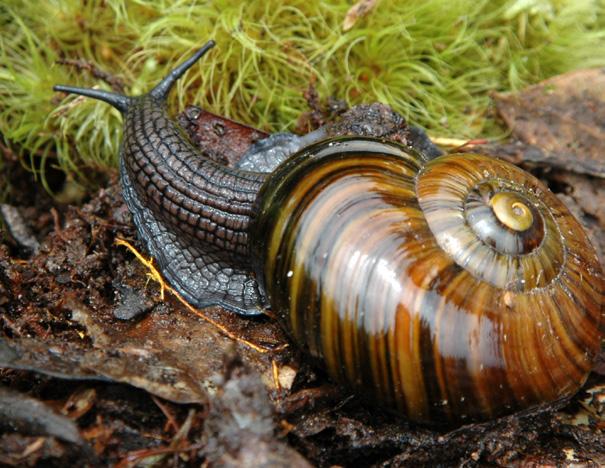
At the time of granting resource consent for the mine, the commissioners said: “From the evidence presented to us, it is abundantly clear that large-scale mining is poised to invade the entire Denniston Plateau coal reserves which if unchecked, will totally destroy the ecosystems which are present.”
Meanwhile, the National-ACT-New Zealand First government looks intent on welcoming any company that wishes to expand fossil fuel extraction, including coal, in Aotearoa New Zealand.
The coalition agreement states the government will change the Crown Minerals Act so that its role is to “promote” the use of Crown minerals.
In addition, new legislation that fast-tracks consenting requirements for developments could remove crucial environmental controls and public participation (see page 30).
Speaking in Parliament last December, Resources Minister Shane Jones, a New Zealand First MP, said that “mining is coming back” and wrongly claimed that stewardship land is not conservation land.
“We most certainly need those rare earth minerals. In those areas called the Department of Conservation (DOC) estate, where it’s stewardship land, stewardship land is not DOC land, and if there is a mineral, if there is a mining opportunity and it’s impeded by a blind frog, goodbye, Freddy.”
Minister Jones was referencing a proposed gold mine in the Coromandel that would impact the highly
endangered Archey’s frogs. Forest & Bird has been campaigning for years against the proposed new mine on conservation land near Waihi.
Large-scale coal mines operate for long periods of time, so any given permission now could still be destroying conservation land in the 2040s, adds Nicola. “It’s particularly heartbreaking because we were so close to protecting conservation land from mining.”

Forest & Bird called for the previous Labour-led government to fulfil its promise of no new mines on conservation land. Thanks to your generous donations and our branch volunteers’ efforts, we were close to achieving this goal.
By 2023, legislation was drafted and the Department of Conservation’s post-election briefing for its incoming Minister listed the Bill as one of three pieces of law that were close to completion. But it was never tabled in Parliament.
“We will keep fighting to protect conservation land from mining, even if we have to do that one mine at a time,” says Nicola. “Mining destroys conservation land that is vital for nature, the climate, and our collective future.

→
Avatar moth (Arctesthes avatar). Brian Patrick
19 Autumn 2024 | Find a path to ethical investing • Independently-researched portfolios • 2022 & 2023 Mindful Money Best Ethical Financial Adviser • Expert advice Call 09 337 0997 to talk to one of our advisers or find out more at ethicalinvesting.nz
Powelliphanta patrickensis on Denniston Plateau.
Proposed mining expansion Denniston-Buller plateau, West Coast

Stockton mine
Proposed haul road between Stockton and Escarpment
WESTPORT
Whareatea West
Escarpment mine
Denniston Plateau
Coalbrookdale
Cascade
MOUNT ROCHFORT
SAVE DENNISTON FUNDRAISING APPEAL
You helped us fight for Denniston in 2012 –please help us do it again.
Forest & Bird is locked in a David and Goliath legal battle for the future of our country. We need to stand up and say no new mines on conservation land.
Your gift will help us build a vital Protect Denniston Fund that will help us defend Denniston against a government that wants to open up this precious place to a majority foreign-owned coal mining company for a quick buck.
As soon as coal prices drop, they will close the mines they open. We know this because they’ve done it before when they mothballed the newly opened Escarpment mine in 2016.
Let’s get rid of new coal mines in New Zealand forever. Let’s make history together.
You are the heart of the work we do. You make the fight possible. Please spread the word that our wild places are not for sale for climate-destroying coal mines.
Donate today at www.forestandbird.org.nz/ProtectDenniston
HOLDING THE LINE
It takes many years to develop a new large-scale coal mine and just as many to prevent them. Forest & Bird has spent the past seven years opposing another new coal mine at Te Kuha, just south of the Denniston Plateau, proposed by Stevenson Mining.
Thousands of you supported our efforts with generous gifts of money and time. Together, we have so far stopped an open-cast mine destroying ancient forest and an entire hilltop at the mine site, which overlooks Westport. This includes a win in the Supreme Court.
Forest & Bird lawyers were due to defend Te Kuha at the High Court in April. But in March Stevenson withdrew its appeal, raising concerns the proposed mine may be fasttracked for approval by Ministers (see page 9).
Forest & Bird’s legal team is involved in Environment Court mediation on environmental offset and compensation proposals after the closure of Bathurst’s Colgate mine, west of Christchurch. The company was served with dozens of infringement notices for allowing sediment to get into a stream home to the highly endangered Canterbury mudfish.
“We know we’re facing off against huge corporate interests, but Forest & Bird has been securing better legal protections for nature for more than 100 years and counting,” said Nicola.
“We’ve done it before, and we need your help now, more than ever before, to help us make a stand for nature and the climate.”
→
NO NEW MINES
Te Kuha proposed new (Stevenson Mining)
| Forest & Bird Te Reo o te Taiao 20
ONE SHELL OF A MYSTERY
How we stumbled across a mythical creature of the deep on a Northland beach. Alison Pickering
Fishing that night had been particularly unproductive. Hours spent perched on the rocky margins of Tutukaka Harbour produced little, but we persisted well into the night. As we packed up, disappointed, my sharp-eyed husband Graham Pickering spotted something floating at the edge of his field of vision.
It had the eye of a squid but was bobbing about in a manner unlike any squid he had seen. As it drifted closer, Graham recognised the spiral shape of a nautilus.
Reaching out to retrieve the shell, it abruptly sunk out of sight. To our relief, it floated back up to the surface, and Graham retrieved the shell, only to find something very alive was inside it.
The creature had eyes like a squid and tentacles like an octopus, and it was very firmly stuck inside. We filmed our discovery, thinking that, if it was an octopus, it would come out of the shell and find another watery hiding place, so we could keep the shell.

But as we watched, we discovered something truly amazing – there were thousands of eggs inside the shell. So, of course, we let her float off into the night.
After researching this discovery, we learned how special our observation was. We had found a live female
knobbed argonaut octopus, Argonauta nodosus, one of the most fascinating and elusive creatures of the ocean. Argonauts are usually observed in deeper water, only coming up to the surface to feed at night.

This is quite a different strategy than that of other octopuses who live on the ocean floor so they can dart into crevices for protection.
Also known as the paper nautilus, these unique creatures live in temperate and tropical waters, including around the Poor Knights Islands.
A female argonaut creates her shell by secreting a calcite substance from two specialised webbed arms, challenging the notion that argonauts borrowed their shell from other organisms, a myth perpetuated from Aristotle’s time. This structure is actually an egg case and brood chamber, rather than a true shell.
Males do not have a shell – instead, their unique feature is a modified third left arm, or hectocotylus, that is his reproductive organ.
Research divers spend years trying to observe these creatures in the wild.
Given the few times we spend fishing in the dark, confined to land rather than the ocean depths, we feel privileged to have encountered this amazing cephalopod – she taught us so much about the wonders of the world we live in.
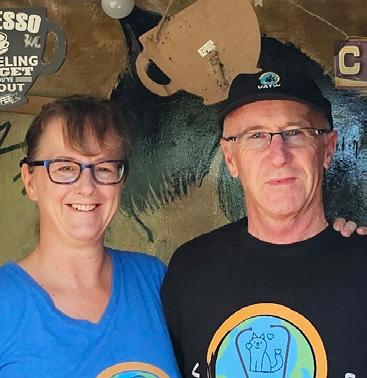
Watch Graham and Alison Pickering’s video about their argonaut find at https://youtu.be/ Hi8EOdTpYT0?si=GhdXO8Ug6Icesy4V.
Alison is a veterinarian and Graham a retired ship’s navigator. The couple document their travels around the world at www. vetaroundtheworld.com.
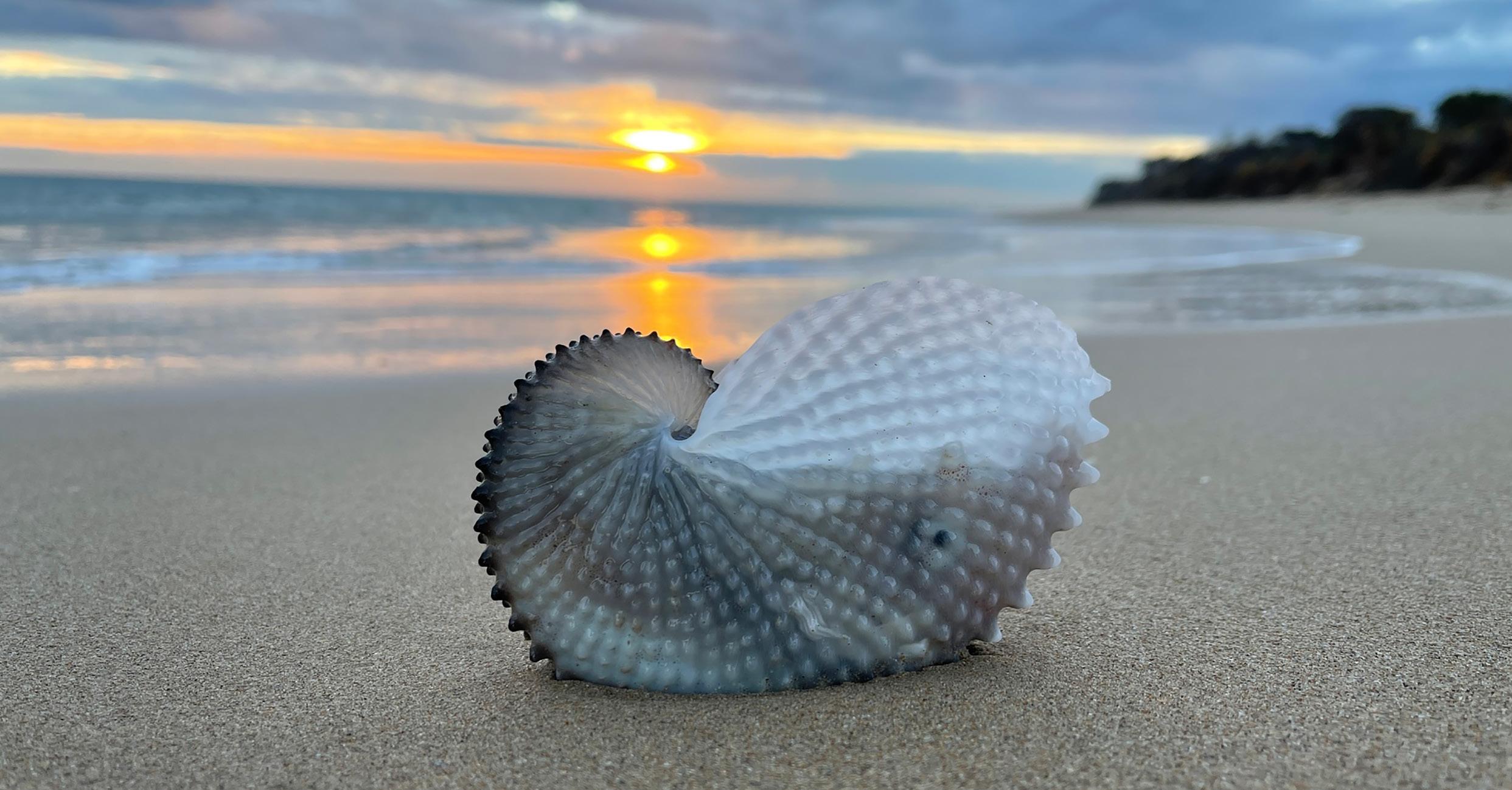

MARINE
Knobbed argonaut
Josie Jones/iNaturalist
21 Autumn 2024 |

WHERE IN THE WORLD?
Old podocarp forest stands alongside rare native plant collections cared for by gardeners, conservation scientists, and community volunteers at Wellington’s Ōtari-Wilton’s Bush.
Kathy Ombler
It’s dusk. Kākā screech around an old hīnau tree, epiphytes dripping from its upper branches. Nearby is a subtropical Manawatāwhi kaikōmako, from the Three Kings Islands, grown from a cutting taken in 1945 from the last tree left of the species.
Turn around and you’ll see a 1000-year-old northern rātā, while just down the path stands a smaller rātā moehau. Only 13 of these white-flowering trees remain in the wild. A spiky taramea speargrass lurks beside the tarn of a native alpine garden.
A number 14 city bus pulls up, its stop just 5km from the Wellington CBD. Welcome to Ōtari Native Botanic Garden and Wilton’s Bush Reserve, known more simply as Ōtari-Wilton’s Bush and officially recognised as a six-star garden of international significance.
 Job Wilton
Job Wilton
How can it be that such old forest, botanical rarities, and sub-alpine plants exist in our capital city? The answer, essentially, is foresight.
In the 1860s, much of the land at Ōtari was cleared for farming, but one forwardthinking settler, Job Wilton, recognised the value of the lowland podocarp forest and fenced off 7ha of the land for its protection.
He also welcomed the public to visit, and weekend picnics at Wilton’s Bush became quite the thing for Wellington families and church groups. A gently
graded dray road, built by Wilton for access to his farm, today forms one of Ōtari’s most popular walking tracks.
As a settler/farmer, Wilton was perhaps a man ahead of his time. Later, when farming stopped and adjoining land was reserved, his unfelled forest became the best possible seed nursery, allowing rapid natural regeneration in the valley.
Fifty years on, another visionary, botanist Leonard Cockayne, one of Forest & Bird’s founder members, expressed alarm at the pace with which New Zealand’s native vegetation was being destroyed.
With support from Wellington’s Director of Parks and Reserves, J G MacKenzie, and promotion by the Royal NZ Institute of Horticulture, five acres at Ōtari were set aside for an “Open Air Native Plant Museum”,

COMMUNITY
| Forest & Bird Te Reo o te Taiao 22
View of Ōtari-Wilton’s Bush 1932. Photographer unknown. Alexander Turnbull Library

which officially opened in 1926.
Here, native plants gathered from around the country were planted in traditional taxonomic living collections, and Cockayne became one of the first to attempt to recreate ecosystems from around New Zealand that replicated the plants’ natural habitats.
Today, Ōtari is officially a botanic garden – in fact, the only public botanic garden in New Zealand dedicated to native plants. Around 1200 species, 340 of them threatened, from all around New Zealand and its offshore islands grow here.
Alongside stands Wilton’s Bush, now a 100ha reserve of mature native forest, most of it more than 100 years into regeneration, along with the original remnant forest protected by Wilton. Together, the forest and gardens combine to make one grand interdependent nature experience.
Cockayne’s four-point vision for Ōtari was to grow as many native species as possible, demonstrate New Zealand’s many different plant communities, show how native species could be worthy garden plants, and restore the adjoining native forest to its natural state.
Almost a hundred years on, aided by a succession of similarly motivated curators each adding their own enhancements – Walter Brockie’s Rock Garden, Ray Mole’s Fernery, Mike Oates’ Canopy Walkway and Alpine Garden, Rewi Elliot’s 38 Degrees Garden, and current manager Tim Park’s Rēkohu and Epiphytes Gardens – Ōtari-Wilton’s Bush continues to evolve, always inspired by Cockayne’s vision.
The place is also incredibly popular, not only for learned botanists and scientists. Families, friends, walkers, runners, garden clubs, students, kairaranga
(weavers), photographers, locals, and visitors all regularly enjoy the garden collections, the forest tracks, the picnic and barbecue lawns, the birdlife, and spotting tuna in the Kaiwharawhara Stream.
And let’s not forget the volunteers: from retired botanists to keen locals to teenage trappers, there is huge community commitment to support and enable what is happening here.
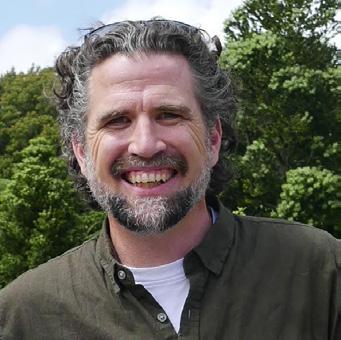
“Our gardening staff simply couldn’t do what we do without our wonderful volunteers,” says Ōtari Manager Tim Park. “They also bring a spark of energy due to their love of the place. This really encourages our determination to inspire people with our native plants.”
Bringing people and plants together and building relationships with mana whenua will be Tim’s ongoing focus for Ōtari-Wilton’s Bush. He says the new Rēkohu Garden, showcasing plants from the Chatham Islands, is an example of this.
“Moriori have shared their knowledge. Now, we are using this to tell the story of the evolution of plants in New Zealand, with and without influence such as moa. Our staff have also contributed to restoration on Rēkohu, so we’ve built a two-way relationship.”

At last December’s opening of Ōtari’s Pā Harakeke, a collection of harakeke plants especially chosen and planted for weavers, Tim spoke with emotion about embracing the cultural use of plants.
“These plants are not curiosities. They are able to be used, and they are resources that can strengthen our cultural connections.”
Ōtari-Wilton’s Bush is managed by Wellington City Council. Staff include gardeners, plant conservation scientists and a plant collections archivist. They are a dedicated lot with specialist knowledge. Gardener Dave Bidgood, for example, has been at Ōtari for 25 years and developed a huge understanding of the specific nurturing required for the many rare native plants in Ōtari’s care.
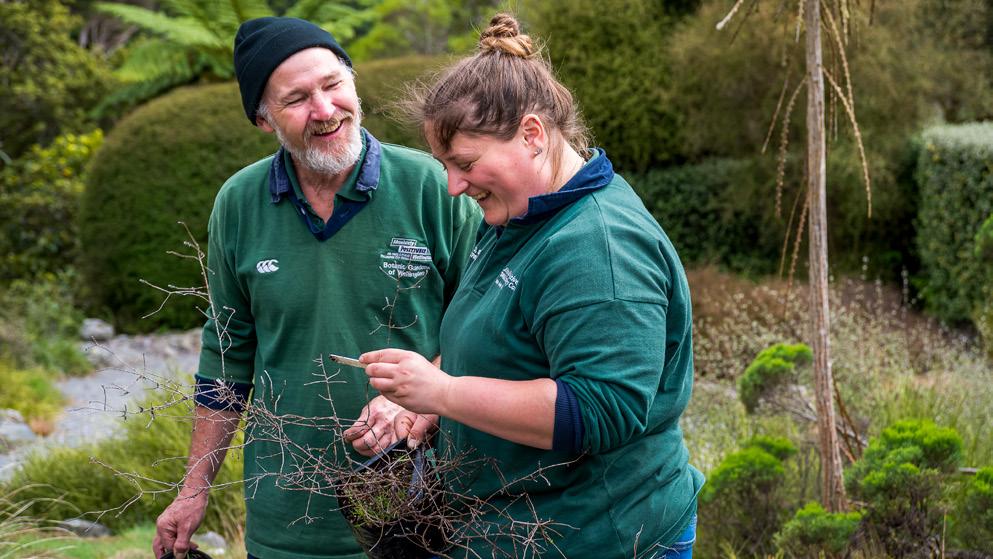
→
Tim Park
Lily Yochay harvesting harakeke.
Ōtari-Wilton’s Bush is a six-star garden of international significance. Chris Coad
23 Autumn 2024 |
Ōtari staff Dave Bidgood and Megan Ireland Chris Coad

SIX STANDOUTS
MOKO, RIMU, DACRYDIUM CUPRESSINUM
Wellingtonians love to visit Moko, Ōtari’s 800-year-old rimu, deemed so special it was bestowed a name by mana whenua. Like all the old-growth trees in Ōtari, Moko plays a vital role in the forest ecosystem, hosting epiphytes, including northern rātā and the rare kōhurangi Kirk’s daisy, locally extinct in Wellington until its recent return to Ōtari Moko.
Carol West

NGUTU KĀKĀ, KĀKĀBEAK, CLIANTHUS MAXIMUS
It’s hard to miss the flashy red ngutu kākā in Ōtari in spring. Kākābeak cultivars are readily available from garden centres, but only a handful of plants remain in the wild. Ōtari’s ngutu kākā now come from Tairāwhiti, gifted by Graeme Atkins of Ngāti Porou, as the seedlings were destined to be grazed to death by deer and goats in the wild. Ngutu kākā. Andy McArthur
The Ōtari-Wilton’s Bush Trust was established in 2001 to support the council in its management of Ōtari.
“We provide huge assistance with our bevy of volunteers who help with the inevitable shortfall of labour,” says Trust chair and noted botanist Dr Carol West.
“Trust volunteers have dedicated thousands of hours to forest restoration, weeding, replanting, garden maintenance, nursery propagation, predator control, guiding, and weekend hosting.

“Another key aim of the Trust is to promote awareness. We do this through hosting, guided walks, seminars, social media, and our book Ōtari: Two hundred years of Ōtari-Wilton’s Bush. The underpinning purpose of these activities is to educate people on the importance of our unique native flora.”
Advocacy is also a Trust focus. This year, it has been lobbying to keep a much-needed landscape redevelopment of the nursery and laboratory space in the city council’s long-term plan.
“I am very proud of what the Trust has achieved in 20 years,” says Carol. “Looking ahead, we are now poised to contribute even more significantly to native
MANAWATĀWHI KAIKŌMAKO, PENNANTIA BAYLISIANA
The unique flora of Manawatāwhi Three Kings Islands evolved in semi-tropical isolation, but goats, released in 1899 to provide food for castaways, decimated the vegetation. In 1945, a visiting botanist found just one manawatāwhi kaikōmako, growing on a cliff where the goats couldn’t reach. It was described then as the world’s rarest tree. The botanist retrieved cuttings, and one came to Ōtari, where the tree now flourishes. More of the species have subsequently been planted at Ōtari. Manawatāwhi kaikōmako. Kathy Ombler

RĀTĀ MOEHAU, BARTLETT’S RĀTĀ, METROSIDEROS BARTLETTII

This white-flowering tree rātā was known to northern iwi Ngāti Kuri but only “discovered” by botanist John Bartlett in 1975. Just 13 plants remain in the wild, near Spirits Bay. Two established rātā moehau trees grow in Ōtari, and the new “rātā shrine” structure hosts a young rātā moehau in the Epiphyte Garden. Ōtari staff are working to support Ngāti Kuri kaitiaki by cross-pollinating flowering cuttings taken from the few remaining plants in the wild to help the species recover. Bartlett’s rātā, rātā moehau. Carlos Lehnebach
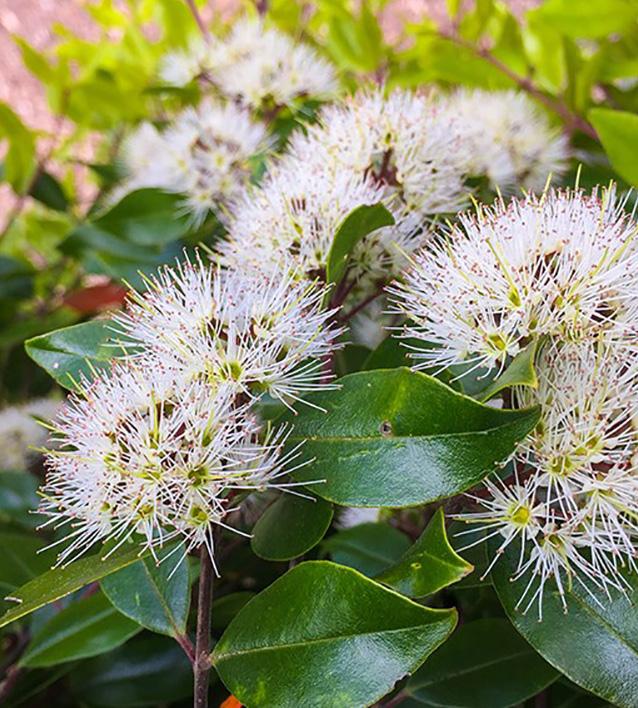
COMMUNITY
Dr Carol West
| Forest & Bird Te Reo o te Taiao 24
Chris Coad
plant conservation, with the recent establishment of the Ōtari-Wilton’s Bush Fund.” The Fund was launched in partnership with the Nikau Foundation in February.
In all, a huge sense of community and care exists around Ōtari-Wilton’s Bush. This was epitomised at the opening of Pā Harakeke, when staff, trustees, volunteers, locals, and weavers all came together, sang tautoko waiata, and helped with the first hauhake harvest. Some then joined a raranga weaving workshop in the Leonard Cockayne Centre, the former curator’s house, that looks over the plant collections, past the grave of Leonard Cockayne, to the forest beyond.
Entwining people, plants, culture, history, and conservation, it was Ōtari-Wilton’s Bush encapsulated.

KŌHURANGI, KIRK’S DAISY, BRACHYGLOTTIS KIRKII VAR. KIRKII
Usually an epiphyte but also grows as a small shrub, this threatened white daisy is highly palatable to introduced mammals and was extinct in Wellington city. Plants collected from Wellington regional parks now flourish as both epiphytes on Moko and other old trees and as a shrub in the garden collections.
Kirk’s daisy. Kathy
Ombler
NORTHERN RĀTĀ, METROSIDEROS ROBUSTA
Wellington’s northern rātā forests were cleared for farming, felled for building, and subsequently ravaged by possums. But, thanks to Job Wilton’s protection and later intensive possum control, the city’s only old-growth northern rātā forest survives in Ōtari. Some may be more than 1000 years old, and the tallest are more than 30m high.
Northern rātā. Kathy Ombler
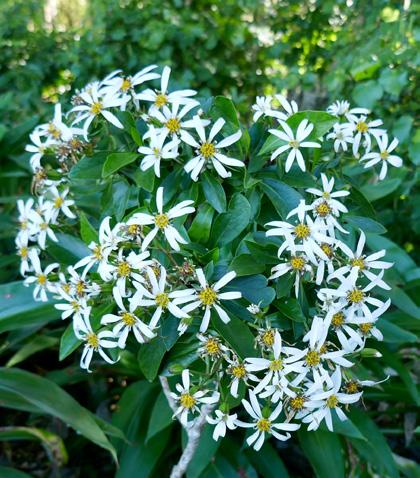

LEONARD COCKAYNE (1855–1934)
VISIONARY BOTANIST
Cockayne is regarded as one of the country’s most influential scientists and prolific observers of New Zealand plants and vegetation.
For more than 30 years, he conducted botanical surveys throughout New Zealand, including the subAntarctic and Chatham Islands. His work was influential in the formation of Arthur’s Pass National Park and kauri protection in Waipoua Forest.
He was passionate about plant ecology, and many of his published works remain the standard accounts of New Zealand vegetation.
He was, said Kew Gardens director Sir Arthur Hill, “an ecologist waiting for the term to be adopted by botanists”. With Hill and other colleagues, he scoured the country, from mountains to offshore islands, collecting plants for observation and research at his beloved Ōtari.

It was indeed good fortune for Wellington that Cockayne settled there and realised his dream of creating a “museum” of native species. Cockayne and his wife Maude now rest in peace in Ōtari, their grave marked by a massive memorial stone overlooking the gardens and forest.

Feed
tūī, bellbird, hihi, kākā, silvereye & more
● Cat proof! 360 degrees of visibilty while birds feed
● Provides sugar water, fruit & energy truffles
● Feeder can go anywhere, it’s on a waratah
● Stainless steel nozzle ensures safe, hygienic feeding & easy cleaning to prevent the spread of avian pox.
Buy a feeder at PFNZ shop.predatorfreenz.org
For more info go to our website pekapekabirdfeeders.nz
25 Autumn 2024 |
Volunteer gardeners Kathy Ombler
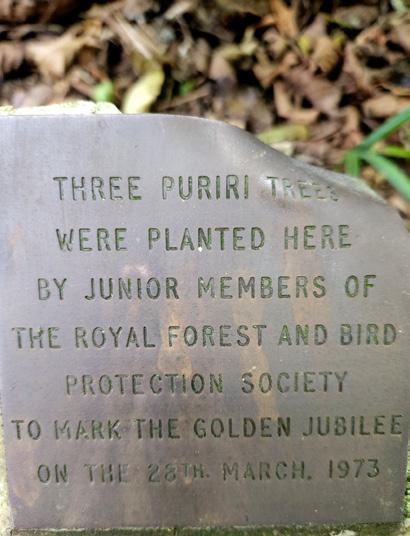

SHARED VISION
Forest & Bird members have always taken a close interest in Ōtari. This plaque in the gardens marks the spot where three puriri trees were planted by junior members to celebrate the organisation’s golden jubilee in 1973. Forest & Bird has just turned 100, and the centenary of the creation of Ōtari’s “open air native plant museum” will be celebrated in 2026.
Ōtari-Wilton’s Bush is an exemplar of a modern landscape-based restoration project bringing people and plants together. Kathy Ombler
In Tāne Whakapiripiri, Ōtari’s visitor centre, three carved and woven panels created by artist Matthew McIntyre Wilson (Taranaki, Ngā Māhanga, Titahi) show a thoughtful message.
Made from a fallen tōtara, and kiekie and rātā vines, the three panels represent the untouched forest before people arrived, the destruction that occurred when they did, and, lastly, the search for a new way for the future.
Ōtarikākā, the place to snare kākā, was traditionally a mahinga kai, a place for gathering food valued by iwi since the earliest settlements around Te Whanganuia-Tara. Today, Taranaki Whānui, Te Āti Awa, and Ngāti Toa Rangatira hold Ōtari within their respective rohe boundaries.
Tim Park grew up near Ōtari and played in the stream and on the rocks in the rock garden, as all local kids do. He learned about plants from his dad, ecologist Geoff Park, before heading off on a career
focused on plant ecology, surveying forests and reserves across the country for DOC, ecological consultants, Queen Elizabeth II National Trust, and, more recently, councils.
As Ōtari Manager, he is living the dream. His passion and focus are weaving conservation science with mātauranga Māori, with due respect for the whakapapa of plants.
“I’m determined that our work in the conservation science and horticulture space is done with the support of kaitiaki, the guardians of these species – for example, Ngāti Porou (ngutu kākā) and Ngāti Kuri (rātā moehau),” he says.
“We work with kaitiaki to improve our plant collections by ensuring they are sourced from their natural habitat. My team has developed some amazing skills which can support recovery of native plants in the wild. But it’s not about us assuming we know best – we work to support kaitiaki with the skills we have.

“We love bringing plants and people together. That’s what it’s all about.”
Intensive pest control throughout Ōtari has enhanced the forest and helped the birdlife flourish. Volunteers working with the Rats and Mustelids Blitzing Ōtari (RAMBO) group have been
COMMUNITY
| Forest & Bird Te Reo o te Taiao 26
Bèatrice Dèy and Frank Topia at raranga weaving workshop.
ridding Ōtari of its animal pests since 2007. Traplines now also extend into neighbouring reserves and across the skyline ridge, above Ōtari.
“We wouldn’t have the old northern rātā or be seeing the birdlife we see or have the breeding successes that we have in Ōtari if not for the pest control and trapping,” explains Tim Park.
“For me, having the kākā back here feels really significant. The name Ōtari comes from Ōtarikākā, ‘the place to trap kākā’. Now we trap pests to protect the kākā who nest in the trees here.”
In fact, Ōtari-Wilton’s Bush is the city’s “jewel in the crown” for native birds, says ornithologist Nikki McArthur, who recently completed a 12-year study that recorded a massive increase in native bird species in Wellington city reserves.
“Kererū have tripled in number across Wellington, and they are
going absolutely gangbusters in Ōtari,” he said. “Kākā have increased by 260%. These birds really enjoy Ōtari’s old-growth forest, with natural nesting holes in trees such as tawa and hīnau.”
Many of the native species counted were re-introduced to Zealandia, in nearby Karori, and have spread from there.
“The mature forest, old-growth trees, and predator control are the key reasons why these species have dispersed to and settled in Ōtari,” adds Nikki.
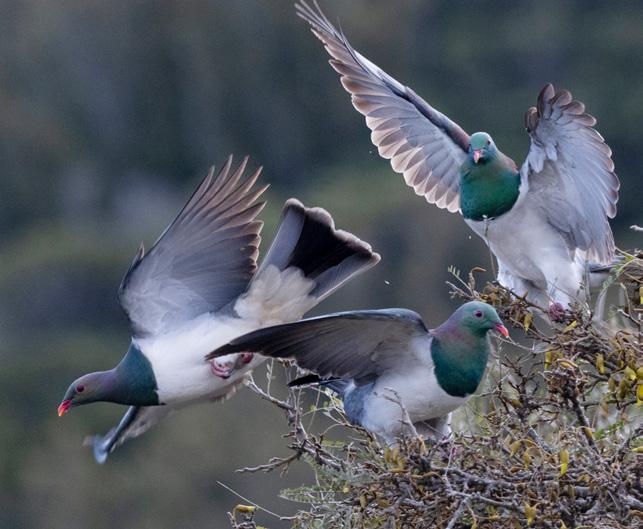
GROUND-BREAKING SCIENCE
Akauri seed storage project, initiated in 2020 by scientists at the Lions Ōtari Native Plant Conservation Laboratory, has garnered international attention.
“We are lucky because in Ōtari we have kauri growing onsite, planted in keeping with Cockayne’s vision, so we can source the seeds easily at the right time for our work,” says Conservation and Science Advisor Dr Karin van der Walt.
In February, Ōtari became the project lead for an international study looking into seed conservation of Araucariaceae species throughout the AsiaPacific Region. Ōtari’s kauri trees are currently unaffected by kauri dieback.
Meanwhile, painstaking research by van der Walt and research technician Jennifer Alderton-
Moss has led to the first successful germination and propagation of some of our rarest native orchids at Ōtari. Dr Carlos Lehnebach, Te Papa Botany curator and orchid guru, has described this work as groundbreaking.
Not bad, for a tiny laboratory that began life in a Portacom.

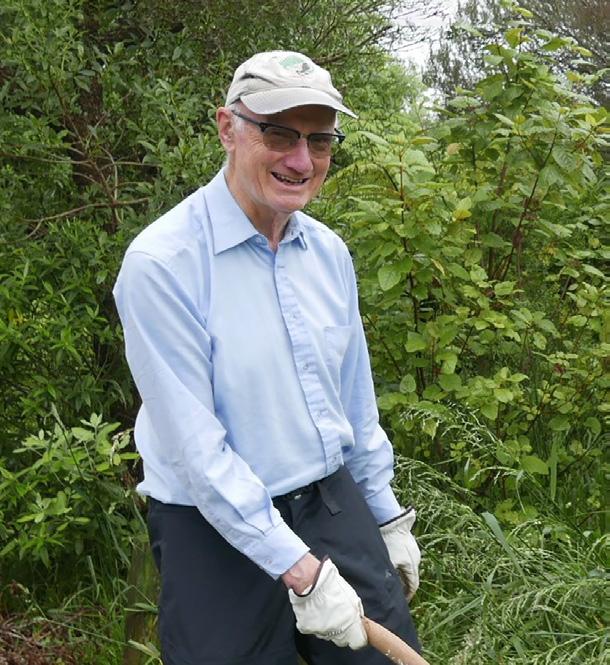
RESTORING STREAM LIFE
Te Mahanga is the original name for the headwaters of the Kaiwharawhara Stream, which flows through the heart of Ōtari-Wilton’s Bush.
And for a city stream, the Kaiwharawhara flows through a remarkably natural forested catchment, from Zealandia, in Karori, through Ōtari-Wilton’s Bush and Trelissick Park to the harbour. The gentle walk alongside the stream is one of Ōtari’s most popular.
It wasn’t always like this. Twenty years ago, the Ōtari streambanks were choked with blackberry, gorse, and rubbish. Enter the Kaiwharawhara Restoration Project, a model of community forest restoration. Since 2001, project volunteers have cleared rubbish, weeded, planted more than 35,000 trees, release-weeded, and, last year, helped restore a major slip.
The forest is flourishing, and still the volunteers continue, also now collaborating with Te Māra a Tāne Zealandia’s Sanctuary to Sea project (www.visitzealandia. com). This whole-of-catchment initiative, with its 100-year vision that the mauri lifeforce of the Kaiwharawhara is healed, is supported by all those involved with Ōtari-Wilton’s Bush.
Wilbur Dovey, coordinator Kaiwharawhara Revegetation Project. Kathy Ombler
Kererū on kōwhai. Andy McArthur
27 Autumn 2024 |
Karin van der Walt and Jennifer Alderton-Moss
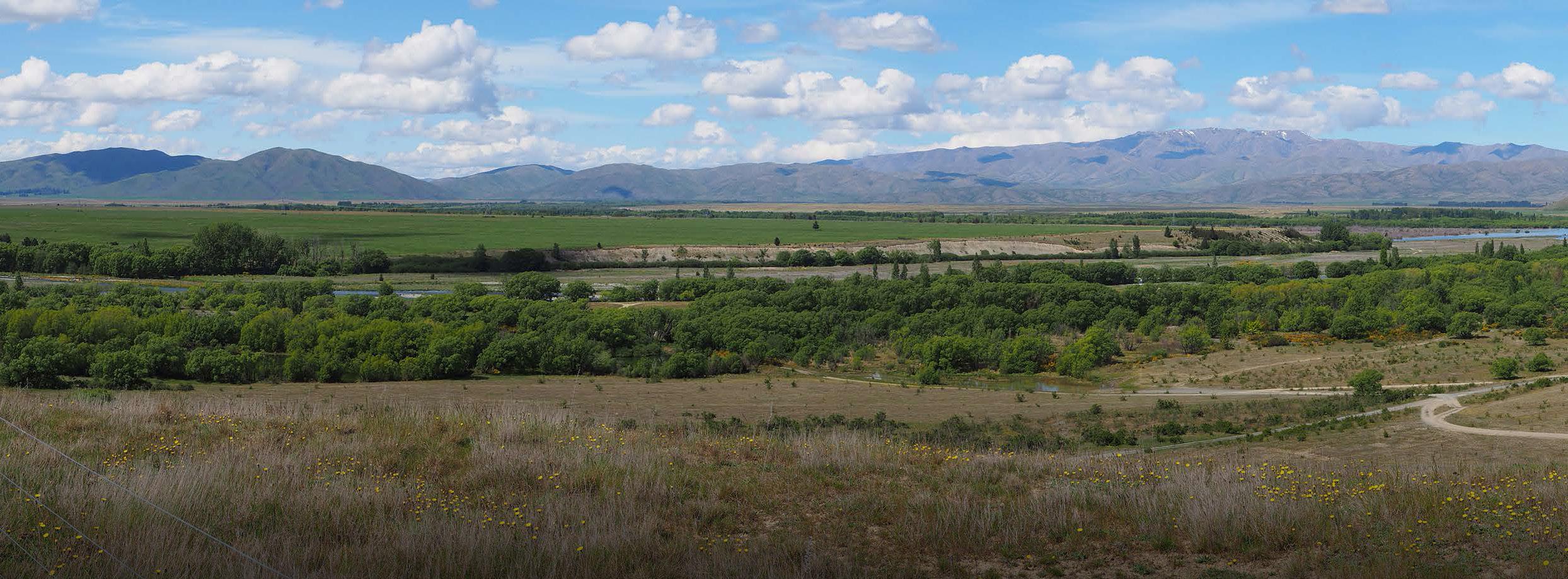
MACKENZIE BASIN SOLAR FARM THREATENS
Renewable energy developments need to be located in the right place and shouldn’t lead to further biodiversity loss Lynn Freeman
Forest & Bird is opposing plans to build what is believed would be the biggest solar farm in the country in the environmentally significant and fragile Mackenzie Basin.
Far North Solar Farms Ltd has applied to build a 420MW solar farm north of Lake Benmore, about 8km east of Twizel. The site is classified as Outstanding Natural Landscape under the district council plan.
The estimated $600 million solar farm would cover 670ha within the 968ha property and see 736,866 solar panels stationed on more than 28,000 tables.
The Point Solar Farm would be located on land degraded by farming activities but still considered important bird habitat. It is part of the Mackenzie Basin’s outstanding natural landscape.
A consent application was lodged on 29 November 2023, and submissions to Mackenzie District Council and Environment Canterbury on the consent application closed in early February. Forest & Bird made a detailed submission on the proposal.
Nicky Snoyink, our Canterbury and West Coast regional conservation manager, says the Far North Solar application for an industrial-scale solar array is inappropriate in the Mackenzie Basin Te Manahuna Outstanding
Natural Landscape.
The proposed activity, Forest & Bird’s submission says, will have significant adverse effects, and the resource consent application doesn’t promote sustainable management or adequately protect native flora and fauna.
Its location, between two rivers, is significant habitat for birds, lizards, and invertebrates, including kakī black stilt. Despite being degraded, the land is likely to contain indigenous vegetation.
The Society also argues that the assessment of alternative sites was inadequate.
“Forest & Bird supports renewable energy development to reduce carbon emissions and mitigate the worst impacts from climate change,” said Nicky.
“But it’s crucial that renewable energy proposals happen in appropriate locations and in the right way.
“Otherwise, development comes at the excessively high cost of lost indigenous biodiversity or characteristics that contribute to outstanding natural landscapes like this part of the MacKenzie Country.”
Forest & Bird believes the proposed activity is not consistent with the objectives and policies of the Mackenzie District Plan, the Canterbury Regional Policy Statement, the Canterbury Land and Water Regional Plan, the National
Policy Statement for Indigenous Biodiversity 2023, and the National Policy Statement for Freshwater Management 2020.
We have asked to speak to our submission when the date for resource consent hearings is set. We will fight for another victory for common sense – and for te taiao nature.


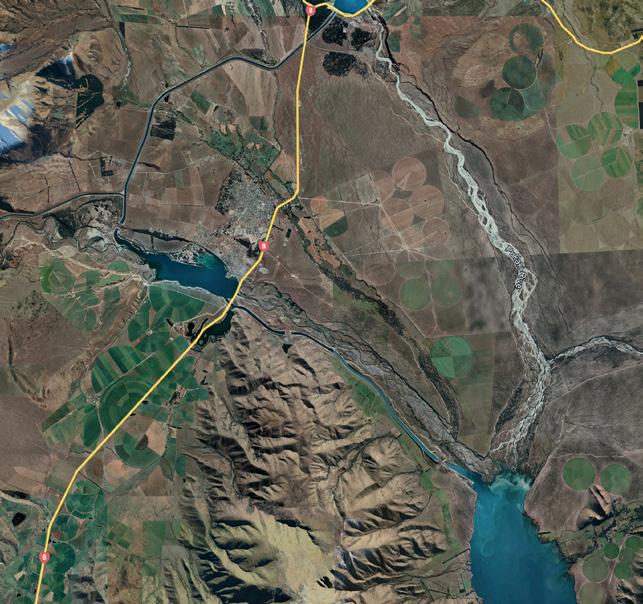
CLIMATE
Twizel
proposed development.
North Solar
Location of
Far
Farms
of proposed development
Indication
The site of the proposed solar farm between the Pukaki and Twizel rivers.
Far North Solar Farms
Pukaki River
Twizel River
| Forest & Bird Te Reo o te Taiao 28
Lake Benmore
WHAT IS FOREST & BIRD DOING?
The Mackenzie District Plan is currently under review, and Forest & Bird is asking councillors to include provisions that ensure new renewable energy developments do not adversely affect landscapes, native species diversity, and habitat.
Last November, Forest & Bird opposed another large-scale solar farm in the Mackenzie Country.
Independent Commissioners declined consent for a 90ha solar farm at Balmoral Station, near Tekapo, because of a loss of ecological values.
It was the first application of its type for the Mackenzie Basin, making it a crucially important precedent-setting case.
The decision has been appealed by the applicants Balmoral Station. Forest & Bird has joined the
appeal so our laywers can carry on fighting against this development.
In the North Island, our campaigns and advocacy team recently made a submission on a fast-track solar proposal at Ōpunaki, Taranaki, showing the potential adverse impacts of the development on native pekapeka long-tailed bats and their habitat.
Forest & Bird also submitted on the government’s draft National Policy Statement for Renewable Electricity Generation.
In our 48-page submission, the Society acknowledged the national significance of electricity transmission and the need to upscale renewable electricity generation to reduce greenhouse gas emissions from non-renewable sources, such as coal and gas.
However, mass transition
at scale and pace without good planning, strong regulation, and consideration of cumulative effects could be disastrous for outstanding landscapes and the biodiversity we have left.
Amelia Geary, who cowrote Forest & Bird’s submission, said:
“Decision makers need to learn from past mistakes. We shouldn’t be trying to solve one environmental crisis by exacerbating another.
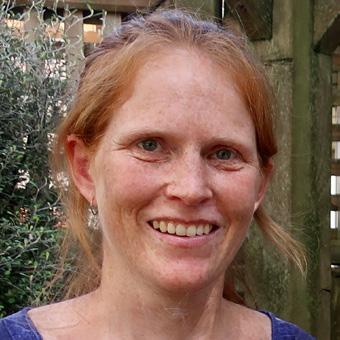
“The government needs to prioritise the protection and restoration of te taiao nature to ensure we address the biodiversity crisis while also meeting our climate targets.”

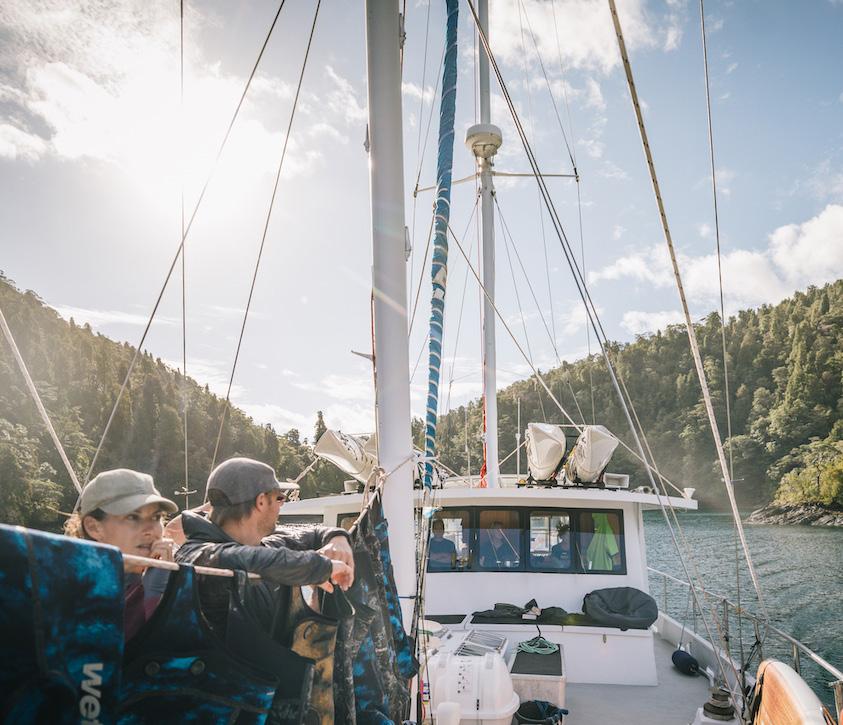
the hustle of modern life and sail into the serene on a remote, bespoke adventure into Fiordland. The Breaksea Girl your home in the wild, has all the creature comforts, a small family of expert guides and hosts a collection of multi-day adventures customised to get you closer than ever before.
IN
wildfiordland.co.nz
Escape
RECHARGE
THE WILD
KAYAK . SAIL. SNORKEL. FREE
DIVE HIKE. WINE. DINE. UNWIND.
Amelia Geary
PLANNING FOR EXTINCTION
The new coalition government will lead to the loss of more taonga species. Why can’t our decisionmakers see the wood for the trees? Teall Crossen

Nature is dying and the coalition government is set to hasten it along, undermining the wellbeing, prosperity, and lives of all of us.
Biodiversity underpins our wellbeing and livelihoods. Agriculture, forestry, fishing, and tourism all depend on a healthy natural environment.
An independent survey recently commissioned by Forest & Bird found that one in three New Zealanders sees the environment and conservation as one of the top causes that matter most to them.
Our connection to nature is part of how we identify as a country and as people. In te ao Māori, nature and people are connected through whakapapa and kaitiakitanga.
But successive governments have failed to keep te taiao nature safe, and much of our native fauna and flora is on the path to annihilation, with many species already locally extinct.
Things just got a whole lot worse with the new National-led coalition government busy rolling back environmental protections, potentially destroying decades of hard-fought gains by conservationists since the 1980s.
After last year’s general election, it became clear that decision-makers were actively planning for the demise of our precious birds, lizards, bats, and other native species.
Resources Minister Shane Jones told Parliament last December: “We are going to extract the dividend from Mother Nature’s legacy on the DOC estate in those areas previously called stewardship land.”
The government wanted a “fast-track process where the authority rests with the politicians” for aquaculture, mining, energy, and infrastructure projects, added Jones, a New Zealand First MP.
This threatens to undermine other policies adopted by the last government, including Te Mana o te Taiao in 2020, a national strategy to address the biodiversity crisis, and the National Policy Statement for Indigenous Biodiversity, which contained clearer rules to protect significant terrestrial biodiversity.

It was finally issued in 2023 – more than two decades after a previous government warned biodiversity decline is Aotearoa’s most pervasive environmental issue.
Now it’s clear that the National-ACT-NZ First coalition government is planning to assist our precious native species further along the road towards extinction.
The Natural and Built Environment Act and the Spatial Planning Act were both repealed before Christmas as part of the government’s 100-day action plan.
These new resource management laws weren’t perfect, but they did have some good principles. Developers, for example, couldn’t destroy habitat essential to the survival of nationally critically species.
OPINION
Hoiho, Disappointment Island, Auckland Islands. Jake Osborne
| Forest & Bird Te Reo o te Taiao 30
Shane Jones

The introduction of an environmental limit for indigenous biodiversity also provided a mechanism to better protect threatened species. These principles have now been lost with the repeal of the NBA laws.
Chris Bishop, the Minister for Resource Management Reform, is pushing ahead with permanent fast-track consenting legislation and his plans to replace the National Policy Statement for Freshwater Management.
Under this impending law, infrastructure and development projects approved by Ministers will go to an Expert Panel that can impose conditions but will have limited ability to decline a project. Without any meaningful statutory controls, further negative impacts on species are guaranteed.
Bishop gave stakeholders less than two weeks to provide feedback on significant legislation that will fundamentally weaken the protection of our natural environment.
In the coalition government’s third phase of reforms, the RMA is set to be replaced with legislation based on the “enjoyment of private property rights” rather than protecting the environment, providing for community wellbeing, the connection of iwi and hapū to te taiao, and ensuring new developments benefit everyone.
Existing protections for freshwater will be rewritten to better reflect the interests of “all water users”. This means more unsustainable farming, forestry, urban expansion, and mining will be allowed, untrammelled by meaningful environmental limits.
Yet the state of our freshwater is already grim, even under the current laws. Lakes and rivers are under pressure from pollution and water extraction, caused by the very activities the government wants to unleash.
Only 10% of indigenous wetlands remain –ecosystems that improve water quality, reduce floods, and are habitats for some of the most endangered plant species in Aotearoa.
We are heading down the path to fewer wetlands, dirtier rivers, and groundwater that isn’t safe to drink. It will also put further pressure on our freshwater species – almost 70% are already threatened or at risk.
Our marine species won’t fare well under the new government either. Here there weren’t any obvious laws to roll back, given the Marine Reserves Act is largely ineffective – it doesn’t allow protected areas for biodiversity purposes or enable meaningful participation by mana whenua in decision-making.
Creating marine protected areas needs new
legislation, and that’s not part of the government’s plan. With the international community recently agreeing to protect 30% of the marine environment by 2030 and Aotearoa New Zealand only fully protecting a fraction, we will continue to remain laggards in the international fight to stop the ocean’s collapse.
To be fair, National supports the Hauraki Gulf Tīkapa Moana Marine Protection Bill, which means this much needed protection for the Gulf is likely to be enacted. But that’s about as good as it gets.
The government is enabling damage to the marine environment by proposing to extend existing consent durations for all 1200 marine farms around Aotearoa by an additional 25 years (added to existing consent terms) without any environmental assessments. Marine farms can cause serious harm to sea floor ecosystems, seabirds, and marine mammals.
Cameras on fishing boats are also in jeopardy as Minister Jones seeks to overhaul the regime. Further afield, he has stopped efforts to curtail our own fishing fleet from destructive bottom trawling in the South Pacific – backtracking on international agreements to protect vulnerable marine ecosystems.
Then there’s the funding cuts of at least 6.5% to the Department of Conservation. It seems unlikely the coalition government will adequately fund conservation to ensure species get the help they need to stay out of the danger zone.
Around 80% of native bird species in Aotearoa are threatened with extinction or at risk of becoming threatened.
While funding is going into species recovery programmes for charismatic species such as kākāpō and takahē, many non-charismatic species are now less likely to receive funding. A worrying 85% of our land reptiles, for example, are threatened or at risk of extinction.
Christopher Luxon supports Predator Free New Zealand, but eradicating introduced predators from all of Aotearoa will require significant investment. One study has estimated the cost at $24.6 billion.
With tax cuts promised, no concrete details on where the money will come from, alongside fiscal reductions across the public service, it seems safe to say that protecting wildlife from introduced predators won’t be a priority for the next Budget.
I would have thought that no government, across the political spectrum, would want to allow native species to go extinct on their watch, but the National, New Zealand First, and ACT coalition government has actively planned for it.
Teall Crossen is an environmental law and policy advisor working in Aotearoa and internationally on protecting nature and climate justice.

31 Autumn 2024 |
Marine farms can damage the ocean environment. NIWA

WETLAND WONDERS
A constructed wetland was highly effective at cleaning up freshwater, absorbing up to 80% of key farm pollutants in a four-year NIWA study.
Andrea Rush
Well-designed wetlands are increasingly being used as a nature-based method to mitigate run-off and drainage from agricultural land.
Wetlands act as a barrier between agricultural areas and freshwater sources such as streams, rivers, and lakes, offering a natural solution in reducing pollution.
They can significantly soak up excess nitrate-nitrogen and other agricultural contaminants, improving the water quality exiting a wetland and enhancing the ecology of rural catchments.
Owl Farm is a 160ha dairy farm at St Peter’s School near Cambridge. A 0.34ha constructed wetland was built there in 2016 as part of a wider plan to reduce contaminant loads in farm drainage that flows into the
nearby Waikato River.
“We wanted to find out how well the constructed wetland was performing, and that’s where we began working with NIWA,” says farm manager Jo Sheridan.
A team of NIWA freshwater scientists embarked on a four-year project to evaluate the wetland’s capacity for nitrogen removal. Excess levels of nitrate-N can cause toxic algal blooms, reduce oxygen, and kill aquatic life.
The Owl Farm wetland receives a mix of surface water, tile drainage, and groundwater. It is difficult to measure all these different inflows and assess how well the wetland is operating.
Collecting data on the mass of contaminants in the farm run-off is also complicated by the variability
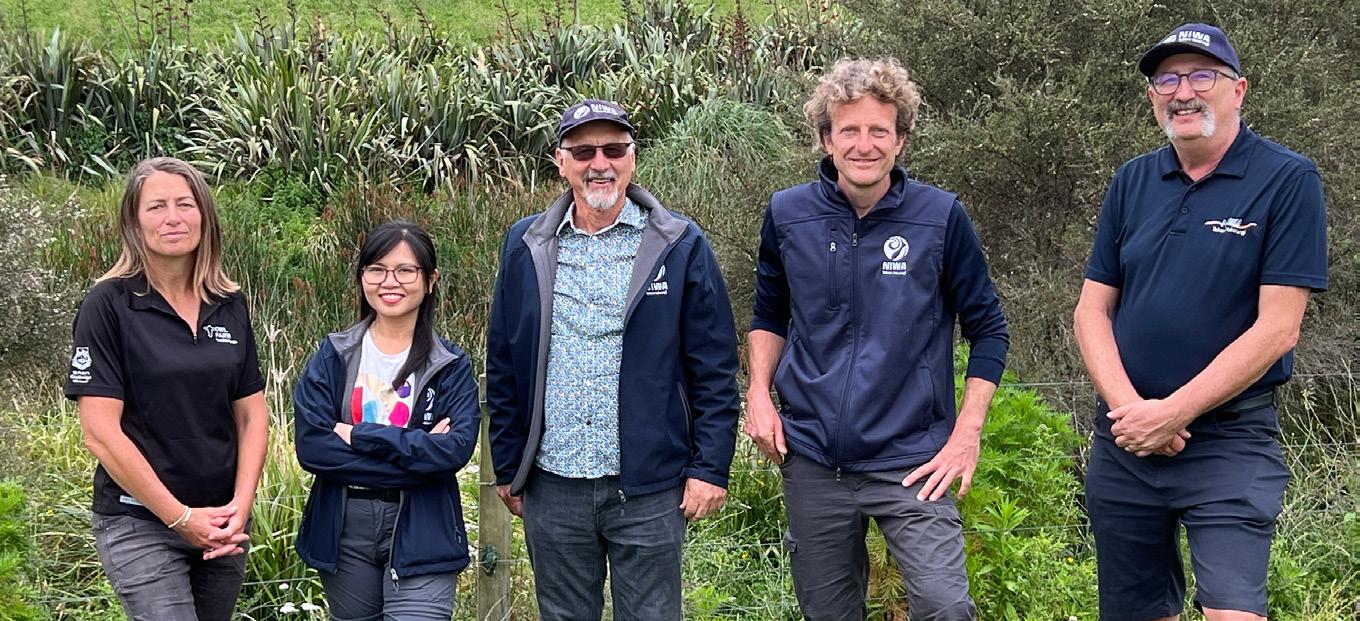
of both weather and climate.
NIWA Principal Scientist (Aquatic Pollution) Dr Chris Tanner says collecting enough samples to accurately estimate what’s coming into the wetland, in terms of flow and concentration, and comparing that with that coming out of the wetland was time consuming and prohibitively expensive.
So, instead, they turned to modelling.
Although water samples were collected periodically from a well intercepting groundwater seepage, from a tile drain, and from the wetland’s outflow, these samples didn’t yield enough information to accurately characterise the relative inflows from each source.
“To resolve that problem, we developed a linked catchment–wetland mathematical model to quantify inflows to the wetland and measure its contaminant removal performance,” says Dr Tanner.
“This modelling effort, led by Linh Hoang, allowed us to solve a previously unsolvable mystery.”
The Soil Water Assessment Tool (SWAT) catchment model was calibrated to the measured flows and contaminant loads, allowing the team to estimate inflows and contaminant loads in the three dominant wetland water sources heading into the wetland.
FRESHWATER
Owl Farm constructed wetland. NIWA
The Owl Farm team. From left: Jo Sheridan, Linh Hoang, Chris Tanner, Valerio Montemezzani, and James Sukias.
|
& Bird Te Reo o te Taiao 32
Forest
The wetland model was used to simulate the movement of water and contaminants through the three wetland cells and to estimate the flow and contaminant load entering and leaving the wetland.
The model estimates indicated that the constructed wetland was very effective, removing between 55% and 80% of the inflowing nitrate nitrogen load annually (with an average of 61%).
Removal was greatest when flows are low and during summer, when warm temperatures stimulate plant uptake and the conversion of nitrate to inert nitrogen gas by microbes. Although performance reduced as water flow rates increase, even during higher-flow periods nitrate removal was still maintained at 20%–40%.
Dr Tanner says the linked models were able to successfully simulate the hydrological processes of the catchment and wetland.
Surface runoff
• Sediment, microbes (particles)
• Nitrogen and phosphorus (particulate and dissolved).
Contaminant sources
• Fertiliser inputs
• Animal dung and urine
• Disturbed soil.

Constructed wetland
• Intercepts surface and groundwater
• Retains particles and contaminants
• Reduces nutrient loads through microbial processes and plant uptake.
Co-benefits
Wildlife habitat
Flow moderation
Carbon storage
Landscape aesthetics
Mahinga kai
“As well as being useful to measure the performance of other constructed wetlands where it’s difficult to directly sample all inflows and outflows, a linked catchment-wetland model provides a tool for predicting the cumulative water quality benefits of wider implementation of constructed
Subsurface transport (groundwater)
• Nitrogen (mainly nitrate-N)
• Phosphorus (limited, dissolved forms only)
wetlands across large catchments,” he says.
The effectiveness of constructed wetlands needs to be measured to determine whether more widespread implementation could be an important part of an effective long-term solution to water pollution.



 The ins and outs of a constructed on-farm wetland. NIWA
The ins and outs of a constructed on-farm wetland. NIWA
→

BIODIVERSITY BENEFITS
Artificially constructed wetlands, such as the one at Owl Farm, are primarily designed and placed within catchments to improve water quality in agricultural landscapes.
But another NIWA study has shown their dual benefits for biodiversity, with the constructed wetland attracting native species, kickstarting a richer more diverse on-farm ecosystem.
Across the country, around 90% of natural wetlands have been cleared. But in the Waikato, that number is even higher, with most of the rural land now dairy farm paddocks.
Study lead Dr Brandon Goeller, NIWA Riparian and Wetland Scientist (Aquatic Pollution), says he wanted to observe the flora and fauna that inhabit wetlands constructed for rural water quality improvement.
“We found the constructed wetlands were useful for putting shallow vegetated and deeper open-water pond habitats back in the landscape,” he explains.
“They provided habitat for invertebrates and fish, and places for birds to hide, nest, and feed.”
“Hardy native wetland plant species such as raupō, kuta, pukio, umbrella sedge, and kuawa that were planted in the wetland at Owl Farm were doing well.”
Scientists identified 113 plant, 20 bird, five mammal, 85 terrestrial invertebrates, 47 aquatic invertebrates, six fish, and two amphibian species across five
Waikato constructed wetlands, including Owl Farm.
Native species made up 96% of the total aquatic invertebrate fauna, including dragonflies and caddisflies, but less than half of species in other taxonomic groups (birds, plants, terrestrial invertebrates, mammals, and fish).
“Species with high or fast dispersal capabilities can start using the wetlands soon after they are built. We found plenty of pūkeko, paradise shelducks, and mallards, and tūī when the flax was in flower.
“Creating the constructed wetland habitat just 100m from the Waikato River provided a pocket of habitat for native fernbirds, which was a highlight at Owl Farm,” says Dr Goeller.
“We also found predator species, including rats, feral cats, and possums, at the wetlands, creating competition and predation for native species. Management of the exotic and pest species is needed to boost the benefits to native biodiversity.
“The study confirmed that establishing the wetland has been like kickstarting a richer, more diverse ecosystem.
“Besides improving water quality, constructed wetlands provide ‘stepping stones’, allowing freshwater flora and fauna to reestablish and be better connected through catchments.
“Adapting wetland design and managing them to be ‘dual purpose’ will have positive impacts on biodiversity.”

Constructed wetlands can remove nitrate contaminants, decrease downstream flooding, and provide a valuable habitat for native species. For more information, including NIWA’s guidance on how to design, review, or construct a new wetland, go to https://niwa.co.nz/ freshwater/management-tools/ restoration-tools/constructedwetland-guidelines
Forest & Bird wants see the number of wetlands in Aotearoa double to help mitigate climate change, clean up waterways, and boost biodiversity. For more information, go to: https:// www.forestandbird.org.nz/ resources/urgent-call-doublewetlands-climate.

→
Dr Brandon Goeller
Mātātā fernbird. Oscar Thomas
| Forest & Bird Te Reo o te Taiao 34
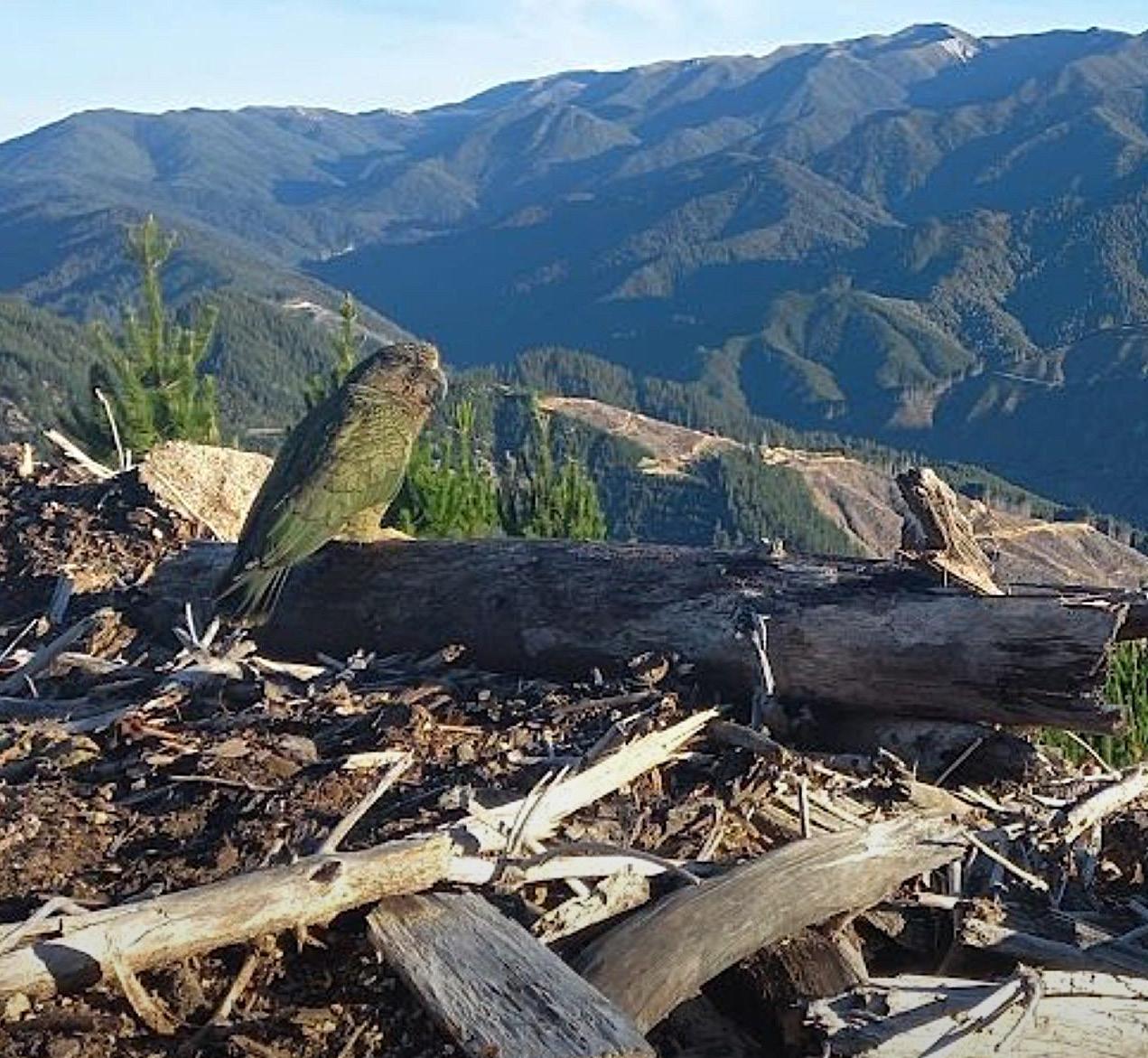
KEA
BETWEEN THE PINES
Ground-breaking research suggests predator control in plantation forests may benefit kea. Gary Moody
Lincoln University PhD student Jodanne Aitken spent a year tracking kea movement in a Nelson plantation forest next to a conservation area.
She found the native parrots fed, roosted, and nested among the pine trees and may benefit from predator control there.
With fewer than 7000 individuals in the wild, kea are listed as threatened and nationally endangered, which is the second-highest threat level in New Zealand.
Their typical South Island habitat includes lowland areas of podocarp forest, alpine beech forest, and mountain scree slopes. But conservation gains could be made where kea start using plantation forests as novel habitat, says Jordanne.
The monitoring and control of predator species (with kea-safe devices), especially of stoats and feral cats, could benefit the kea populations living in plantation forests.
The research project was first of its type with kea in this habitat type. Plantation forests occupy 1.73 million hectares of New Zealand’s total land area.
“This study can be seen as a preliminary approach to the question of kea utilisation of plantation forests and the role and importance of plantation forests in the conservation of kea,” says Jodanne, who last year coauthored a preliminary study based on the research.
“Understanding kea ecology, behaviour, abundance, distribution, and habitat use in these areas is vital for conservation practitioners and forestry companies in order to make informed wildlife management decisions alongside running viable commercial forestry operations.
“If managed correctly, there is ample opportunity for synergies between the economic and conservation aspects of plantation forestry.
“The GPS data we collected showed that the study kea spent a notable amount of time in the pine plantations.
“The observations and diet data demonstrated that kea exploit these areas for their daily activity and food resources,” she adds.
They ate Pinus radiata seeds and stripped layers off newly harvested Douglas fir logs to get at sap and dig out huhu grubs.
Jodanne says the plantation logging opened up new food sources for the birds and promoted them living there.
More research was vital to establish whether the population was selfsustaining and based there or whether plantation forests were just part of their home range, which also included native bush and productive farm land.
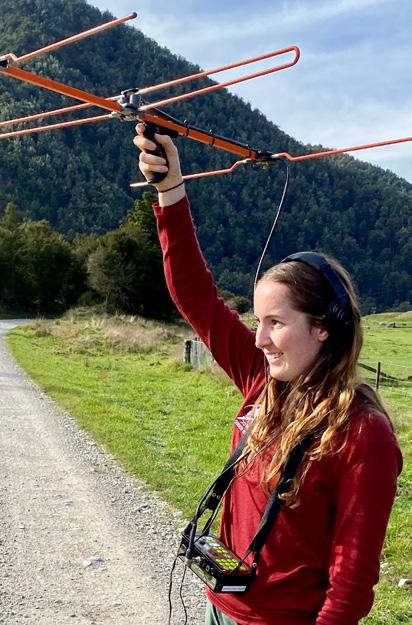
Jodanne will be undertaking work as part of her PhD to ascertain the best use of GPS technology for understanding kea movements.
“A preliminary study of kea (Nestor notabilis) habitat uses and diet in plantation forests of Nelson, New Zealand”, www.tandfonline.com/doi/full/10.1
080/03014223.2023.2251904

RESEARCH
35 Autumn 2024 |
Jodanne Aitken

CONSERVATION’S PLASTIC PROBLEM
We still use single-use plastics in predator-control operations throughout Aotearoa. What is the extent of the issue and how can we reduce microplastic waste? Katie Pitt
New Zealand has banned single-use items, such as plastic straws and cutlery, and taken more than two billion plastic bags out of circulation since 2021.
While the retail and hospitality sector have found ways to reduce their reliance on plastic, New Zealand’s conservation sector has
not seen such an emphasis on reducing plastic.
Why is single-use plastic still in the conservation toolbox? Chew cards, tracking tunnels, flagging tape, and wax tags are all plastic and all deployed into our most atrisk ecosystems.
This has the potential to significantly increase microplastic

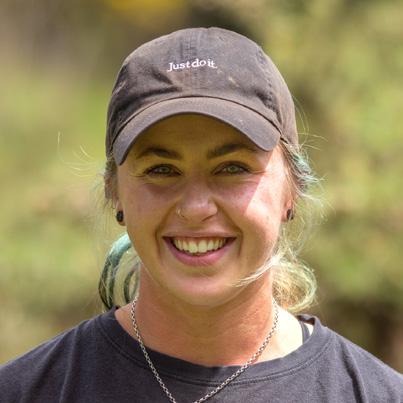
in landfills and the environment. The risk will increase as predator monitoring and control becomes more common.
I decided to study the issue during my Masters of Pest Management, and this progressed into a PhD. My initial research estimated how much microplastic waste is left in the environment after a typical plastic chew card monitoring operation and how much ends up in landfill.
Every year, more than 96,000 single-use plastic chew cards are purchased and used to monitor mammalian pest species by collecting tooth mark impressions.
At 5g each, 480kg of corflute plastic has been deployed into at-risk ecosystems to monitor pest species such as possums, rodents, and hedgehogs.
Approximately 15% of all plastic deployed into the environment will end up as microplastic waste. That’s 72kg left as waste and 408kg sent to landfill.
Microplastic comes from cards
CLIMATE
Kaitake Ranges, Egmont National Park. Callan Bird/Flickr
| Forest & Bird Te Reo o te Taiao 36
Rat on chewed corflute poster placed in the bush for a joint Colenso/Forest & Bird publicity campaign to show the impact of rats on native birdlife Colenso
being chewed and fragments being left on the ground (pictured), animals ingesting the plastic as they interact with the cards and then dispersing them via faeces, and cards being dislodged or lost due to adverse weather events.
In the Kaitake Ranges, for example, 1826 plastic chew cards were used during a two-week monitoring operation. This led to
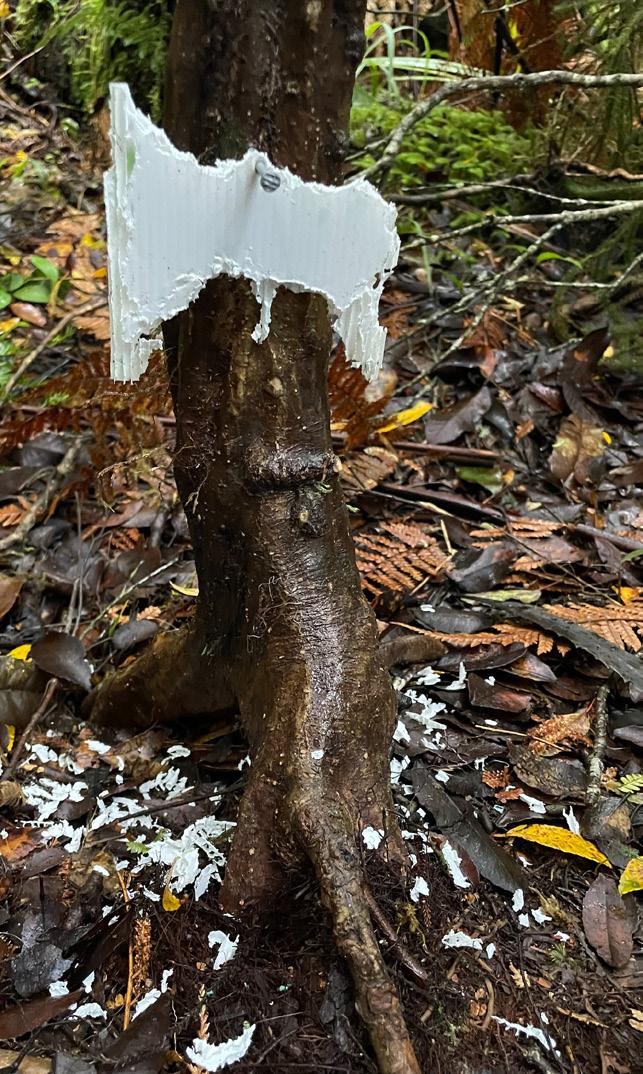
WHAT ARE THE ALTERNATIVES?
The next stage of my research seeks to provide alternative tools that allow plastic to be removed from our most vulnerable ecosystems.
To reduce the reliance on plastic chew cards, an alternative plasticfree version is being trialled. Made of recycled wood pulp, they take approximately a year to break down in a landfill.
As well as being sustainable and eco-friendly, plastic-free chew cards also have a range of benefits such as having similar interactions rates to plastic chew cards and being thicker, resulting in easier bite mark identifications.
Alongside this, plastic-free tracking tunnels and wax tags are also in the pipeline – further reducing our plastic reliance.
There has been an increase in environmentally friendly practices in many New Zealand conservation operations. Initiatives with shortterm negative impacts and longer-
term benefits have benefited from research that helps make them more sustainable.
For example, using helicopters, cutting tracks, and deploying various toxins all take a toll on the environment. However, the way they are carried out have changed over time to minimise environmental impact.
While the amount of plastic being left in the environment may seem small in the scheme of things, for a sector that aims to protect and improve our native biodiversity, single-use plastic doesn’t seem like the best option.
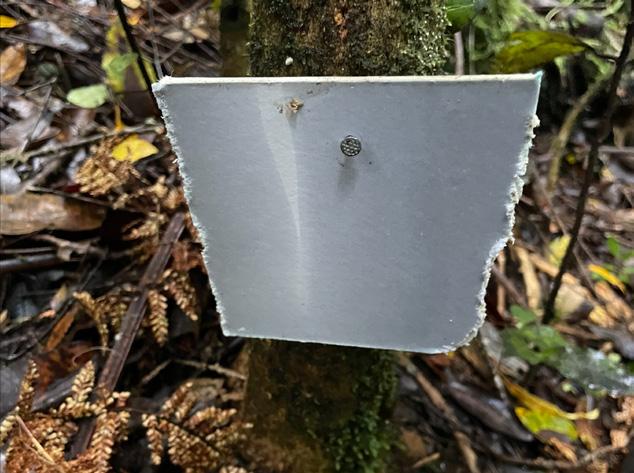
9kg of plastic being deployed in the environment, with approximately 1.3kg (assuming typical rates of wastage) of microplastic litter remaining at the project completion.
Often tracking tunnels or wax tags are used in conjunction with other monitoring equipment, increasing plastic usage.
Microplastic pollution is a growing global issue, and it’s time we invest more time into finding ways to do our part in reducing it, leading to longer-term benefits for both our native biodiversity and ecosystem health.







37 Autumn 2024 | 5 Star Reviews • 39 Years EcoTourism Expertise • Target Species Missions • Luxury Vehicles Private Cruises & Access • Fully Accredited & Licensed Operators Join Renowned Specialist Guide Luke Paterson & Team on Award-winning Birding & Photographic Experiences in Northern Australia, Sri Lanka & Borneo. **Spaces limited. Please book early & join EOI / wait lists. AUSTRALIA Northern Territory, Kimberley & BEYOND Darwin NT Bird Specialists Birding & Photographic Safaris tours@NTBirdSpecialists.com.au / 0421 651 122 Full Calendar & Tailored Itineraries at: www.NTBirdSpecialists com.au 2024 TOURS 2025 TOURS Sri Lankan Birding & Wildlife Tours 15 Days Top End Bird Photography Tour 8 Days Ultimate Top End Birding Adventure 10 Days Top End Finch Frenzy Ex. Darwin 7 Days Outback Birding Darwin to Mount Isa 9 Days MAR JUNE JULY AUG SEP Kimberley Birding Tour 12 Days Ultimate Top End Birding Adventure 10 Days Kakadu Birdwatching Tour 4 Days Top End Finch Frenzy Ex. Darwin 7 Days Kakadu Birdwatching Tour 4 Days Top End Bird & Wildlife Photo Tour 7 Days Kakadu Birdwatching Tour 4 Days Borneo Birding & Wildlife Tour 16 Days Top End Finch Frenzy Ex. Darwin 7 Days Private Tours (Australia & Sri Lanka & Borneo) MAY JULY JULY AUG AUG SEP SEP OCT NOV
Rats chewed this plastic chewcard leaving fragments on the ground that will gradually disperse as microplastic in the environment Katie Pitt
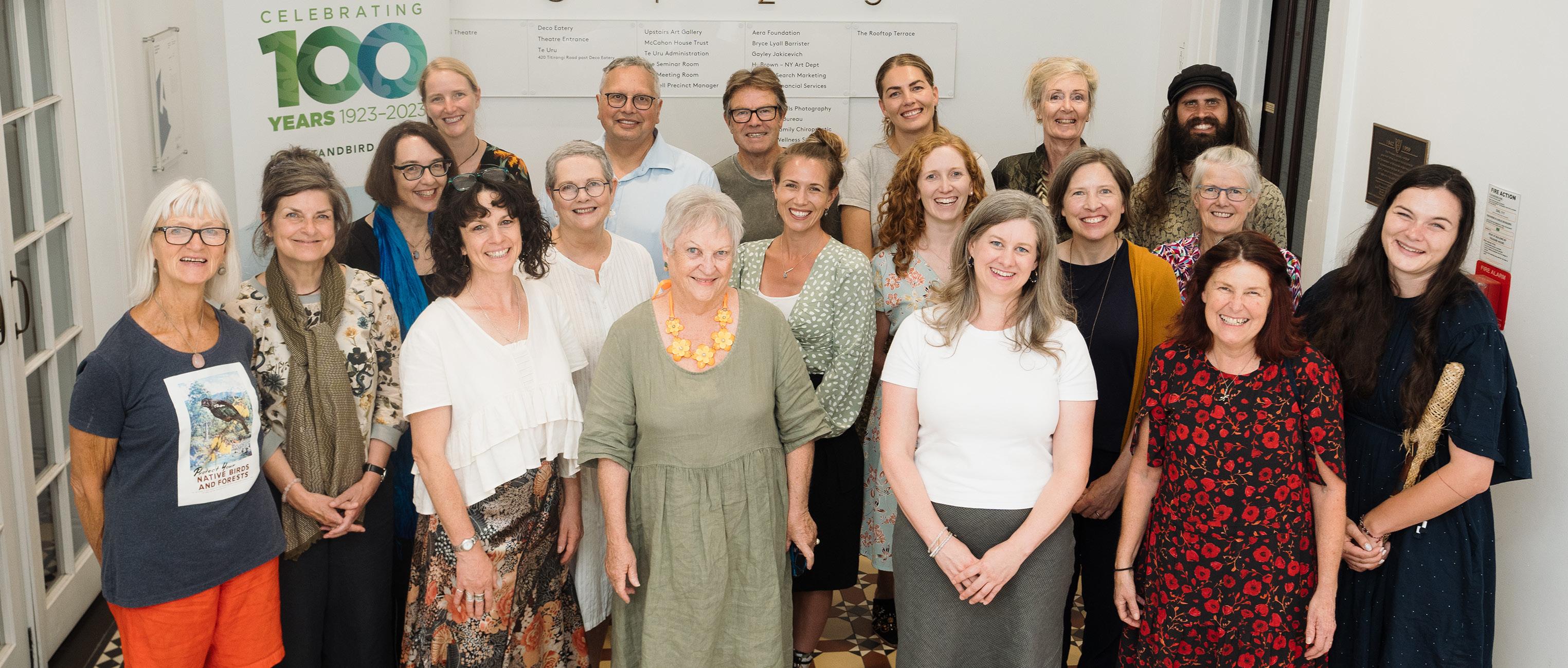
CELEBRATING 100 YEARS
Artists and writers came together for a day to highlight the huge contribution Forest & Bird’s volunteers have made to nature conservation.
Caroline Wood
There were hugs and tears at a live event marking the culmination of our year-long creative conservation project in collaboration with the not-for-profit writers’ group 26 NZ.
Artwork and poetry inspired by 13 Forest & Bird nature reserves were exhibited together for one day at the gallery at Lopdell House, Titirangi, Auckland, in February.
The 26 Forest & Bird Centennial project’s live event was attended by deputy president Kate Graeme,
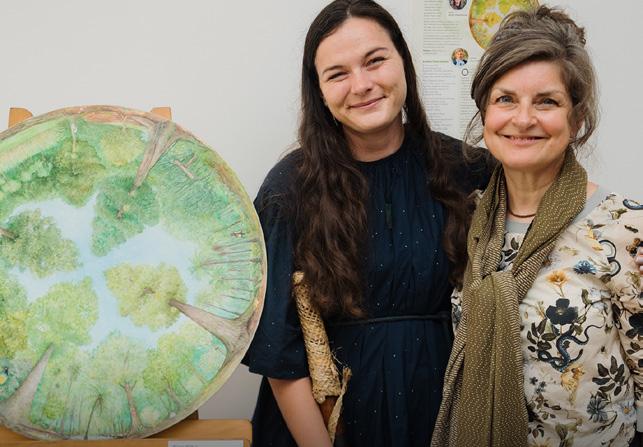

Thank you to all 13
acting chief executive Duncan Toogood, and most of the 26 writers and artists involved in the project.
The creatives shared their experiences of visiting Forest & Bird’s reserves, many gifted by members over the past 70 years. They included our largest, smallest, oldest, and most remote nature restoration projects.
Each artist-writer pair talked about how they responded to the landscape, wildlife, and volunteers they met during their visits before reading their exactly 100-word centena poems.
“Forest & Bird helps give nature a voice, and that’s exactly what these volunteer writers and artists have done during this wonderful and inspiring project,” said Kate Graeme.
Writer-editors Paul White, Janey Berney, and Jayne Workman led the creative side of the project.
“This was a once in a lifetime opportunity, and I’m delighted we could help celebrate your magnificent 100-year birthday,” said Paul.
“We’ve met wonderful people we would never have met and been to incredible places we might never
have otherwise found. We are very grateful to Forest & Bird for this opportunity.”
Many of the artists and writers, who had never met before, spoke about how much they enjoyed working with each other to create complementary work. It was a different creative experience for many of them.
“It was lovely to see the creative strands pulled together and the beautiful way our themes intertwined around the volunteer mahi,” said Jane Berney.
Thank you to all the Forest & Bird branch volunteers and project staff for hosting the creatives and supporting this project. The first nine projects were published last September and December. The final four projects are published here. You can watch the video of the presentations at www.youtube. com/@forestandbird/videos.
 creative pairs: Gabby Mckenzie and Sue Heggie, Simon Dowling and Paul White, Anya Greenwood and Jayne Workman, Dannika Tukua and Lindsey Dawson, Amelia Hadfield and Jane Berney, Lynette Hartley and Richard Pamatatau, Sophia Nouchi and Leah Royden, Lee Byford Danes and Catherine Macdonald, Amy Parlane and Chris Bowring, Cathy Hansby and Lee Ryan, Sophie Lankovsky and Scott Moyes, Georgette Thompson and Gail Ingram, and Sam Hughes and Hayden Maskell.
Writer Paul White with his artist Simon Dowling
creative pairs: Gabby Mckenzie and Sue Heggie, Simon Dowling and Paul White, Anya Greenwood and Jayne Workman, Dannika Tukua and Lindsey Dawson, Amelia Hadfield and Jane Berney, Lynette Hartley and Richard Pamatatau, Sophia Nouchi and Leah Royden, Lee Byford Danes and Catherine Macdonald, Amy Parlane and Chris Bowring, Cathy Hansby and Lee Ryan, Sophie Lankovsky and Scott Moyes, Georgette Thompson and Gail Ingram, and Sam Hughes and Hayden Maskell.
Writer Paul White with his artist Simon Dowling
| Forest & Bird Te Reo o te Taiao 38
Artist Anya Greenwood with her writer Jayne Workman
ARK IN THE PARK WAITĀKERE RANGES
Ark in the Park is a landscape-scale restoration project managed in partnership by Forest & Bird and Auckland Council, supported by local mana whenua Te Kawerau ā Maki.
THRIVING IN THE ARK
My artwork shows the Ark from the highest point, Pukematekeo, looking out to the west coast and Te Henga Bethells Beach. With tūī and kererū flying overhead, the returned kōkako and native wildlife emerge from the forest, resting on the bare branches of the ancient kauri tree, Agatha, who has succumbed to kauri dieback disease. Below, the regenerating forest comes alive amongst the lush leaves of the undergrowth. The incredible army of volunteers regularly trap or bait every 50m of this vast 2200ha reserve, allowing native wildlife to recover and thrive.
Medium: Digital freehand drawing ARTIST
Cathy Hansby
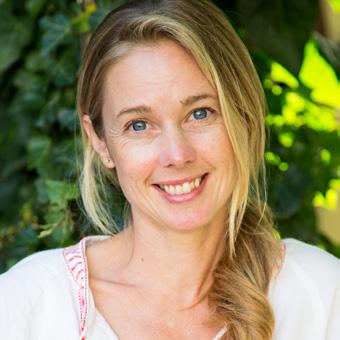
 WRITER
Lee Ryan
WRITER
Lee Ryan
A LIVING ARK
Forging a sanctuary with their long limbs the molten veins of tōtara and kauri draw in nature’s fire from earth to sky, catching light and water for a gasping city. Their leaves flicker green.
Yet this forest of Tiriwa endures a human strain. Our kauri queen, witness to forty generations now skeletal, ash-white, still. While in the darkness, ravenous stoats and rats devour fledgling heartbeats.
See now volunteers who hike with bait. A steady glow, meeting ancestors in trunk and leaf. Smell wet ferns, moss, fresh earth. Listen — tūī, kererū, kōkako — Like their forest kin, they are forging a sanctuary.

My journey tracks the ridge line from Hillsborough to Titirangi on my way to Ark in the Park in the Waitākere Ranges. Two decades ago, a Forest & Bird branch envisioned, persuaded, sourced funds, and established a sanctuary. It is now 2200ha. It has no fences. Volunteers maintain an active shield against introduced stoats, weasels, rats, and possums through a grid of bait lines and traps.
I turn left into Falls Road. The scars drawn by the cyclone and the storms are visible on the landscape – slips, landslides, fallen trees. The rāhui remains. Aunt Agatha, an ancient kauri and tūpuna of Te Kawerau ā Maki, has succumbed to kauri dieback disease. Her ash-white limbs linger, stark against the dark green bush, marking her demise after centuries of standing watch.
On this Saturday morning, a steady stream of people arrive. They have a quiet intensity. They prepare by carefully packing bait, a hammer, a saw, a small backpack, and the focus they need for tackling the ever-changing, potentially wet and slippery terrain of their bait line.
On the trip home, I think about how this group of people is a model for what we need in our future. It’s the small and ongoing acts of restoration. What we can each bring to the forest and what we can achieve by working together. We are all rewarded by the sounds of toutouwai and kōkako.
Tiakina te wao nui a Tiriwa hei oranga mōu – treasure the vast domain of Tiriwa and, in turn, you shall benefit.
39 Autumn 2024 |
BLOWHARD BUSH RESERVE HAWKE’S BAY
JOIN THE FLOCK
We, the birds above, all live at Blowhard Bush: Titipounamu rifleman, toutouwai North Island robin, mirimiro tomtit, pokokatea whitehead, pīpīwharauroa shining cuckoo, green gecko. My artwork shows how precious these endangered species are and how the native tree is crucial in their survival. Now it is down to us to ensure they will survive into the future. Spending time in Blowhard Bush with Scott and our Forest & Bird guides was a wonderfully inspiring and healing experience. One feels that there is hope for nature and its ability to nurture us as humans.

Medium: Ceramic sculpture of mataī tree with lifesize native birds, hand-formed in clay, glazed, and fired in an electric kiln.
WRITER Scott Moyes
IN ROBIN’S HOOD

In robin’s hood, we do not take though riches do surround us. Instead, we steal a moment with the treasures that have found us.
We bow our humble heads to the Mataī on the throne.
The 800-year dynasty.
The kingdom that they’ve grown.
The limestone is the wordsmith.
The history engraver.
The mushrooms - the artist. The colour that we savour.
Yes, there are the scoundrels.
The clever midnight thieves. We also have our servants soaring high amongst the trees.
Our kererū. Our tūī.
The bellbirds of the wood.
And those who perch beside us insisting, we’re in robin’s hood.
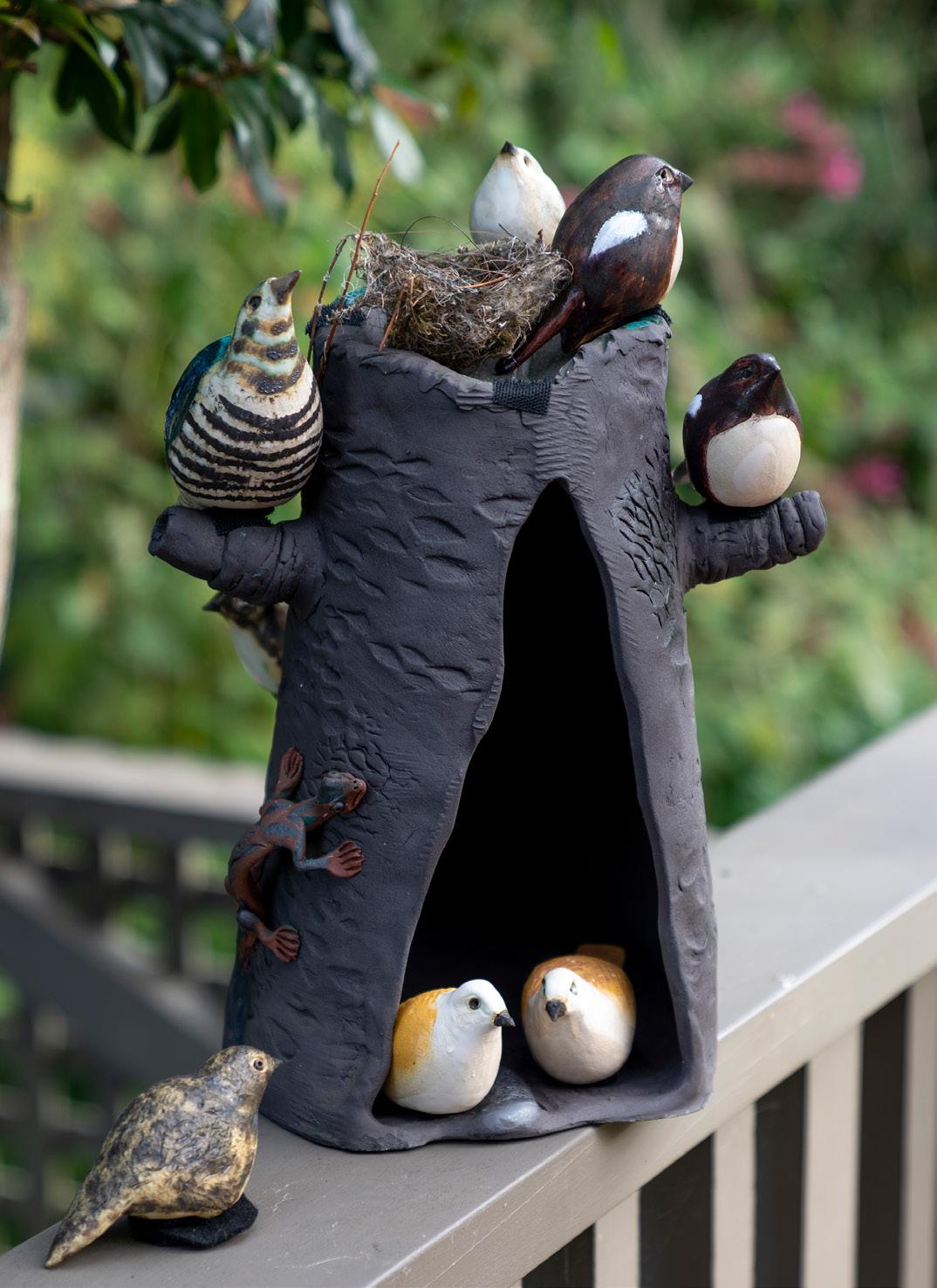
Sophie and I had the privilege of being guided through Blowhard Bush, about 50km northwest of Hastings. We were generously looked after by Christine Lawrence and Erin Pointon, who shared their immense knowledge of the reserve (and filled our bellies with banana muffins!).
As someone who lives out of town, my expectations were measured. This region had felt the full force of Cyclone Gabrielle just weeks earlier. I was prepared to be a humble observer. What I saw was a community rebuilding with unwavering spirit, and that shone through with our visit to Blowhard Bush.
The reserve has four walking routes – the Tūī Track, the Troglodyte Track, the Rewi Track, and the Rakanui Track. Each will take you on a journey of discovery. Through limestone caves with peculiar windows to peep through. Past tiny mushroom villages that illuminate the trail. And, at the heart of it all, a guard of mataī trees, thought to be over 800 years old.
However, the true character of the reserve lies in its habitants. Many feathered friends harmoniously announce their presence. Korimako bellbird, pīwakawaka New Zealand fantail, kererū, riroriro grey warbler, to name but a few. At one stage, we even thought we had stumbled upon precious moa bones.
But the most daring of them all was the toutouwai – our North Island robin. They were a constant presence on our adventure, perching just out of reach, eager to accompany us. When the robin is thriving, it’s a sure sign that the other creatures of the forest are too. And for that reason, I walk away feeling this is robin’s hood.
ARTIST
| Forest & Bird Te Reo o te Taiao 40
Sophie Lankovsky
CALDER GREEN RESERVE CHRISTCHURCH
ONLY FOOTPRINTS
It astonished me that commercial waste had flowed directly into the Ōpāwaho Heathcote River until the early 1970s. No wonder there was a loss of wildlife diversity here in this rare urban saltmash wetland. This haunted me and an image started to form. I scribbled it down so I could show my writing partner Gail the following day. Hearing of the conservation work at the reserve, including efforts to restore the Canterbury grass skink, I was filled with hope for the future. Yes, humankind had a devastating impact here, but now conservation volunteers are making a positive difference.
Medium: Oil on canvas
WRITER Gail Ingram
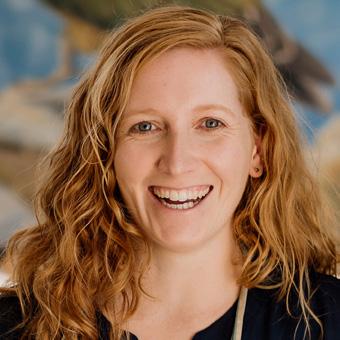

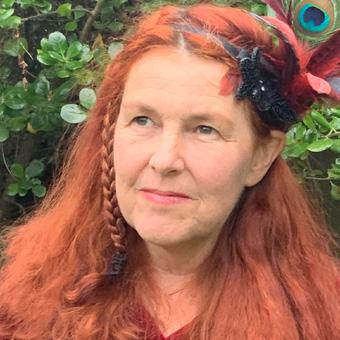
FOOTPRINTS IN CARBON
Ihutai, the prow of the tide where sea noses river where tuna met flounder met kōtuku alit totara where Kāi Tahu mingled at the outpost they called Ōpāwaho
where the river bends and the oioi grew where sails flapped around a devilish elbow where bullocks strained and councillors drained where rubbish was dumped and the bittern fled from the final corner of saltmarsh on the river before foresight prevailed and they called it Calder Green
where we’ll meet again, plant mākaka for protection, tussock for the skink, where we must stand and staunch the tide as kaitiaki – Ihutai, the prow.
Calder Green Reserve, a tiny urban saltmarsh reserve, 1.6ha in size, on a crooked bend of the lower Ōpāwaho River, in Christchurch, serves a big purpose. It was named after Mr DF Green who gifted the land to the Society in 1980 and Bernie Calder, the Forest & Bird North Canterbury Branch chair at the time, who worked hard to preserve the Heathcote-Avon wetlands from development.
It is a striking place. The estuary light brings both serenity and wilderness to the heart of Aotearoa New Zealand’s second biggest city. Yet our human footprint is never more obvious. Once a gathering place and food source for Kāi Tahu, it was modified by Pākehā settlers. The Avoca Stream was redirected to create waterways for stock, and the creaking pines and gums that line the river were planted.
The eastern entrance to the walking track shares a boundary with an old city council rubbish dump, covered now by the Ferrymead golf course. At the other entrance where the Lyttelton motorway roars, a developer has set up a container park. Where once we enjoyed the green vista towards the city centre, we now find it marred by towers of corporate-branded containers.
Threatened at every quarter, this place of kōtare kingfishers, kōtuku ngutupapa royal spoonbill, and, more recently, a community-created lizard sanctuary is precious. We have always come here – for gathering, for solace, during lockdown, in weekends, after work – families, dog-walkers, bikers, nature-lovers, city-dwellers all. We come to spend time together, replenish, and simply breathe in the beauty of the river, the endangered saltmarsh, and all the life it provides. From now, let us leave only footprints.
ARTIST
41 Autumn 2024 |
Georgette Thompson
FENSHAM RESERVE WAIRARAPA

KAITIAKITANGA
I wanted to capture and celebrate the impact of conservation volunteers caring for the remnant swamp forest at Fensham Reserve. The hardworking hands, nurturing and protecting the seedling, represent the great work volunteers have done here helping massive mataī and other flora flourish. In the circle of life, all living things are interconnected. One small act of kindness can help a tree to grow. It then provides shelter and sustenance to local birds, lizards, and insects, and joy to human visitors. Thank you to the Forest & Bird volunteers for conserving this forest for us and generations yet to come.
Medium: Watercolour, pencil, and ink

WATCH YOUR STEP
Watch your step through the mud, tangled vines, squelching sodden swampy earth, past the hammered trunks of mataī, over crusty bracken and wounded roots, their fibrous nerves exposed – the pain! –to the air, scraped raw by Vibram tread and the heavy gait of loping runners. Safer, I think, to wander along the slowly snaking Fensham boardwalk, winding through kahikatea copses. Safer to walk along heavy planks, so expertly sawn around saplings that poke one finger toward the dark and dappling canopy a reminder to be quiet, a hush from leaves and soft stems reminding us: watch your step.

From the outside, Fensham Reserve is a humble place. Follow the old yellow road signs out of Carterton, park on the roadside opposite the entry, dash across the tarmac, and you’ll find steep steps and a stack of gravel-filled Resene buckets. It’s no grand national park, no tourist hotspot, and unlikely to feature on a glossy Tourism New Zealand ad.
These are probably good things. There’s something about Fensham’s unassuming exterior that speaks of the quiet determination to preserve the life inside it. And, boy, is there life. Fensham is both steep and soggy. There’s a lot of mud and almost as much moss. It’s home to mudfish and kahikatea swamps, kānuka, mataī, tītoki and kōwhai, cutty grass, and more than 50 types of fern. Native birdlife thrums, pests are on the way out, and long-tailed bats have been found high in the trees. The whole place breathes.
John Fensham purchased this block of land in 1883 with the clear intention of preserving the bush – an extraordinary act for its time. Cementing his legacy, Fensham’s estate donated the land in trust to Forest & Bird in 1957, with the Society taking possession in 1978. Neighbours donated more in 2013. Forest & Bird’s Wairarapa Branch members care for the 48ha reserve, planting, eradicating pests, carting buckets of gravel up the hills, and building extensive boardwalks by hand.
Hands stood out to both Sam and me. The hands of our guide Pat McLean, gesturing in stately swoops over every tree and shrub. Hands plucking pest plants from the swamp. Hands cupping coffee mugs and digging with donated shovels. Hands guiding nature back to its rightful place.
ARTIST Sam Hughes
WRITER
| Forest & Bird Te Reo o te Taiao 42
Hayden Maskell
MARINE SCHOLARSHIPS
Eastern Bay of Plenty Branch has awarded scholarships to two young marine conservationists Aria Gibson and Te Waikamihi Lambert.
The scholarships, each valued at $2000, are intended to encourage the study of ocean ecosystems and foster greater awareness, knowledge and appreciation of the values of the marine environment, particularly in the Eastern Bay of Plenty. They have been funded from donations and sales from the branch’s local native plant nursery.
Te Waikamihi Lambert is studying marine biology and mātauranga Māori for a Bachelor of Science at Victoria University of Wellington. Science was her favourite subject at school and a free diving course confirmed her passion for the ocean that could be pursued along with mātauranga Māori. She grew up with traditional cultural practices and wants coastal kai to be available to her whānau and iwi into the future.
Te Waikamihi has worked as an intern at Bay of Plenty Regional Council and with Dr Kura Paul-Burke on research in Ōhiwa Harbour.

“I want to bridge the gap between western science and indigenous science and show people how traditional mātauranga Māori can be quantified and truly enhance environmental management,” she said. Dr Kura Paul-Burke described her as one of “the next generation of Ngāti Awa marine scientists”.
Aria Gibson is enrolling in the Bachelor of Science at University of Waikato Tauranga, majoring in aquaculture and minoring in marine studies. Aria won a local Forest & Bird Youth Award in 2019 and has been an active volunteer with HALO Whakatane since high school.
Having active conservationists for grandparents, it’s not surprising she is seeking solutions to man-made problems. She wants to see protection of marine ecosystems and sustainable fishing and aquaculture, including how industries impact on birdlife.

Close your eyes and imagine New Zealand’s natural world as you want to see it
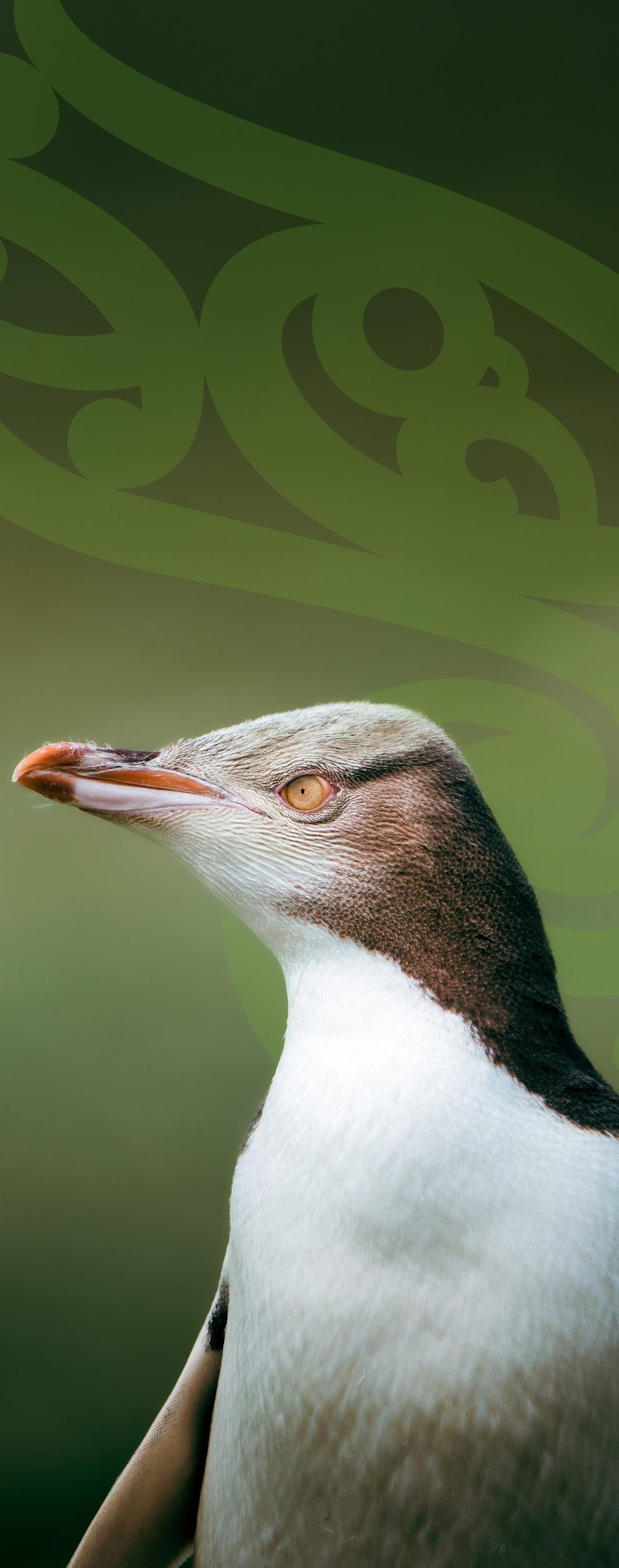
A gift to Forest &
Branch Chair Linda Conning said: “Both recipients are inspiring in their passion and energy for the natural world, and we are delighted to support their marine studies. The Eastern Bay of Plenty Branch is committed to supporting young people in conservation, including in the ocean environment.”
can make your wishes come true.
If you’d like to talk in confidence about investing in nature in your lifetime or including a gift in your will, please reach out to our friendly team at legacy@forestandbird.org.nz
www.forestandbird.org.nz/supportus/leave-gift-your-will.
Bird
BRANCH
Aria Gibson
43 Autumn 2024 |
Te Waikamihi Lambert with Linda Conning.
Ko Mauao to maunga | Mauao is my mountain.
MAUNGA RECLOAKING THE
Mauao is a historic reserve owned by iwi and managed by Tauranga City Council. It is also home to petrels, penguins, and regenerating forest. Ann Graeme
For more than two million years, Mauao has guarded Tauranga Harbour and anchored the spit of golden sand that is the Mount Maunganui beach. This dormant volcano was never explosive but rather an upwelling of sticky molten rhyolite, piling higher and higher to create a dome.
As the centuries passed, the rhyolite eroded, and blankets of ash accumulated from explosive volcanoes nearby. Forest grew on the newly created soil, and in time it was fertilised by the guano of seabirds such as ōi, the grey-faced petrels, which nested in burrows among the tree roots.

Tuatara were there too, eating the flies attracted by the excrement (and perhaps the chicks as well). Kororā little blue penguins came ashore to breed, and kekeno fur seals lolled on the rocky shore.
Then, some 700 years ago, a fleet of great waka set sail from Polynesia carrying settlers seeking new lands. After a journey of thousands of kilometres, first one and later two more canoes rounded the ramparts of Mauao and slipped into the harbour. The place where they made landfall they called “Tauranga”, which means “anchorage” or “safe resting place”.
Mauao was a very desirable place to live. It had access to freshwater from springs, it had food from
IN THE FIELD
Rob Suisted | Forest & Bird Te Reo o te Taiao 44
both the harbour and the open ocean, and it could be defended. Māori lived on Mauao for centuries. The forest was cleared for fortified pā sites, terraces were created for gardens, storage pits were dug, and the vast middens testify to the enormous quantities of pipi and tuatua that were collected and eaten.
But soon after the turn of the nineteenth century, inter-tribal conflict led to a massacre on Mauao. The great pā was destroyed, and the mountain was deserted. In 1865, following the battles of Pukehinahina and Te Ranga, Mauao was included in the lands confiscated by the Crown.
Fifty years later, stripped of the people and the forest, photographs show it as gaunt and bare. In 1971, it became a historic reserve, but it was a reserve in name only, protected but neglected.
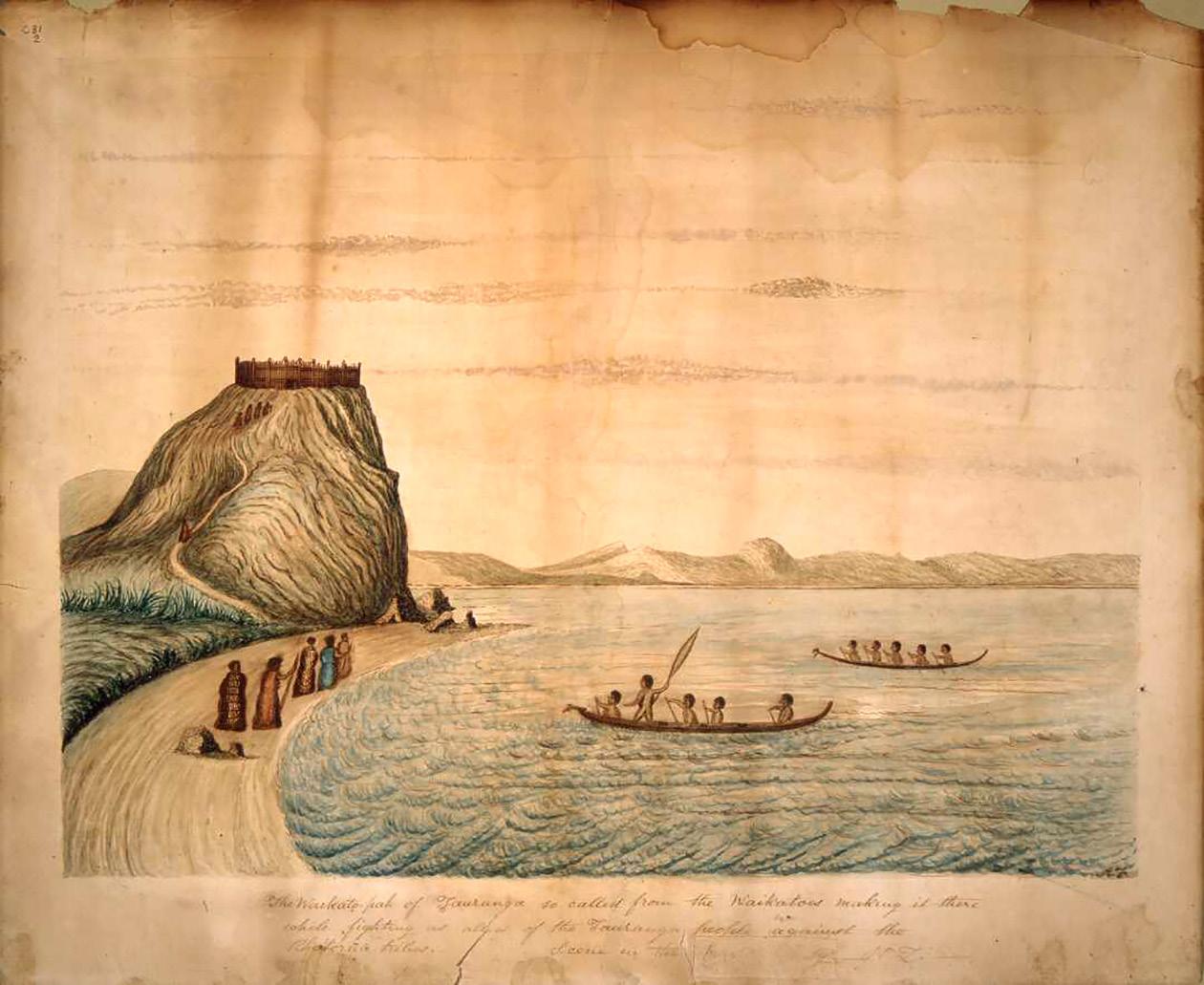
Decades passed, and the local community grew and so did interest in the maunga. Scattered pine trees were felled, fences allowed some native vegetation to regenerate, and planting began, despite fires hindering progress.
Then, in 2008, a Bill was passed through Parliament returning ownership to a trust representing the three iwi of Tauranga moana: Ngāti Ranginui, Ngāti Pūkenga, and Ngaiterangi. It was a momentous occasion.
Today, while the trustees guide the future of Mauao and generously provide public access, its historic status remains and the Tauranga City Council administers its maintenance and restoration in accordance with the trustees’ intentions. This is an example of co-governance.
With the aspiration and vision of iwi to “re-cloak the maunga”, restoration has accelerated with more native plantings, improved tracks, new interpretation signs, and sculptures to tell the stories of the past. Tourists and locals alike are walking the base track and climbing to the summit – more than a million visits last year.

But what has happened to the wildlife?
With the greening of Mauao came the return of the forest birds. Among the great pōhutukawa trees that fringe the coastal track and in the growing forest that shades the steep and sweaty track to the summit, tūī swoop, pīwakawaka fantails chatter, and riroriro grey warblers sing.
While the great flocks of seabirds that used to nest on mainland Aotearoa have never returned, a colony of grey-faced petrels still survives among the roots of the pōhutukawa on the rugged ramparts. Kekeno seals again loll on the northern rocks, and kororā little blue penguins come ashore to nest. Sometimes kera wēra orca and pods of aihe dolphins are spotted swimming into the harbour.
This is a story of the change, both of our relationship
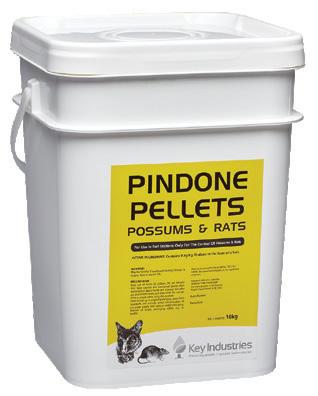
KILLS FOES NOT FRIENDS
PINDONE PELLETS are a cost-effective way to control possums and rats, approved for use in sensitive environments. Very low risk of primary or secondary poisoning to domestic pets and native wildlife. For more information, go to keyindustries.co.nz
Mauao circa 1860 with pā on top. Watercolour, pen and ink Dr Augustus Florance, 1960. Alexander Turnbull Library
→
Pōhutukawa, Te Ara Tutanga base track. Caroline Wood
45 Autumn 2024 |
with each other and with nature, and a change in our society and in our communities. From the heights of Mauao, we delight to see orca and seals, no longer to be persecuted and slaughtered.
When the kōwhai and karo are flowering, we come to see the flocks of squabbling tūī and sometimes a visiting kererū or kākā. We marvel at the vast middens of pipi and tuatua, and interpretative signs tell the stories of those first Māori settlers.
We are among the volunteers on Mauao. Midway, we pause on our rat bait line to sit with our picnic morning tea (a proper Forest & Bird tradition) in a secluded place, overlooking the golden sands, the ocean studded with ships, and everywhere we see the people, enjoying the taonga that is Mauao.

For decades, dogs have been banned from Mauao, primarily to protect the resident sheep that graze the rough pasture to reduce the risk of fire.
This will have benefited the penguins and the greyfaced petrels that come ashore to nest. Dogs are still banned from Mauao, and now the rats, feral cats, and stoats are controlled by volunteers and council.
But protection from dogs and pests is only holding the line, warns leading ornithologist and volunteer Paul Cuming. Monitoring shows that the petrel colony of about 450 is just maintaining itself and the penguin population of about 400 is declining.

Since the birds can nest in reasonable safety, it seems likely that the problem lies out at sea. Overfishing and climate change, with the warmer seas it brings, are making it hard for many sea birds to feed themselves, let alone their chicks. Starvation is decimating some sea bird populations that depend on the ocean for their food.
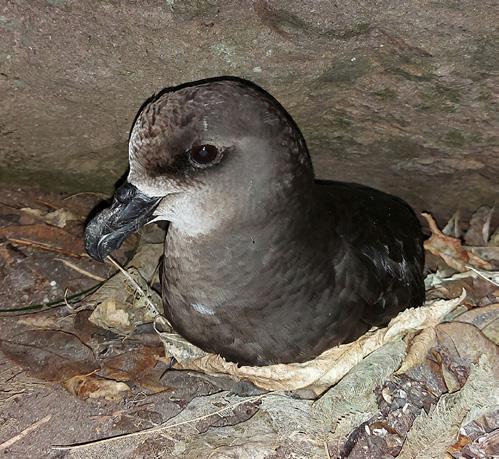
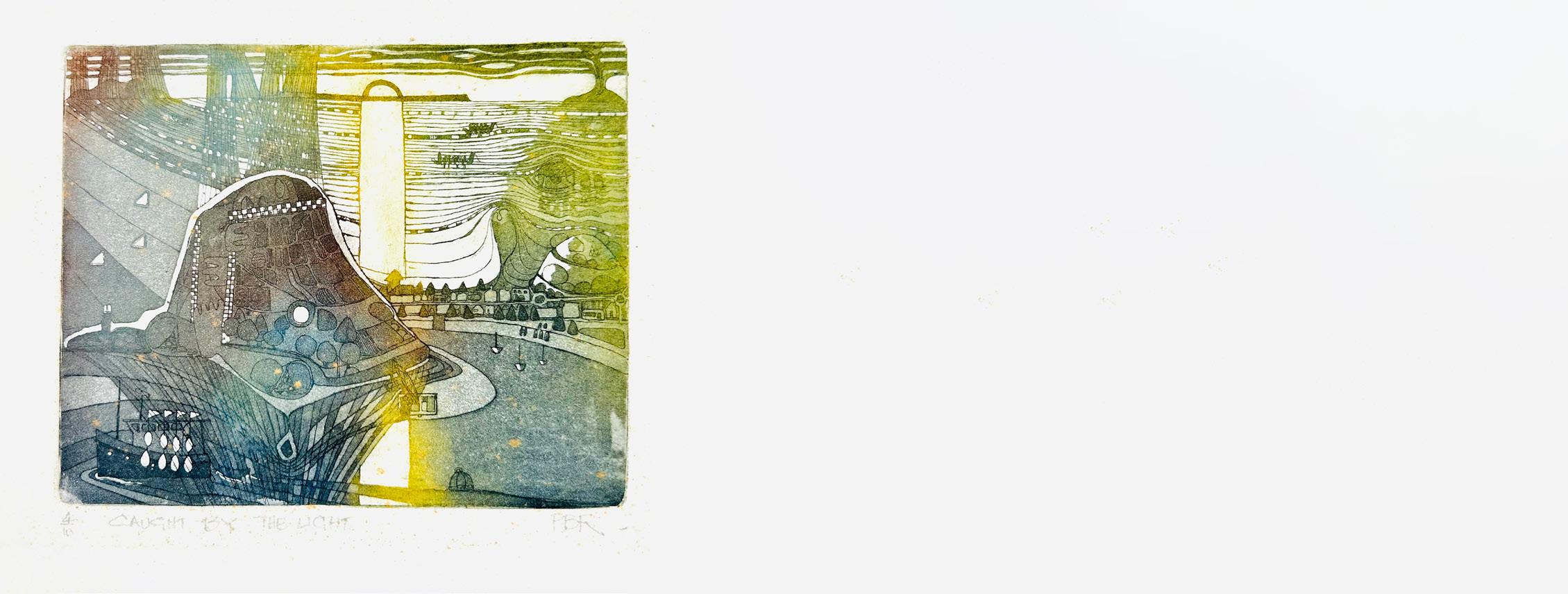
HOW MAUAO GOT ITS NAME
Among the maunga behind Tauranga Moana there used to be one with no name. He sat alone, a slave to the mighty Otānewainuku. The nameless one loved the beautiful Pūwhenua, but her heart belonged to Otānewainuku.
Seeing his love was hopeless, the nameless one asked patupairehe, the fairy people of the forest, to help him to the ocean so he might drown. That night the patupairehe draped him in a cobweb of ropes and started dragging him, gouging out the valley of the Waimapu river as he went, through the harbour, past the headlands of Matapihi and Hairini, and out to the harbour entrance.
But the fairy folk are creatures of the night and when the first rays of the sun lit the summit of the nameless one, they fled to the darkness of the forest. They left him stranded at the edge of the ocean. They called him Mauao, which means “caught by the dawn”.
→
Caught by the light woodcut. Pamela Robinson
Saved by the sheep. Paul Cuming with ōi
|
& Bird Te Reo o te Taiao 46
Climbing Mauao using steps reputedly built by soldiers during New Zealand land wars of the 19th Century. Ann Graeme
Forest
IS YOUR KIWISAVER HURTING THE CLIMATE?
Companies can be environmental wreckers or climate champions.
Here is how to figure out which future your KiwiSaver fund is invested in.
Olive Coulson
Navigating the ins and outs of saving for retirement often involves thinking about returns, fees, and risks, but there’s another critical dimension: the impact your money has on the world.
Your KiwiSaver fund is invested mainly in the shares of public companies. These companies can have very different impacts on the health of our climate.

Mindful Money has been looking at how KiwiSaver fund managers have been investing our money. Our analysis shows there is a whopping $7.9 billion of funds invested in issues the public want to avoid. This amounts to 7.75% of total KiwiSaver funds (see graphic above).
Kiwis have been clear in annual surveys they do not want to invest in companies that cause harm to the climate, to the environment, to animals, and to society.
Yet many funds continue to invest in those companies of concern, including supporting companies that are adding harmful emissions into the atmosphere through extracting fossil fuels.
In September 2023, nearly $3.3 billion of our
KiwiSaver funds were invested in the fossil fuel sector. While some companies are genuine about their transition plans towards renewable energy, most KiwiSaver investment goes into businesses that are investing in more oil and gas production.
By pulling investments away from the worst climate wreckers, we can prioritise our planet’s health and shield our finances from the inevitable decline in fossil fuel energy. Data shows, over the past decade, investors in fossil fuels have had far lower returns than the market average over the same period.
How do you know if your KiwiSaver is having a positive or negative environmental impact? You can join thousands of other New Zealanders who have checked their KiwiSaver funds and swapped to a new fund that fits their values.
We have created an Ethical Fund Finder tool that can help you find the funds that are climate friendly. It’s free, it’s user-friendly, and all you need is your KiwiSaver fund’s name. Go to www.mindfulmoney.nz/ KiwiSaver/checker.
Switching to a climate-friendly KiwiSaver fund or other investment fund is straightforward and typically takes less than 15 minutes.
Your KiwiSaver fund is more than a retirement nest egg. It’s an instrument of change, capable of influencing our collective tomorrow.
CARBON FOOTPRINTS

When most people consider their carbon footprint, they think about electricity use, car travel, or the food they eat. But few people think about the climate footprint of their financial investments. The results may surprise you. How you invest is one of the largest elements in your carbon footprint. An average KiwiSaver fund invested in global shares supports companies that emit around 2.3 tonnes of CO2 equivalent. Try adding this figure and see its impact on your overall carbon footprint.
Olive Coulson is Marketing Manager at Mindful Money. This small New Zealand charity is making a big difference by making it easier for Kiwis to invest their money ethically.
MINDFUL MONEY
47 Autumn 2024 |

FINDING THE WORLD’S OLDEST FLAX SNAIL FOSSILS
Snails may not have the reputation of dinosaurs, but geologists knew there was something special about the fossils recently unearthed in Auckland.
Ursula Cochran
Discovered in a sandy layer buried deep beneath Tāmaki Makaurau Auckland, the fossil shells are tall dusty-white spirals about 7cm high. Their rounded whorls are scratched and pitted, signs that they’ve endured some history. But, to the average eye, it’s hard to see their significance. It turns out they are the oldest flax snail shells in the world, and it is a marvel they were found at all.
Their discovery began in an unlikely place: a construction site next to the Māngere Wastewater Treatment Plant. Here a tunnel-boring machine called Hiwa-i-te-rangi is excavating a tunnel almost 15km long and 4.5m wide under Auckland.
Part of Watercare’s Central Interceptor project, the tunnel will significantly reduce wet-weather overflows in central Auckland waterways. But before the tunnel boring could begin, a giant concrete shaft needed to be excavated to 40m underground.
Geologists knew from earlier boreholes that there was an interesting shell bed 35m below Māngere. Sure enough, after metres of excavation and with the shaft nearly complete, beautifully preserved fossil shells were unearthed.
Watercare could see that this was a rare opportunity to study otherwise inaccessible fossils. They contacted mana whenua and local specialists to see whether there was scientific interest – and there was.
Dr Bruce Hayward, of Geomarine Research, was particularly interested because he’d been working on outcrops of similar-aged sediment in which all the shells had dissolved away. He knew the discovery of such pristine fossils was significant.
Before long, New Zealand’s largest wastewater project was facilitating fossil hunting. A gigantic heap of sediment was stockpiled in a paddock in Māngere for more than a year so that fossils could be inspected more easily.

Watercare ran staff socials at the heap – gettogethers and BBQs – where staff, family, contractors, hapū members, students, and amateurs could dig for fossils at leisure.
There was much excitement over what was being found at these social digs, and collaboration ensued. Bruce was often heard to say, “That should go to the museum!” So Tāmaki Paenga Hira Auckland
BIODIVERSITY
Hiwa-i-te-Rangi tunnel boring machine. Watercare
| Forest & Bird Te Reo o te Taiao 48
Bruce Hayward
War Memorial Museum partnered with Watercare to document and archive many of the important specimens for educational use.
Tens of thousands of fossils were discovered in the heap. Most of them comprised a diverse range of temperate and subtropical seashells from an ancient shallow seafloor. There were also whale bones and, much to the delight of Shayne Cunis, Watercare’s project boss, a few sharks’ teeth.
But, of all these fossils, the ones that caught Bruce’s eye right from the start were not from the sea but from the land.
A single intact land snail shell was found by Stefano Vittor, of Ghella Abergeldie Joint Venture, in October 2020 – and another in December by Julianne McCoun, an Auckland University geology student.
Over several months, graduate students Nathan Collins and Thomas Stolberger sorted meticulously through the sediment pile and only found another nine intact land snail shells.
Bruce knew immediately they’d found flax snails –and likely the oldest ever found.
He teamed up with independent researcher Fred
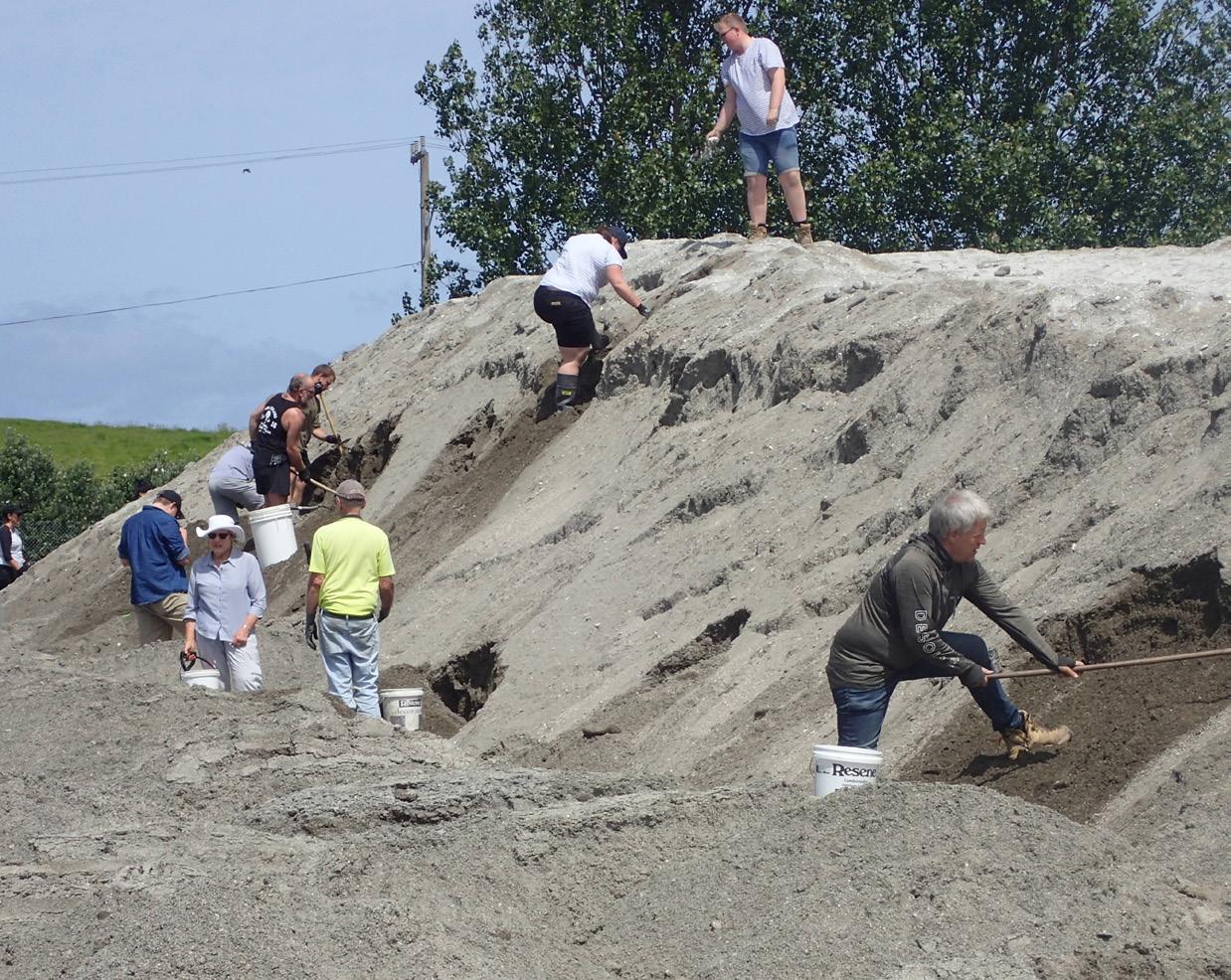
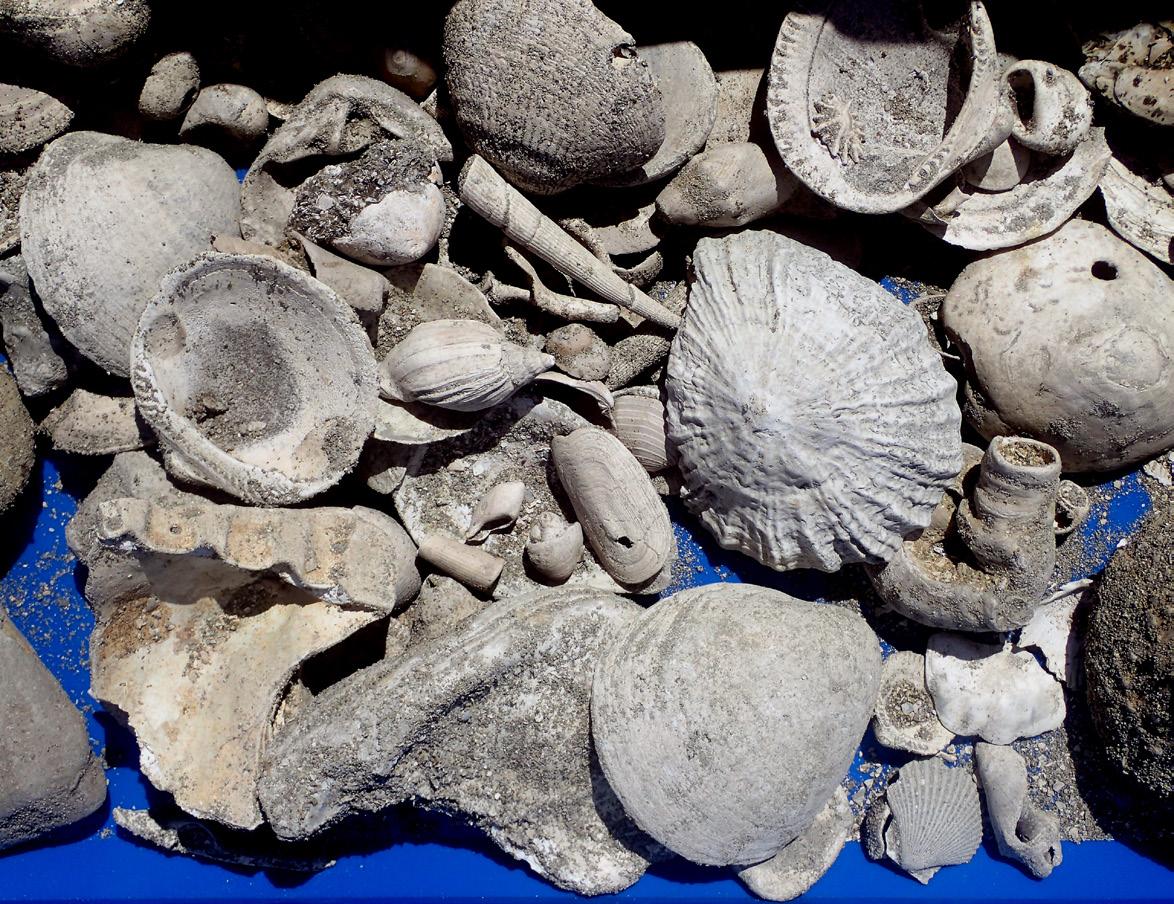
of these but interestingly seems more closely related to one of the Lord Howe Island species than the New Zealand species.
Archaeostylus manukauensis is very different from all other flax snails and appears to be an endemic New Zealand lineage that has no living representatives.
The significance of discovering new species of flax snail is hard to estimate, especially ones that are now extinct. They wouldn’t have changed life on Earth dramatically, but they no doubt played a role.
Take pūpū harakeke, one of the flax snail species that is alive today. It is considered a kaitiaki by mana whenua of the Far North because it was said to warn locals of war parties by making a noise.
It is now understood that when frightened – for example, by approaching footsteps – the snails retreat into their shells en masse and the air escaping quickly from their shell chambers can make a flute-like whistling noise.
Brook to identify the fossils. As described in their paper, they identified two new species of flax snail, including a completely new genus.
Welcome Maoristylus pliocenicus and Archaeostylus manukauensis – we never knew you existed and now we do.
There are only four living species of Maoristylus remaining – two in northern New Zealand and two on Lord Howe Island, Australia. The newly discovered fossil species Maoristylus pliocenicus differs from all
Hence their other name – pūpū whakarongotaua – the snail that listens for the war party. Is it not reasonable, then, to infer that land snails have saved human lives?
The Māngere land snail fossils are not only new species, but they are by far the

New Zealand’s new species of flax snail. A: Maoristylus pliocenicus and B: Archaeostylus manukauensis. The scale bar is one centimetre.
Reproduced from Brook and Hayward, 2022, with the permission of the Royal Society of New Zealand.
The stockpile of fossil-rich sediment from the shaft of Watercare’s Central Interceptor Project Bruce Hayward
Most of the fossils were ancient seashells. Bruce Hayward
→ 49 Autumn 2024 |
oldest flax snails in the world. Their record of life has been extended dramatically by these finds.
Previously, the oldest known flax snail fossils were a few hundred thousand years old. The Māngere fossils are about 3.5 million years old. They come from a time when there was no Manukau Harbour as we know it today, no Auckland volcanoes, and certainly no humans.
Back then an abundance of large flax snails browsed and sheltered in the coastal shrublands of northern Aotearoa. Instead of dying on the forest floor and having their shells dissolve in acidic soils like most other snails, these Māngere snails were buried in shelly sediment on the seafloor.
These days, divers around the Poor Knights Islands commonly see flax snail shells on the seafloor, sometimes inhabited by hermit crabs, presumably washed off the land in rainstorms.
Similarly, Bruce and Fred surmise that millions of years ago, the fossil flax snail shells were washed into a stream in heavy rain and carried out to a coastal inlet. Getting into the sea and being buried in shelly sediments was crucial to their survival as fossils.
For these shells to come to light, it took an ambitious tunnel-boring project, some expertise, curiosity, and hard work in the present, but also a bit of geological luck in the past. The newly proven antiquity of Aotearoa’s iconic flax snails is indeed worthy of celebration!
“Taxonomy and taphonomy of Pliocene bulimoid land snails from Māngere, northern New Zealand, with descriptions of a new genus and two new species (Gastropoda: Bothriembryontidae: Placostylinae)”, Fred J. Brook & Bruce W. Hayward (2022), New Zealand Journal of Geology and Geophysics, 65:3, 491506, DOI: 10.1080/00288306.2022.2072904


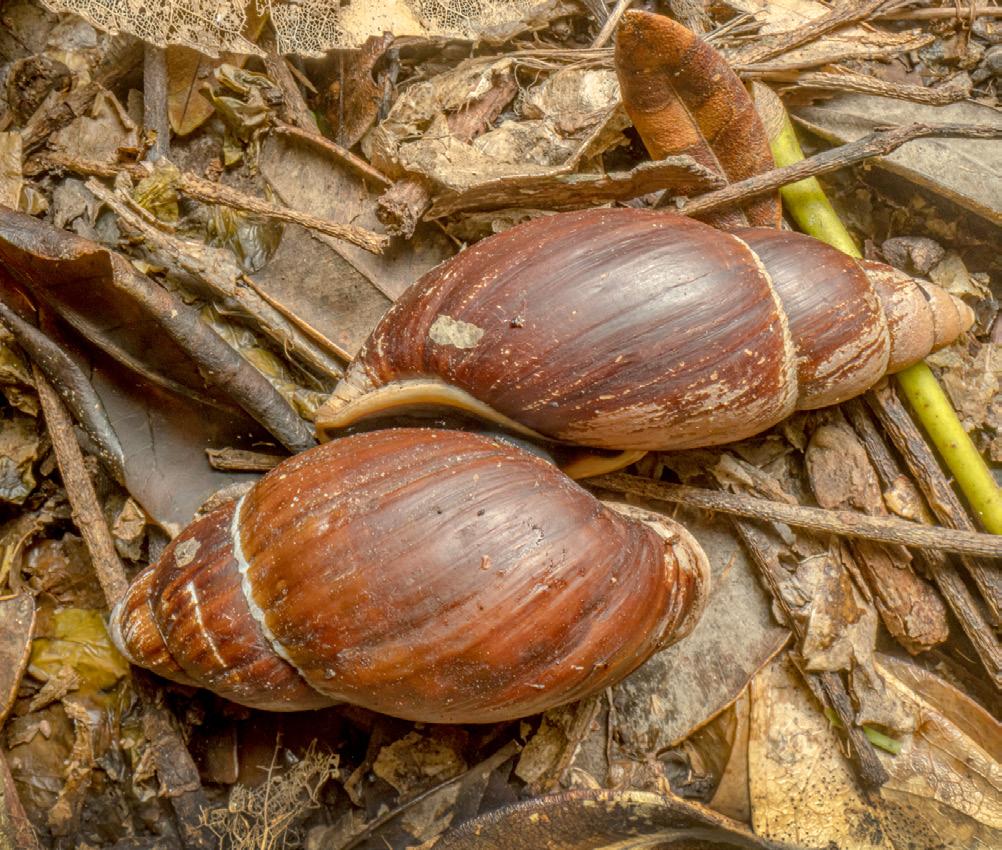
Among snail enthusiasts, New Zealand is well known for its high diversity of land snails –we have more than 460 named species and perhaps more than 1000 altogether. The herbivorous Maoristylus (pūpū harakeke, flax snails) are now restricted to a few native shrubland and forest remnants in Northland and some offshore islands. Pūpū harakeke flax snails take their name from their source of shelter rather than their food, although they mainly live among fallen leaves. They are taonga for Māori and even part of Te Tiriti o Waitangi claims. Most land snails are tiny, with shells less than 1cm in diameter, but we also have some of the largest species in the world. These include carnivorous Paryphanta (pūpū rangi kauri snails) in Northland and Powelliphanta in the South Island and southern North Island.
Dr Ursula Cochran is a freelance science writer from Wellington. She was formerly an earthquake geologist at GNS Science.
→ BIODIVERSITY
A rare find of an intact flax snail fossil. This is the new species Archaeostylus manukauensis Julianne McCoun
Flax snail Maoristylus hongii. Shaun Lee/iNaturalist
| Forest & Bird Te Reo o te Taiao 50
Pūpū rangi kauri snail on kauri cone. Ian Preece

TRAVEL FOR GOOD
The Intrepid Foundation has partnered with Forest & Bird to support our conservation work. Gretchen Carroll
Global travel company Intrepid Travel has always focused on purpose-driven business, which is more than just “sustainability”.
As a certified B Corp, Intrepid is not only accountable to its shareholders, but also to people and planet. The business is focused on addressing the cultural, humanitarian, and environmental impacts of travel and making a positive difference.
One of the major ways the company brings this ethos to life is through its not-for-profit arm, the Intrepid Foundation, which is partnering with Forest & Bird with the aim of having a long-term positive impact.
Eve Lawrence, general manager for Intrepid Travel in
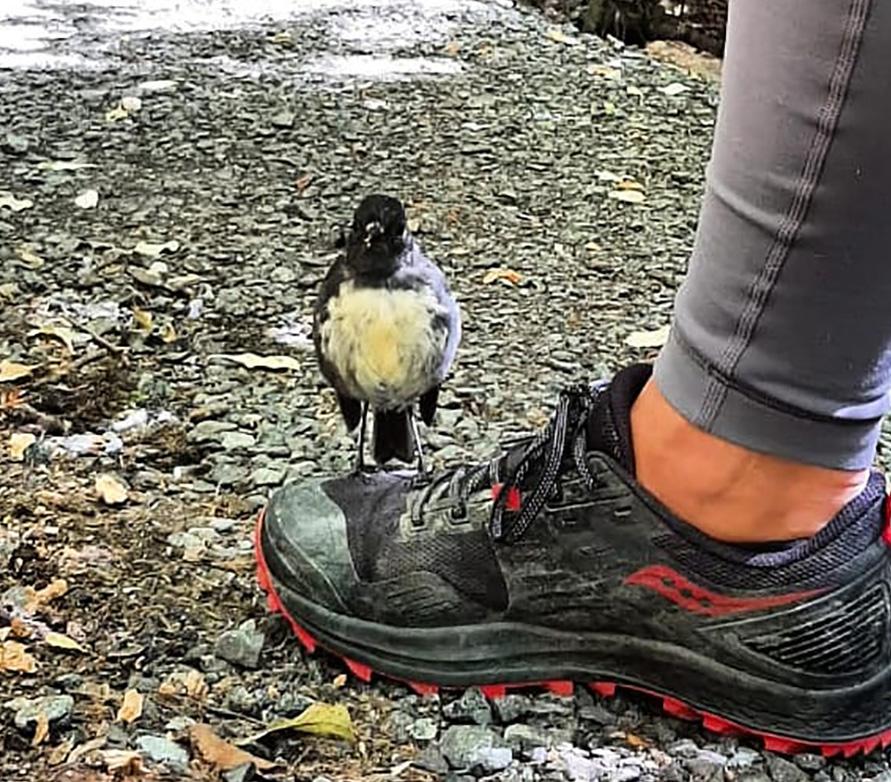
Aotearoa, says a key part of this new relationship is education for customers on its trips, a core component of the partnership.
The Intrepid Foundation will match dollar for dollar donations made to Forest & Bird via Intrepid Travel and will share information with travellers about Forest & Bird’s work and the local environment.
After much consideration around who would have the biggest impact in Aotearoa, Intrepid Travel chose Forest & Bird after it became clear there were many synergies in values and vision.
“As a charity that is close to the heart of New Zealanders, the choice to work together was a no-brainer,” said Eve.
Intrepid is currently in the process of matching Forest & Bird projects with its tours in Aotearoa. Eve said another key focus for the organisation is advocating for the local travel industry to push past carbon offsets and focus on decarbonisation strategies.
“We know there is huge appetite from local operators to become more climate active, but it can be hard to know where to start, so we will work with local operators to help them.”
Eve moved to Aotearoa from London in 2015 and loves living here, although she would like more time to get into the outdoors.
“I was miserable in London and hated city life. I chose New Zealand because I enjoy getting into nature and tramping, and I’m passionate about ocean conservation.”
Forest & Bird is delighted to be teaming up with Intrepid Travel.
“It feels like they’re committed to helping travel have a positive impact on social and natural environments,” said Alexandra Moyes, acting GM fundraising and membership.
“We’re working with them to empower Intrepid tour leaders to educate their customers about nature.
“Tourists come to enjoy the wildlife and wild places in Aotearoa New Zealand. To give them the opportunity to donate and stay connected to our mahi after they leave can add to their experience.”
Find out more about Intrepid Travel’s New Zealand trips at www.intrepidtravel.com/ nz/new-zealand and the Intrepid Foundation at www. theintrepidfoundation.org/t/ forest-bird.
OUR PARTNERS
51 Autumn 2024 |
Intrepid Travel’s Eve Lawrence. Supplied

AT SEA SEDIMENT
Erosion caused by Cyclone Gabrielle had a devastating impact on the coastal environments of Hawke’s Bay and East Cape. Chantal Pagel
We’ve just seen commemorations for the first anniversary since Cyclone Gabrielle – a fresh reminder communities still live with its aftermath.
When we hear of Cyclone Gabrielle, we tend to associate it with images of slips, houses, and cars covered in silt and forestry slash littering our foreshores.
However, sediment from our most disastrous storm since 1988 didn’t just affect life on land, it also introduced an immense amount of sediment into our coastal waters.
New Zealand is a land of erosion (see box right). With any major rainfall event, the influx of sediment increases and settles on the sea floor.
Why is this an issue?
Sedimentation is the process of soil, sand, and other particles being carried by water and deposited on the seabed or shore. It can have various impacts on the
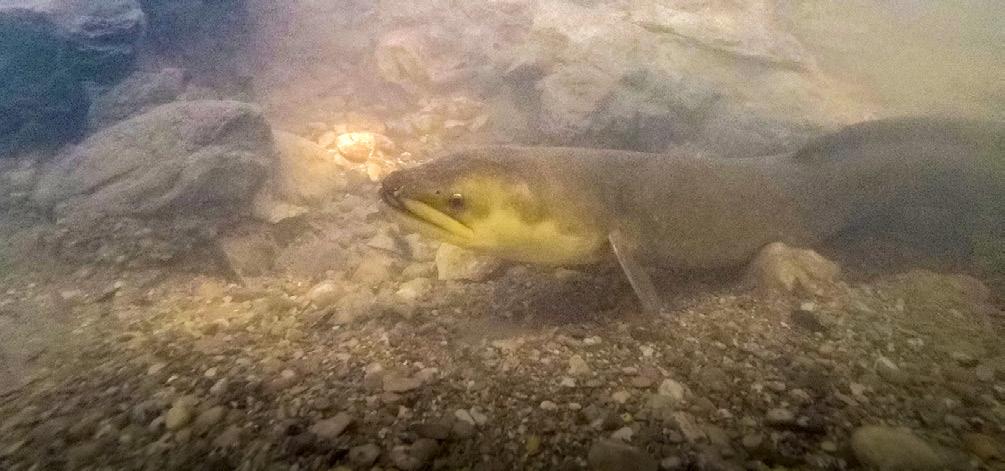
marine environment, depending on the source, amount, and type of sediment.
Most commonly, important habitats such as kelp forest or seagrass beds are smothered and fish stocks are reduced due to changes in ocean chemistry – think oxygen, turbidity, and light.
However, an influx of sediment can also have further implications on our health and wellbeing as it can carry pathogens and toxins we’re exposed to when we use our coasts for work and play.
Because of the soft geology of the Hawke’s Bay region, sediment going into the coastal water has always occurred and coastal ecosystems have evolved to cope and/or recover.
But the magnitude of sediment inputs into the coast over time has greatly increased due to land use changes. What we’ve learned since Cyclone Bola in 1988 is that what happens on the slopes doesn’t stay on the slopes.
It affects our rivers and, consequently, our moana, with the extra sediment inputs leading to degraded ecosystems that aren’t as capable to cope and recover after these major weather events.
In the aftermath of Cyclone Gabrielle, Hawke’s Bay Regional Council and NIWA are studying the impact of sediment in the region’s coastal environment. They are particularly interested in finer sediments, as those are indicative of soils coming into the ocean from the surrounding land.
MARINE
Rivers carry eroded soils into the ocean. Peter Scott/Above Hawke’s Bay
| Forest & Bird Te Reo o te Taiao 52
Tuna eel in murky water caused by sedimentation. Stuart Mackay/NIWA
“Often after storms we have big sediment plumes into the Bay,” said Becky Shanahan, team leader of Freshwater and Marine Science at Hawke’s Bay Regional Council.
“But after Gabrielle, we noticed even small amounts of rain would cause the kind of plumes we’d normally see after big storms. We think it’s because the sediment on land is so loose following the cyclone.”
Funded by Fisheries New Zealand, NIWA researchers travelled to Hawke’s Bay this year to investigate the impact of sediment on our coastal ecosystems.
They used multibeam sonar for seabed mapping, a towed video camera for imaging the seafloor and its habitats, and a sediment drill to sample the seafloor and the life within.
The data will be used to help build models of where the sediment has ended up and the implications for the ecosystem.
Changes observed during the three voyages will give an early indication of impacts, while scientists are also looking at the amount of time it takes for the marine environment to recover from such a major event.
From a conservation perspective, this is important, particularly when it comes to establishing management objectives associated with commercial and culturally significant marine species. These include pāua, kina, and kōura, as well as the kelp forests, seagrass, and shellfish beds that sustain them.
But Rome wasn’t built in a day, and it will take a few more voyages at sea and digging through mud to understand the full picture of our battled moana.
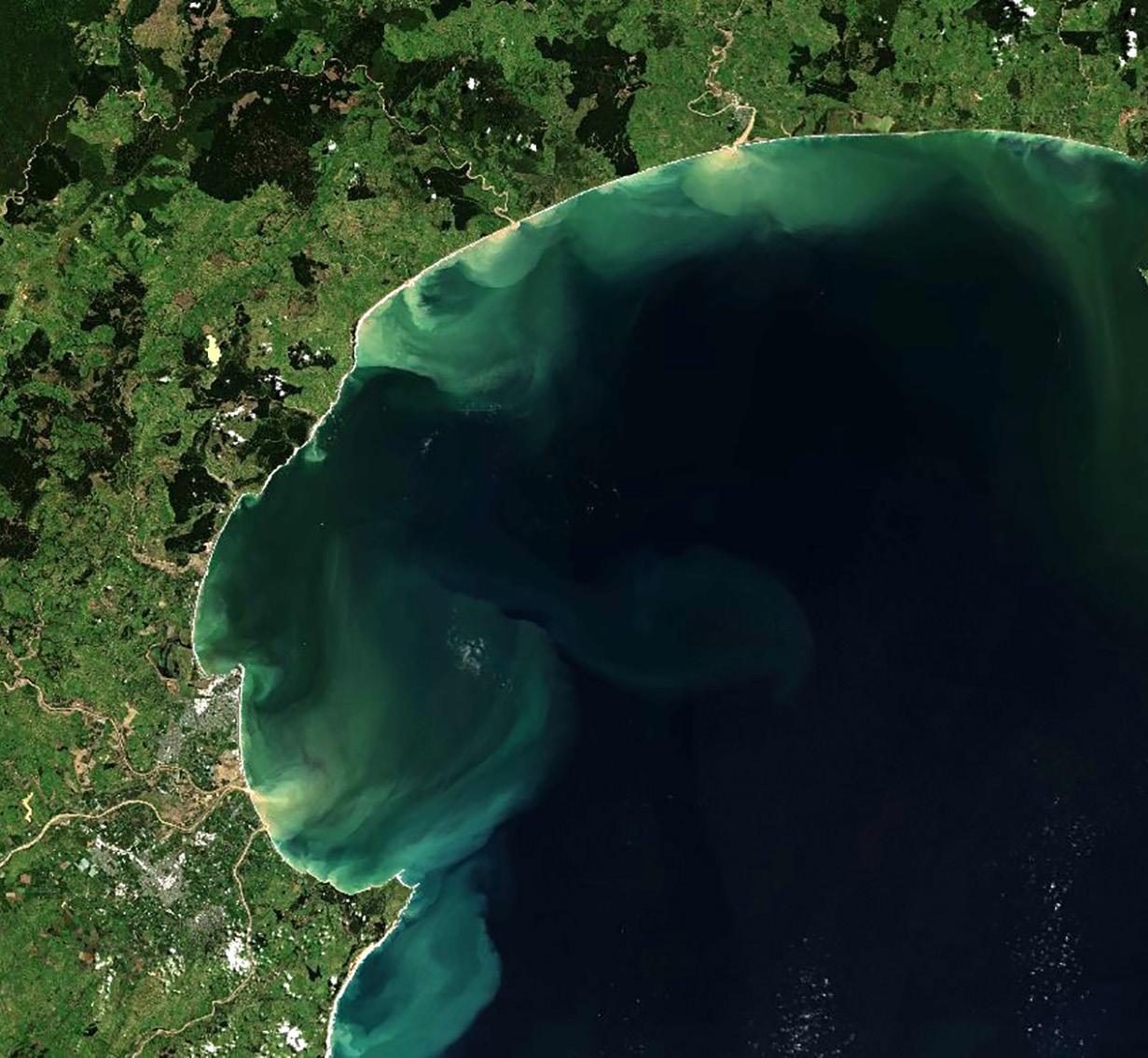
SAVE
OUR SOILS
Sediment entering Hawke’s Bay after Cyclone Gabrielle, 2023.
Satellite image courtesy Hawke’s Bay Regional Council
IMPACTS
OF
SEDIMENT AT SEA
LOSS OF MARINE HABITAT
such as coral reefs, seagrass beds, and kelp forests.
LESS FOOD, OXYGEN, LIGHT
for commercial fish stocks and other marine animals.
REDUCED WATER CLARITY
impacting recreational users, divers and snorkellers, including kai moana gatherers and tourists.
RISKS TO HUMAN HEALTH
as sediment carries pollutants, pathogens, and toxins that contaminate seafood.
LOWER PRODUCTIVITY
changes to nutrient balance, circulation, and turbidity affect the functioning of marine ecosystems.
SOURCES: Our Marine Environment 2022, Ministry for the Environment; Addressing Sediment and Pollution, Environment Foundation; “Facts about Marine Sediment”, Department of Conservation.
Aotearoa is losing about 192 million tonnes of soil a year, according to Our Land 2018. The government report said New Zealand was contributing about 1.7% percent of the sediment delivered to the world’s oceans annually due to soil erosion, even though the country accounts for just 0.2% of global land area.
A lot of this lost soil comes from natural erosion, says NIWA, but more than 40% of the soil entering our rivers comes from farm pasture.
New Zealand is especially susceptible to erosion because of its steep lands, geology (highly erodible sedimentary rocks), high intensity rainfall, and earthquakes. Many places, such as Hawke’s Bay, have a combination of highly erodible sedimentary rocks, earthquakes that destablise steep hillsides, and heavy rainfall events that trigger slope failure and landslides.
While soil erosion and sedimentation are entirely natural processes, the rates increased markedly due to loss of forest land cover with the arrival of people in New Zealand, says Dr Andrew Swales, a NIWA estuarine physical processes scientist. Climate change, forestry practices, and loss of native forest cover have increased New Zealand’s existing susceptibility to erosion.
53 Autumn 2024 |


CENTENNIAL STORIES
| Forest & Bird Te Reo o te Taiao 54
“The Convert’s Reward”. Arthur Messenger, Forest and Bird, issue 33 (1934).

THE CAT MENACE
The notion of killing cats to safeguard native birds is not new among conservationists and was as deeply ingrained in the inter-war period as it is today. Anton Sveding
When economist and philanthropist Gareth Morgan suggested a nationwide eradication of domestic cats in 2013, it caused a public outcry. Five years later, Southland Regional Council proposed a ban on all new domestic cats in the small village of Omaui to protect the area’s birdlife.
The council said hearing and seeing tūī “would more than make up for not being able to own a cat”. But a majority of the village’s human inhabitants disagreed. One argued cats played an integral role in combating the high number of rats and compared the proposed ban to the actions of “a police state”.
While proponents of cat bans or even nationwide eradication of the species have met with strong resistance, even being portrayed as cat-hating fanatics, neither Morgan nor Southland Regional Council were among the first to label cats as a menace to native birds.
On the contrary, the notion of killing cats to safeguard native birds is deeply rooted in the New Zealand conservation movement that emerged in the early decades of the 20th century.
Propaganda efforts by leading bird preservationists in the interwar period tried to convince the public of the menace that cats pose to native birds and that cats ought to be destroyed in the name of bird preservation.
This can particularly be seen within the Native Bird Protection Society, founded by Val Sanderson in 1923 and today commonly known as Forest & Bird.
This article does not take a position on whether cats should be killed to protect indigenous avifauna. Rather, it seeks to highlight the necessity of a historical perspective when discussing the complex relationships between humans, cats, and native birds in Aotearoa New Zealand.
Cats were among the first animals introduced by Europeans to Aotearoa. On his first journey (1768–1771),
Cook reportedly gifted two cats to local Māori at Uawa on the eastern coast of the North Island. Cats’ appetite for native birds was recorded on Cook’s second voyage, when naturalist George Forster observed the ship’s cat regularly jumping ashore for a meal.
Yet, despite being one of the first European animals to set paw onto Aotearoa soil, cats have been largely overlooked in its environmental historiography. In fact, cats have received limited attention among scholars of biological invasions in general.
Following the arrival of James Cook’s Endeavour, the cat population steadily increased with the growing number of sealers and whalers, and settlers from the 1840s. Soon cats had spread throughout the colony, causing havoc among native birds and contributing to the demise of some species and various degrees of endangerment of others.
During the interwar period, the Native Birds Protection Society (later Forest & Bird) embarked on a campaign to safeguard New Zealand’s indigenous avifauna. This included educating the public on the dangers that cats pose to native birds.
It employed both scientific means, such as statistics, and emotive evidence, such as pictures, cartoons, and photographs, showcasing the menace cats posed to native birds through its magazine.
In 1925, Sanderson featured a children’s story in the journal about siblings Billie and Mary, who encountered a cat staking out a nest containing four grey warbler chicks. Their father set up a trap and the following morning found “a very angry cat” inside it.
The story ends ominously: “Father smiled to himself and getting a sugar bag from the kitchen managed to finally get puss inside it. ‘I thing [sic] those little birds are worth a dozen of your kind,’ he said to himself, and no one ever saw that black and white cat again.”
→
55 Autumn 2024 |
Usually, the cover of the magazine featured pictures of native birds, but in March 1931 it showed a stalking cat on a branch about to pounce on a bird’s nest. Possums, mustelids, and other animals may cause greater damage to birds in rural areas, but the Society was portraying cats as the primary threat to birds in urban areas.
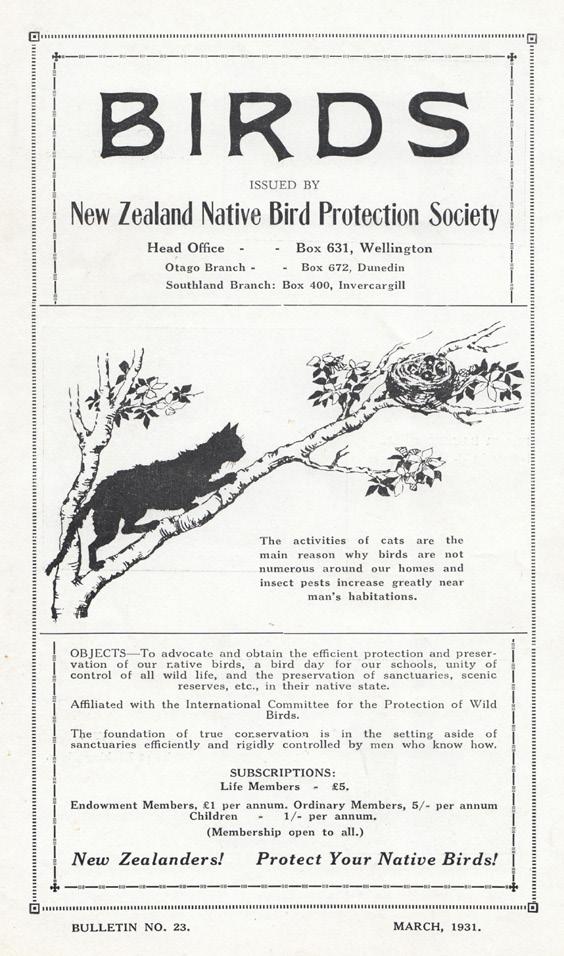
To leading bird preservationists, such as Sanderson and naturalist William Herbert Guthrie-Smith, cats constituted a major danger to native birds, a view they expressed in newspaper articles and books.
Sanderson also offered practical tips for protecting birds in the garden, publishing a number of trap designs, including this one for cats in 1932.

In 1933, Leo Fanning, a journalist hired by the Society to write articles for newspapers, described cats as “destroyers of native birds” and called for “something suitable for the control of predatory cats”.
The following year, Sanderson called for cat control legislation in an article in Forest & Bird’s magazine arguing that licensing cat ownership was important and berating the lack of action by authorities in response to the “grievous nuisance of cats”.
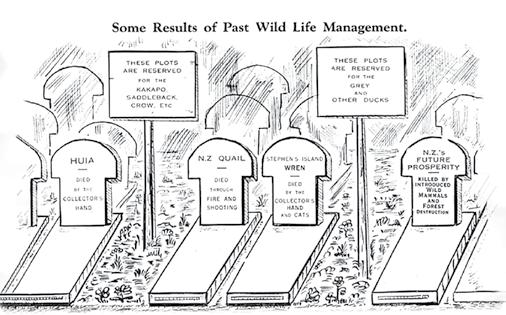
Cats were partially blamed for the demise of Lyall’s wren. Forest & Bird cartoon, 1937.
When radio ownership increased dramatically in the 1930s, Sanderson quickly employed the new medium to further the Society’s aims. An enthusiastic member known only as “Wirehana” started making radio broadcasts about the benefits of birds in New Zealand.
In 1934, to support Sanderson’s call for stronger cat controls, “The Convert’s Reward” sketch by VicePresident Arthur Messenger appeared in the Society’s magazine. It illustrated the process of a bird antagonist transforming into a bird conservationist as a result of the radio broadcasts.
The sketch asserts that cat ownership was incompatible with bird preservation. Indeed, for birds to regularly visit one’s garden plot, both cat and hunting rifle had to be put down, as we can see in the final frame (see page 54).
Forest & Bird’s cat advocacy continued into the 1940s. “Compulsory registration of cats was suggested at the annual meeting of the Forest and Bird Protection Society last night, as a means of protecting birds,” declared the Evening Post in April 1942.
“It was even suggested that nobody should be allowed to keep a cat.”
Newspapers of the day became sites of fierce debates regarding whether cats constituted a threat to native birds, with cat advocates emphasising the importance of cats as companions to humans and as hunters of rats, arguments that continue to be used today.
Indeed, when compared to present day debates, arguments largely remain the same, with proponents of cat bans highlighting the joy of hearing and seeing native birds, as well as expressing concern for native birds’ preservation.
This demonstrates the long, complicated, and to some extent emotional history of species valuation. Moreover, it illustrates the necessity of a historical perspective when discussing human–animal relationships in Aotearoa, in particular when it comes to birds and cats, animals that so many hold dear.
Anton Sveding is a post-doctoral research fellow at University of Agder, Norway. This is an edited version of his article “Cats and Native Bird Preservation in Interwar New Zealand”, which was published in the New Zealand Journal of History, 56, 1 (2022). Anton carried out primary research for this article while a PhD student in history at Victoria University of Wellington. You can read Anton’s full article at https://bit.ly/46lpQo0.
→
Birds, issue 23 (1931)
| Forest & Bird Te Reo o te Taiao 56
ACT FOR CATS
Forest & Bird is working to get the Cat Management Act over the line this year in a win-win for wildlife and cat welfare.
Cats are the most popular pet in Aotearoa New Zealand, but thousands are dumped in the bush every year and left to fend for themselves.
Forest & Bird, and others, are calling for a national Cat Management Act that would introduce mandated microchipping and desexing for all pet cats.
This would reduce the number of strays and allow domestic cats caught in live traps to be reunited with their owners.
Thanks to your generous donations last year, Forest & Bird’s predator-free campaign team wrote a detailed expert submission in support of a Cat Management Act.
We’ve also given evidence to Parliament’s Environment Committee and advocated for a national Cat Management Act in communities and the media.
Now we need to show the newly elected government that tens of thousands of New Zealanders support a strong and workable Cat Management Act.
Doing nothing will lead to more local bird extinctions, biodiversity loss, animal cruelty, and disease.
You can make a difference for native wildlife by donating to support our cat act advocacy in 2024.
We are tantalisingly close to securing a landmark win for nature, but we need your help.
Please make a donation at www.forestandbird.org. nz/support-us/appeals/support-predator-free.
REASONS TO SUPPORT 10
➊ FIRST IN THE WORLD. A national Cat Management Act would introduce mandated microchipping and desexing for all pet cats. No other country regulates cats nationally.
➋ IMPROVE CAT WELFARE. Regulating cats means fewer will be abandoned to live as starving strays. It’s more humane.
➌ SAVE LOCAL WILDLIFE. Native birds, lizards, and insect populations bounce back once feral and stray cats are removed. Trapped microchipped pets can be returned to their owners.
➍ RESPONSIBLE CAT OWNERSHIP. A Cat Management Act would make owners more responsible (as dog owners are, thanks to the Dog Control Act 1996). It’s only fair.
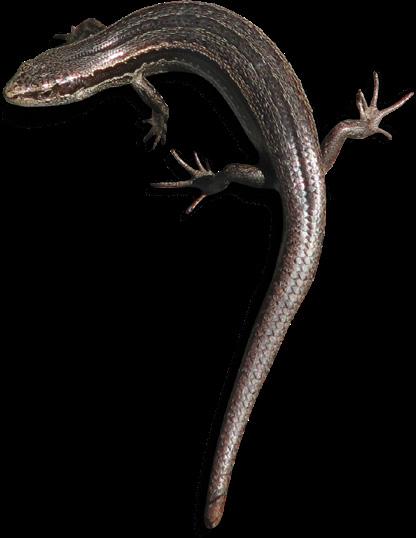
➎ CATS CARRY DISEASE. They carry the parasite causing Toxoplasmosis disease that can lead to miscarriage and birth defects in humans and sheep, and death in Māui and Hector’s dolphins.
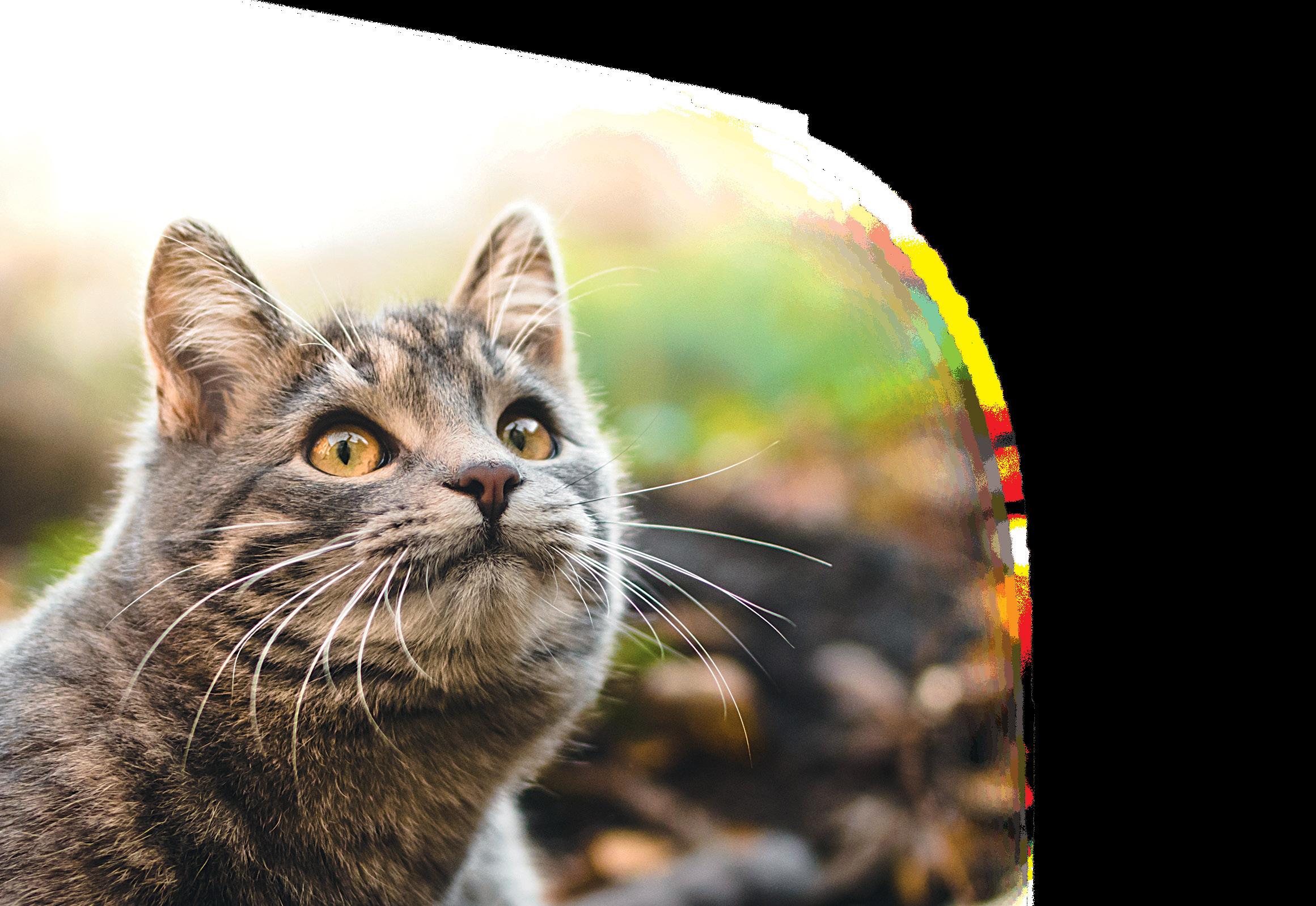
➏ THE SPCA WANTS BETTER CAT MANAGEMENT. Including microchipping, desexing, and registering cats on a national database.
➐ COUNCILS SUPPORT A CAT MANAGEMENT ACT TOO.
Local authorities are unable to manage cats effectively under existing legislation.
➑ CATS ARE RESPONSIBLE FOR 63 EXTINCTIONS WORLDWIDE. In Aotearoa, feral cats killed the last of our tiny endemic Lyall’s wrens in 1895.
➒ NO UNWANTED KITTENS. Desexing would mean fewer litters ... and fewer cats would end up stray and eventually feral.
➓ IT’S TIME TO ACT. Forest & Bird has been asking for a Cat Management Act since 1934 (see left). This year is the closest we have ever been to achieving this.

PREDATOR-FREE NEW ZEALAND
57 Autumn 2024 |
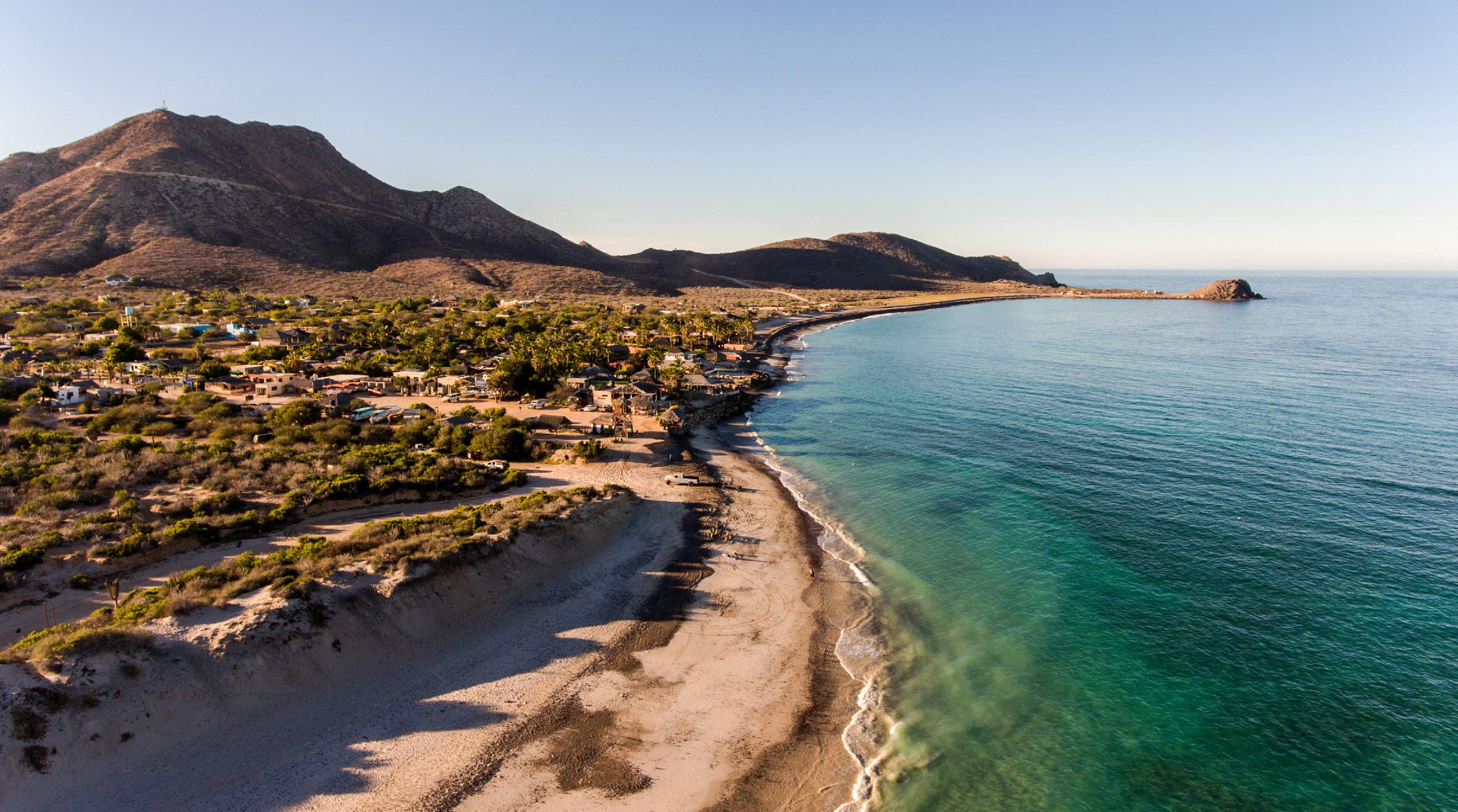
BEACON OF HOPE
Kathryn Curzon goes diving in Mexico and discovers the twin benefits of ocean conservation and ecotourism.
Diving into the warm, blue waters of the Cabo Pulmo National Marine Park is like stepping back into a time when our ocean ecosystems were exactly as they ought to be – teeming with life, untouched, and wild.
Places where nature rules and the impacts of humanity are blissfully absent. This inspiring marine park is located on the east coast of Mexico’s Baja California peninsula in the sun-kissed waters of the Sea of Cortez.
The diverse reef colours and abundance of marine life at Cabo Pulmo create an experience that attracts scuba divers from around the world.
However, it wasn’t always like that. Cabo Pulmo has transformed from a struggling fishing community to a beacon of marine conservation and a world-class dive destination.
In the 1990s, Cabo Pulmo faced a crisis as overfishing depleted its marine resources. Local communities recognised the
urgent need for change and made a bold decision to transition from a traditional fishing industry to ecotourism.
The shift aimed to protect the marine life they once depended on and to secure a sustainable future. This pivotal change marked the birth of the Cabo Pulmo National Marine Park.
Established in 1995, the marine park was a collaborative effort, driven by a small community’s devotion to conservation. Locals, in partnership with environmental
organisations, created a sanctuary where marine life could thrive.
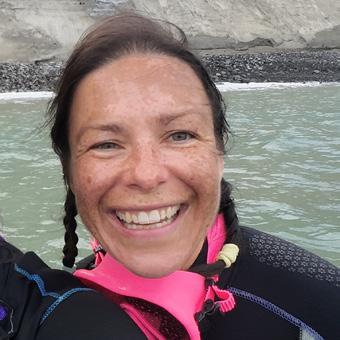
The results are staggering — a remarkable 400% increase in fish biomass, showcasing the success of this grassroots initiative.
Jacques Cousteau famously referred to the Sea of Cortez as the “Aquarium of the World” and used this term to highlight the incredible biodiversity and richness of marine life found in this region.

GOING PLACES
Kathyrn Curzon
Diverse sea coral formations are a feature of the marine park. Kathryn Curzon
Cabo Pulmo National Marine Park. Shutterstock
| Forest & Bird Te Reo o te Taiao 58
There are now more than 6000 marine species at the Cabo Pulmo National Marine Park, including sea lions, whales, rays, and sharks.
Tucked away at the end of a long and bumpy unsealed road, Cabo Pulmo isn’t the easiest destination to get to. Towering cacti and rolling hills dominate the landscape, eventually leading to a panorama of idyllic beaches and bright turquoise waters.
At the end of the road, a scattering of thatched beach shacks and an unassuming dive centre announce your arrival. There is not a tarmac road in sight. This is a destination far from the buzz of towns and mainstream tourism.
seemingly never-ending train, is the dive highlight that Cabo Pulmo is famous for, and it lives up to expectations.
Diving at Cabo Pulmo isn’t just a visual feast though. It’s also a crucial economic lifeline for the local community.
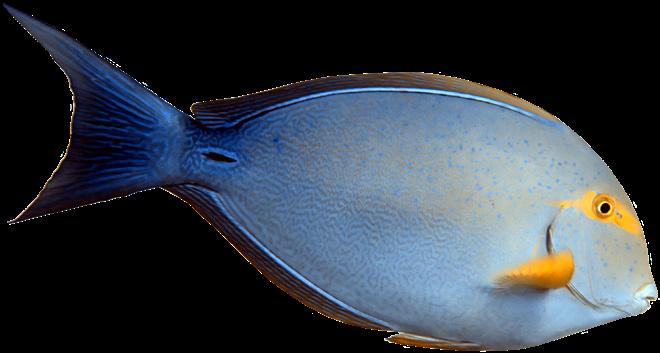
After a surf launch and short boat ride out to the dive sites, you are immersed in warm waters with colourful reef fish and passing sea turtles.

The diverse coral formations and sea fans add another layer of beauty, making every dive a unique experience. The currents can be strong, but often you can dive with them, drifting over the landscapes below.
Diving alongside huge schools of jacks, which pass by in a
The income generated from scuba diving significantly surpasses what was once derived from the fishing industry. This shift not only revitalised the community but also underscored the financial viability of sustainable tourism over resource exploitation.
The positive impacts of Cabo Pulmo’s conservation efforts extend beyond fish populations and economics. The park serves as a model for how marine ecosystems can rebound when protected. Coral reefs flourish, creating a haven for various species.
The park has also become a research hub, contributing valuable data to global marine conservation efforts. It serves as a model for successful community-driven marine conservation and inspires other communities worldwide to consider how they can protect their marine environments.
Whether you are a diver or not, it is worth visiting Cabo Pulmo simply to be inspired by what conservation-minded communities can achieve.
It is a testament to the lasting positive impacts we can have when we unite for conservation.
From the brink of ecological collapse to a thriving marine sanctuary, this success story offers a glimmer of hope for other struggling ecosystems worldwide.
As we face the global climate and biodiversity crises, you need look no further than this small, unassuming community to find hope for a future where nature and humanity can thrive


GETTING THERE
If you plan to visit Cabo Pulmo, which I highly recommend, the best time to experience diving there is from August to December. During those months, the waters are warm and full of life. From December to March, the waters are cooler, but you can spot humpback whales and whale sharks. See Creatures (seecreaturesbaja.com) offer a variety of diving experiences at Cabo Pulmo and further afield.
Diver with huge school of jack fish at Cabo Pulmo. Kathryn Curzon
Sea fan. Kathryn Curzon
59 Autumn 2024 |
A
man of integrity

Environmental and political activist Mike Collins, of Ōpotiki, was a man of peace, strength, and courage who stood up for what he believed in throughout his life.
Linda Conning
Acurious, mischievous, and talented child, Mike enjoyed making things from wood and carving intricate objects, and as a teenager built gliders, model trains, and model aeroplanes.
His geologist father, a pacifist, left his mark on his son, and Michael, aged 15, opted out of cadets at Christchurch Boys High School.
Achieving a First Class Honours degree in Mechanical Engineering, Mike won a two-year scholarship to Cranfield College of Aeronautics, near Cambridge, England.
Returning to New Zealand, he worked in civil aviation but was directed to convert agricultural planes to be used by the military in Vietnam, work that was being financed by Columbo Plan educational aid money.
He protested, to no avail, and was summoned to Prime Minister Holyoake’s office. He was allowed to continue his employment but with no chance of promotion.
Mike then became a research scientist at the Forest Research Institute in Rotorua. As well as research, he designed a machine to test the strength of timbers, later going to Malaysia to instruct in its use. This machine is still in use today, with some modifications.
He became an environmental activist and “stirred the pot” while working for the Native Forest Action Council, being appointed to the Whirinaki Forest Park Advisory Committee following a tense campaign that saw the end of native forest logging there.
At the same time, Mike became involved as an organiser for the Electoral Reform Coalition to promote Mixed Member Proportionality (MMP). He and his wife Meg were at the first meeting to form a Green Party in New Zealand, and he became its first membership secretary.
He persuaded others to set up branches of the Green Party and the Electoral Reform Coalition in Tauranga. Leading MMP campaigner Tony Hartnett saw Mike as a mentor – calm, courageous, and with intellectual insight that was crucial in moving MMP forward.
Mike was active in electricity reform, the peace movement, and Nuclear Free NZ, successfully lobbying Rotorua Council to become nuclear-free. He was also a long-time supporter of the Campaign Against Foreign Control of Aotearoa (CAFCA).
Mike joined Forest & Bird in the 1970s while living in Rotorua and was a member for more than 50 years. His support for the Eastern Bay of Plenty Branch included extensive conservation work at Ōhiwa Harbour helping Meg with pest control, native planting, and shorebird monitoring.
His conservation work also included using his engineering skills to help Nukuhou Saltmarsh Care Group and Waiotahe Valley school children build board walks in the Eastern Bay of Plenty,
He became well known for his proclivity to “mickify” – fixing things using a variety of available objects and was known for saying, “Hey, don’t throw that away – it might be useful someday.” His last eco-venture was as being a watch repairer at the Opotiki repair café.
Mike died suddenly in Christchurch after a fall on the way back from a Fiordland cruise. At a celebration of his life, he was described as a man of peace and courage who stood up for what he believed in. He is sorely missed by his family, friends, and community.
Mike John Collins, born 2 October 1942, died 28 September 2023. He is survived by his wife Meg, son Felix, and step-children Sachi and Tom.
TRIBUTE
| Forest & Bird Te Reo o te Taiao 60

Books
AIMING HIGH
By Di Buchan
The story of Byron Brown and his granddaughter Mary-Annett Hay paints a vivid record of the lives of two remarkable people, while covering aspects of New Zealand life from the late 1800s to 2000. Byron Brown was an entrepreneur, community leader, benefactor, broadcaster, environmentalist, philosopher, poet, and storyteller, the “father” of Ōtaki, and an internationally recognised expert on Shakespeare and Dickens. His granddaughter MaryAnnette Hay became an artist, actress, broadcaster, and Queen of Wool for the New Zealand Wool Board. Their story is told by historian and environmentalist Di Buchan.

In 1936, Brown recorded six radio talks for the Society written by its founder Val Sanderson. They each began “This is the Forest & Bird Society calling...”
Mary Egan Publishing, RRP $45
ARTISTS IN ANTARCTICA
Edited by Patrick Shepherd
END OF EDEN
By Adam Welz
This revelatory exploration of climate change from the perspective of wild species and natural ecosystems offers a radical new kind of environmental journalism that connects humans to nature in a more empathetic way than ever before. It galvanises us to act in defence of the natural world before it’s too late. Extreme weather events are intensifying, megadroughts are afflicting vast regions, and megafires are burning up millions of acres. Species and ecosystems are also being eroded and rearranged more subtly as local microclimates shift. Welz tells the stories of some of these species to show how climate change is reshaping the entire natural world. Bloomsbury Publishing, RRP $59.30
SIX-LEGGED GHOSTS
By Lily Duval

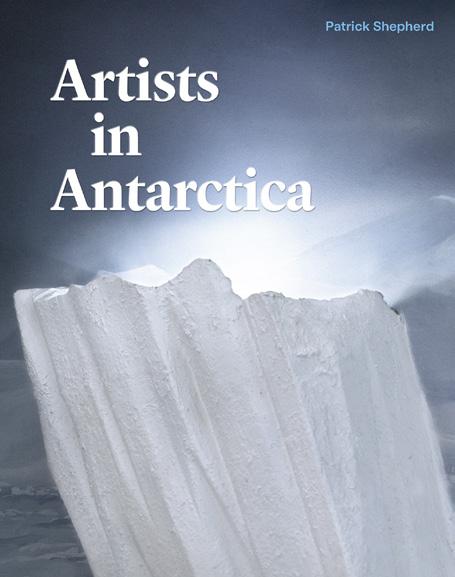
What transformation happens when writers, musicians, and artists stand in the vast cold spaces of Antarctica? This gorgeous book brings together paintings, photographs, texts, and musical scores by Aotearoa New Zealand artists who have been to the ice, including Laurence Aberhart, Nigel Brown, Gareth Farr, Dick Frizzell, Anne Noble, Virginia King, Owen Marshall, Grahame Sydney, Ronnie van Hout, and Phil Dadson. Together, they explore Antarctic science, nature, and human history. This large format books contains more than 100 artworks. Massey University Press, RRP $80
Why isn’t Aotearoa famous for its insects? We have wētā that can survive being frozen, weevils with “snouts” almost as long as their bodies, and the world’s only alpine cicadas. Without insects, the world is in trouble. Insects are our pollinators, waste removers, and ecosystem engineers –they are vital for a healthy planet. So why don’t more people care about the fate of the tiny but mighty sixlegged beings that shape our world? Richly illustrated, and including more than 100 original paintings by the author, Six-legged Ghosts: The insects of Aotearoa examines the art, language, stories, and science of insects in Aotearoa and around the world. Canterbury University Press, RRP $55
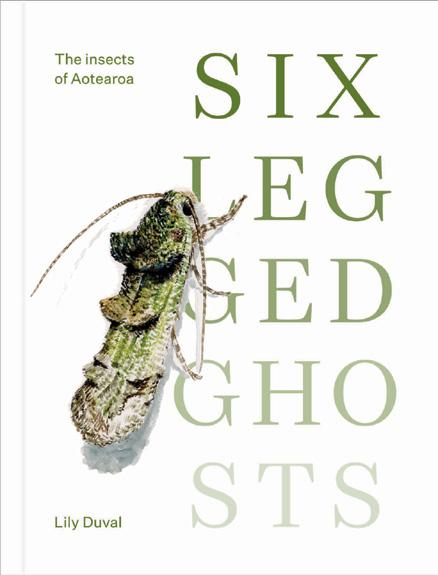
61 Autumn 2024 |

• Heaphy Track
• Abel Tasman
• Old Ghost Road
• Cobb Valley
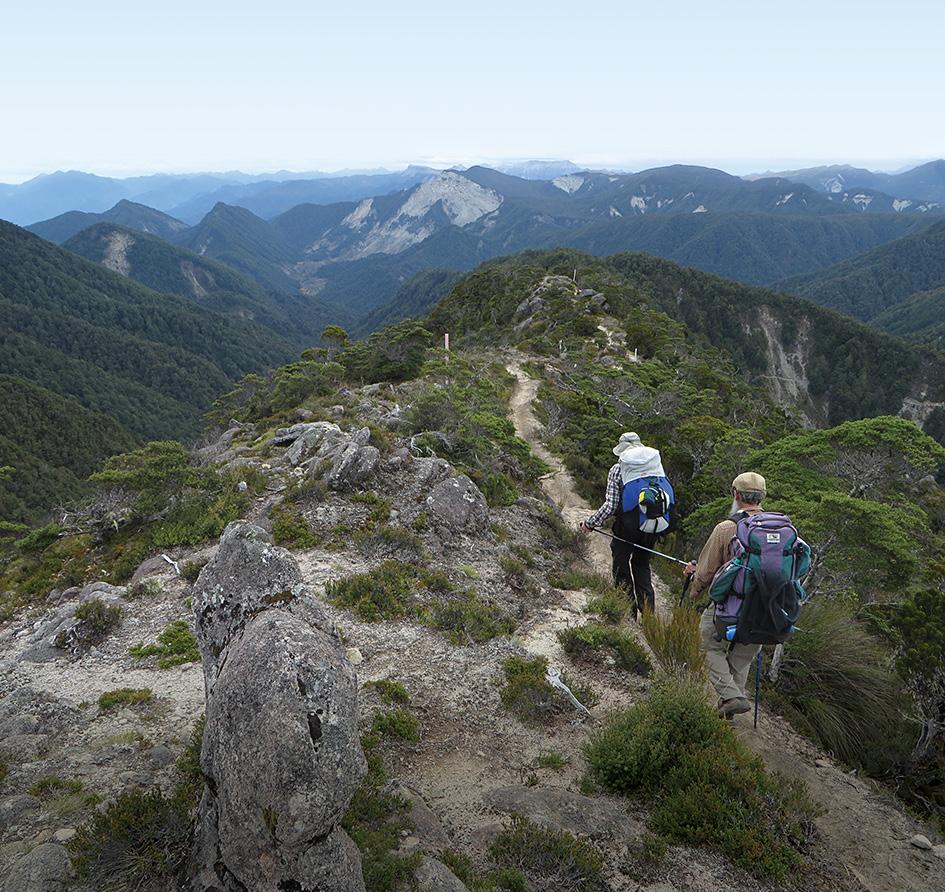
www.kahurangiwalks.co.nz
WIPE OUT: Possums, Rodents, Mustelids, Rabbits
Standard & Mini Possum Bait
Traps ■ Rodent Bait Stations
Also
PHONE
MOBILE
&
WEB: www.philproof.co.nz
EMAIL: philproof@gmail.com
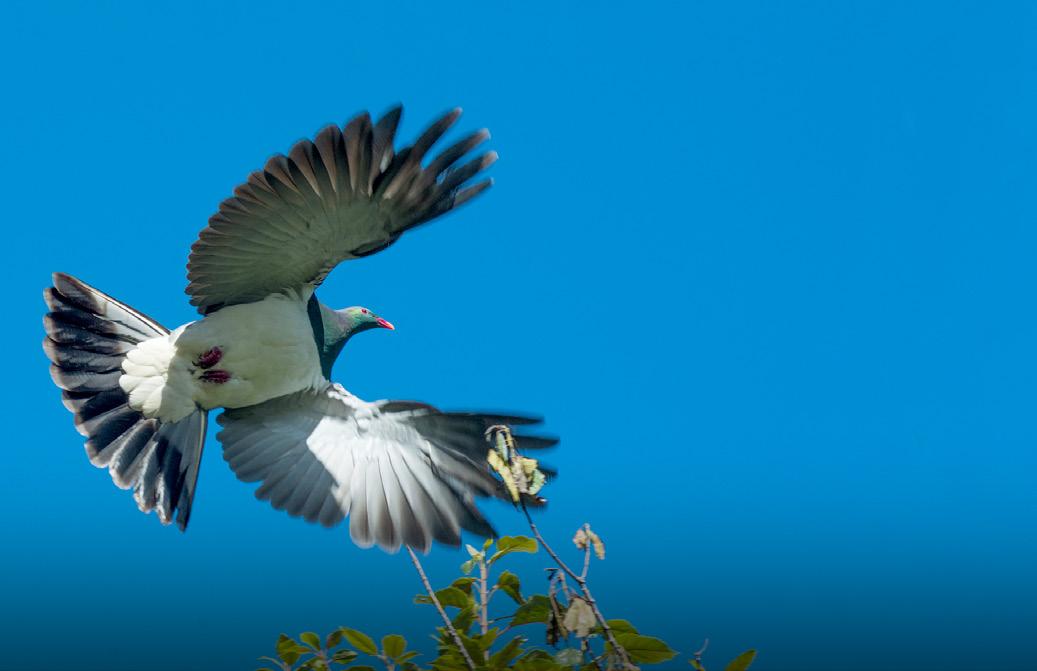


M
Arethusa Lodge
Near Pukenui, Northland Sleeps 6 herbit@xtra.co.nz 03 219 1337
Ruapehu Lodge
Whakapapa Village, Tongariro National Park Sleeps 32 office@forestandbird.org.nz
04 385 7374
Mangarākau Swamp Lodge
North-west Nelson
Sleeps 10 mangarakauswamp@gmail.com 03 524 8266
www.mangarakauswamp.com
Forest & Bird members can book all of these lodges at reasonable rates. Join today and feel good knowing you are making a difference for New Zealand’s nature. See www.forestandbird.org.nz/joinus
Tai Haruru Lodge
Piha, West Auckland Sleeps 5+4 hop0018@slingshot.co.nz 09 812 8064
Tautuku Forest Cabins
Owaka, Otago Sleeps 16 tautukucabins@gmail.com 0273764120
FOREST & BIRD’S WILDLIFE LODGES
MARKET PLACE
‘Carry less, enjoy more’ Come explore with us!
PEST CONTROL PRODUCTS
Phone: 03 3914120 PHILPROOF
Stations
Timms
and Block Baits ■ Rodent Snap Traps ■ Fenn Traps (MK4 & 6) ■ Trap Covers ■ DOC 200 trap and lightweight cover.
available: Monitoring Tunnels, Flagging Tape, Rabbit Bait Stations.
07 859 2943
021 270 5896
PO Box 4385 Hamilton 3247
Nature at Night Tour
long-tailed
experience a colony of luminescent
and explore the night
Encounter
bats,
glow worms
time bush.
027 385 3182
www.earthlore.co.nz
earthlore3@gmail.com With Earthlore Tours and Accommodation | Catlins 0800 925 586 www.glaciervalley.co.nz Join our knowledgeable local guides on walking tours in the stunning Glacier Country region. Learn about glaciology, flora & fauna, geomorphology, geology & history of this world renowned landscape. We cater for all ages & abilities, with 2 hr, half day & full day tours in our small groups, at your pace. | Forest & Bird Te Reo o te Taiao 62
W
E

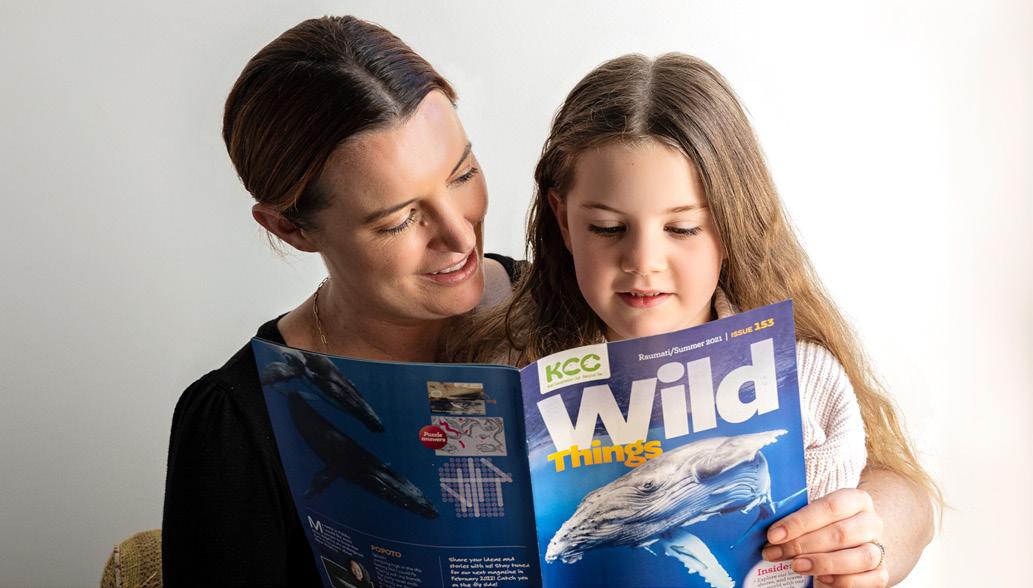
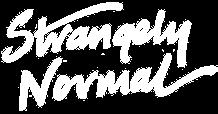






Advertise to Forest & Bird readers here Please contact Karen Condon PHONE 0275 420 338 EMAIL karen.condon@xtra.co.nz and reach 80,000 people who are passionate about nature and the outdoors. The trust provides financial support for projects advancing the conservation and protection of New Zealand’s natural resources, particularly flora and fauna, marine life, geology, atmosphere, and waters. More information is available from the Trust at PO Box 10-359, Wellington. Ron and Edna Greenwood Environmental TRUST Grab a limited edition centennial hoodie ($125+p&p) while stocks last. Our online shop features handpicked gifts for the nature lover in your life, including prints, jewellery, cards, and books. Every sale raises funds for Forest & Bird’s conservation work and supports a New Zealand eco-business. Shop for nature at shop.forestandbird.org.nz ONLINE SHOP BIRDLIFE RANGE MADE IN NZ MENSWEAR 19 O’Connell St, Ak CBD ph: 64 9 309 0600 strangelynormal.com Great value school, group, and overseas memberships also available. SHARE THE WONDERS OF NATURE Quarterly Wild Things magazine | Nationwide KCC adventures | Meet like-minded conservation families | Help cherish our unique wildlife and wild places. From $24 per annum. Join Forest & Bird’s Kiwi Conservation Club today go to www.kcc.org.nz/join 63 Autumn 2024 |

FIND A PEST
Download the new and improved app and help guard native biodiversity against exotic species.
An innovative mobile app that uses artificial intelligence to identify harmful weeds, pest animals, and diseases is enabling more New Zealanders to join the fight against invasive pests.
The Find-A-Pest app, developed with funding from the BioHeritage National Science Challenge, was recently rebuilt and redesigned, making it easier to identify and report unwanted invaders that harm New Zealand’s native species, export industries, and ecosystems.
The app covers all pests found on land and in water, including mammals, birds, insects, fungi, and pathogens, says project manager Abigail Evans.
“It helps build the database of information about pests and their spread, so anyone using Find-A-Pest is boosting New Zealand’s biosecurity intelligence,” she said.
“Reports from around the country can assist the many organisations involved in controlling and managing invasive pests, from central and local government through to industry groups, producers, and communities.”
App users can ensure pests are detected early, so there is less damage to the environment, adds University of Canterbury Associate Professor Steve Pawson, who led the development of Find-A-Pest.
Here are five pests to keep an eye out for this autumn.
GOLDEN CLAM
Now is a great time to be thinking about what your boat, paddle board, or other equipment that has been in lakes may be transporting between waterways. Golden clam was found just last year in the Waikato River and could very easily be transported to other waterways if equipment such as boats, trailers, and fishing gear are not thoroughly cleaned and dried.
FALL ARMYWORM
Another recent introduction is the fall armyworm, which has a short life cycle of just 24–55 days (shorter life cycle in summer), with each female


often laying 100–200 eggs in a mass and averaging around 1500 each in its life. With these large numbers, the populations can very quickly become massive infestations. The larvae stage are very destructive and feed on more than 300 species of plant.
ROOKS
Canterbury region is currently on the lookout for rooks, particularly in the Kennedy’s Bush area of Christchurch. These birds are very hard to find and catch, but progress has been made over the years in reducing their numbers. They are an agricultural pest, introduced in the 1860s to control insects but instead eating and damaging newly sown crops. Reporting any sightings means the population can be kept under control.
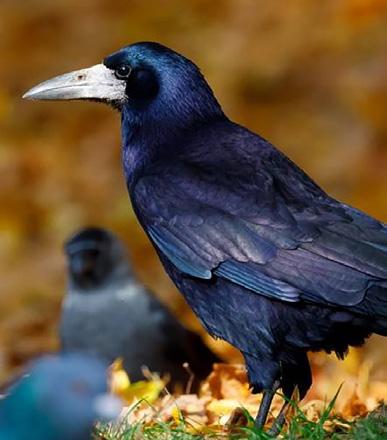
BROWN MARMORATED STINK BUG
Checking luggage and packages from overseas carefully is important for keeping out new species such as brown marmorated stink bug, which find places to hibernate and can be accidentally brought into the country.
EXISTING WEEDS
Many community groups, including Forest & Bird branches, are helping remove invasive weeds such as old man’s beard from our local environments. By submitting observations, people can support their work by guiding them to locations that need weeding.

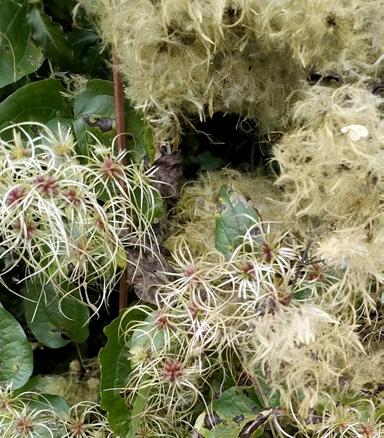
Find-A-Pest is available via Google Play or the App Store at www.findapest.nz.

LAST WORD
| Forest & Bird Te Reo o te Taiao 64

John O’Sullivan
Parting shot
I had a spare day in Wellington, free of wind, so decided to take my camera and long lens to Zealandia Ecosanctuary to hang out with the takahē. These incredible birds are free to wander and largely ignore the attention of onlookers. Five hours later, I had a greater appreciation of their pace of life and behavioural patterns. Some of the more satisfying images arose when they were out of full sunlight and moving in the shadows. From the photographer’s perspective, mottled light can be challenging yet rewarding.

WILD ABOUT NATURE | PHOTO COMPETITION
How to enter: Share your images of native birds, trees, flowers, insects, lizards, marine animals, or natural landscapes, and be in to win. Send your high-res digital file and brief details about your photo to Caroline Wood at editor@ forestandbird.org.nz. The best entry will be published in the next issue of Forest & Bird magazine.
The prize: The winner of this competition will receive a framed print of Ngahere Kōrero by Dannika Tukua. Created for the 26 Forest & Bird Centennial artists and writers project, the artwork depicts nature at our Walter Scott Reserve, Mt Pirongia, Waikato.

we ARE climbing

For over thirty years Bivouac Outdoor has been proudly 100% New Zealand owned and committed to providing you with the best outdoor clothing and equipment available in the world. It is the same gear we literally stake our lives on, because we are committed to adventure and we ARE climbing.
John Palmer at Sunnyside, Wanaka
www.bivouac.co.nz STORES NATIONWIDE Supporting
Heritage
Photo: Tom Hoyle
Aotearoa's Backcountry











 Mark Hanger
Forest & Bird President Perehitini, Te Reo o te Taiao
Mark Hanger
Forest & Bird President Perehitini, Te Reo o te Taiao
















 Enjoying the sunshine at the Big Birthday Bash.
Enjoying the sunshine at the Big Birthday Bash.








 Chris Bishop
Chris Bishop






































 Job Wilton
Job Wilton







































 The ins and outs of a constructed on-farm wetland. NIWA
The ins and outs of a constructed on-farm wetland. NIWA





















 creative pairs: Gabby Mckenzie and Sue Heggie, Simon Dowling and Paul White, Anya Greenwood and Jayne Workman, Dannika Tukua and Lindsey Dawson, Amelia Hadfield and Jane Berney, Lynette Hartley and Richard Pamatatau, Sophia Nouchi and Leah Royden, Lee Byford Danes and Catherine Macdonald, Amy Parlane and Chris Bowring, Cathy Hansby and Lee Ryan, Sophie Lankovsky and Scott Moyes, Georgette Thompson and Gail Ingram, and Sam Hughes and Hayden Maskell.
Writer Paul White with his artist Simon Dowling
creative pairs: Gabby Mckenzie and Sue Heggie, Simon Dowling and Paul White, Anya Greenwood and Jayne Workman, Dannika Tukua and Lindsey Dawson, Amelia Hadfield and Jane Berney, Lynette Hartley and Richard Pamatatau, Sophia Nouchi and Leah Royden, Lee Byford Danes and Catherine Macdonald, Amy Parlane and Chris Bowring, Cathy Hansby and Lee Ryan, Sophie Lankovsky and Scott Moyes, Georgette Thompson and Gail Ingram, and Sam Hughes and Hayden Maskell.
Writer Paul White with his artist Simon Dowling

 WRITER
Lee Ryan
WRITER
Lee Ryan

















































































